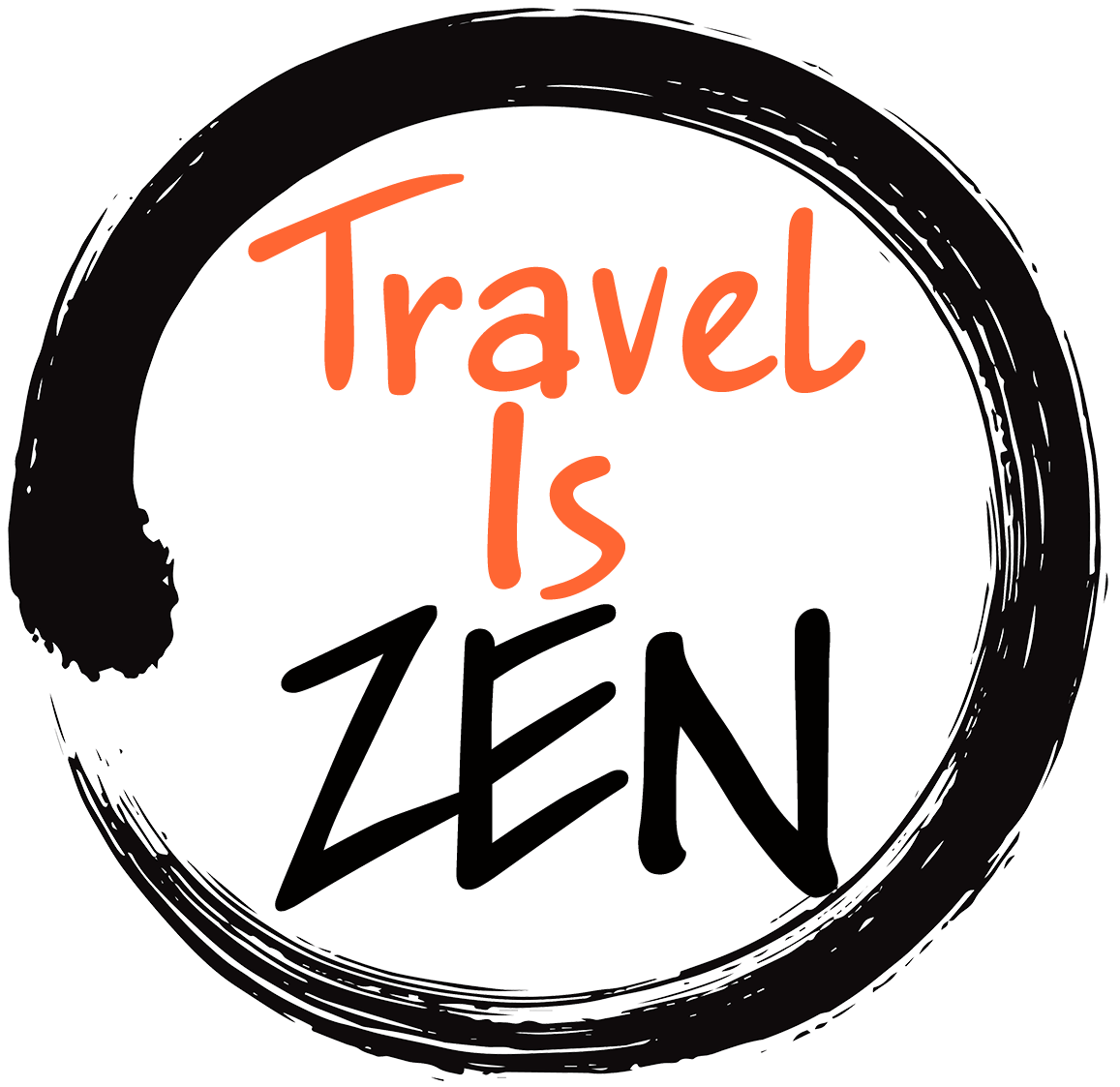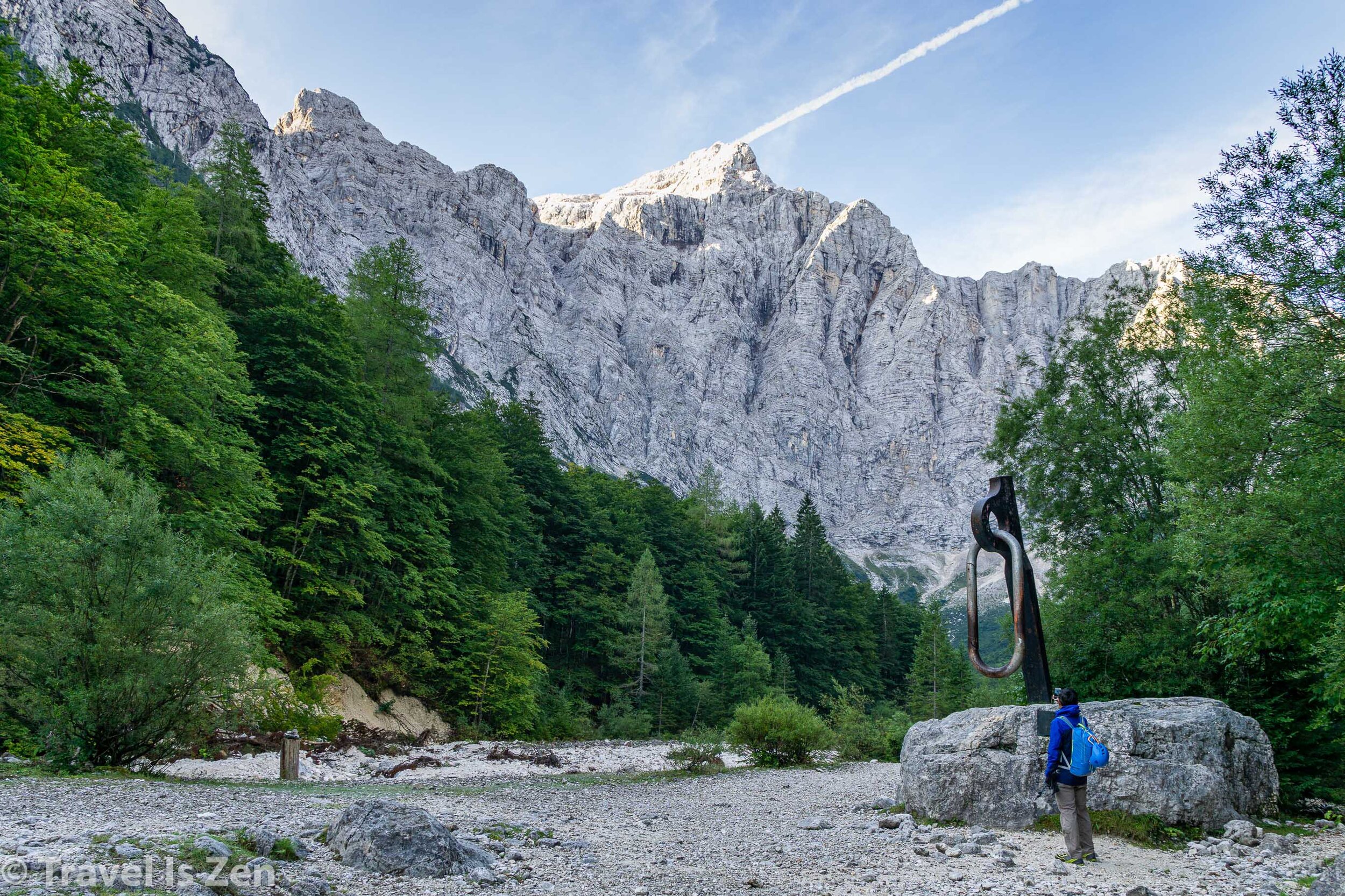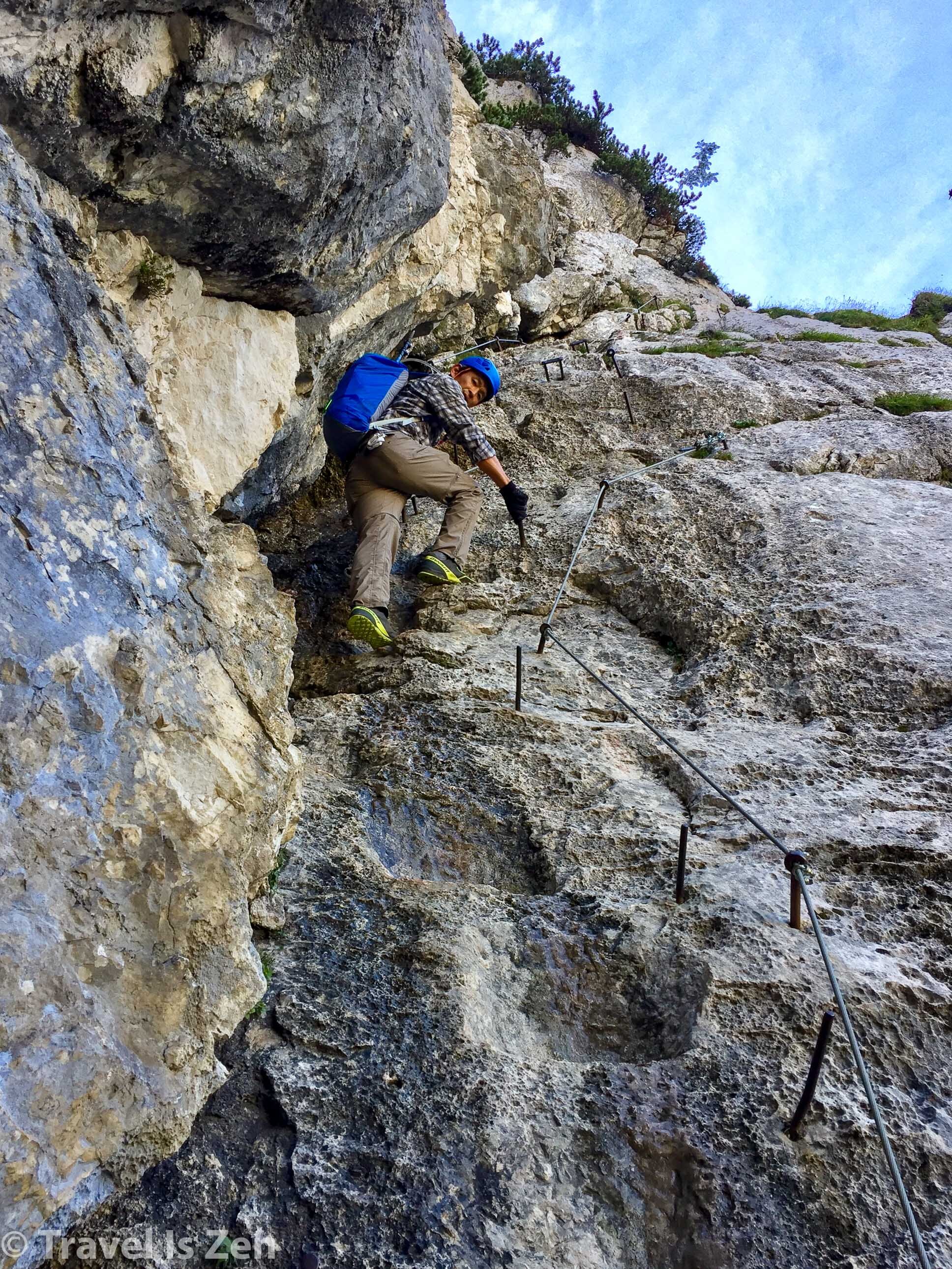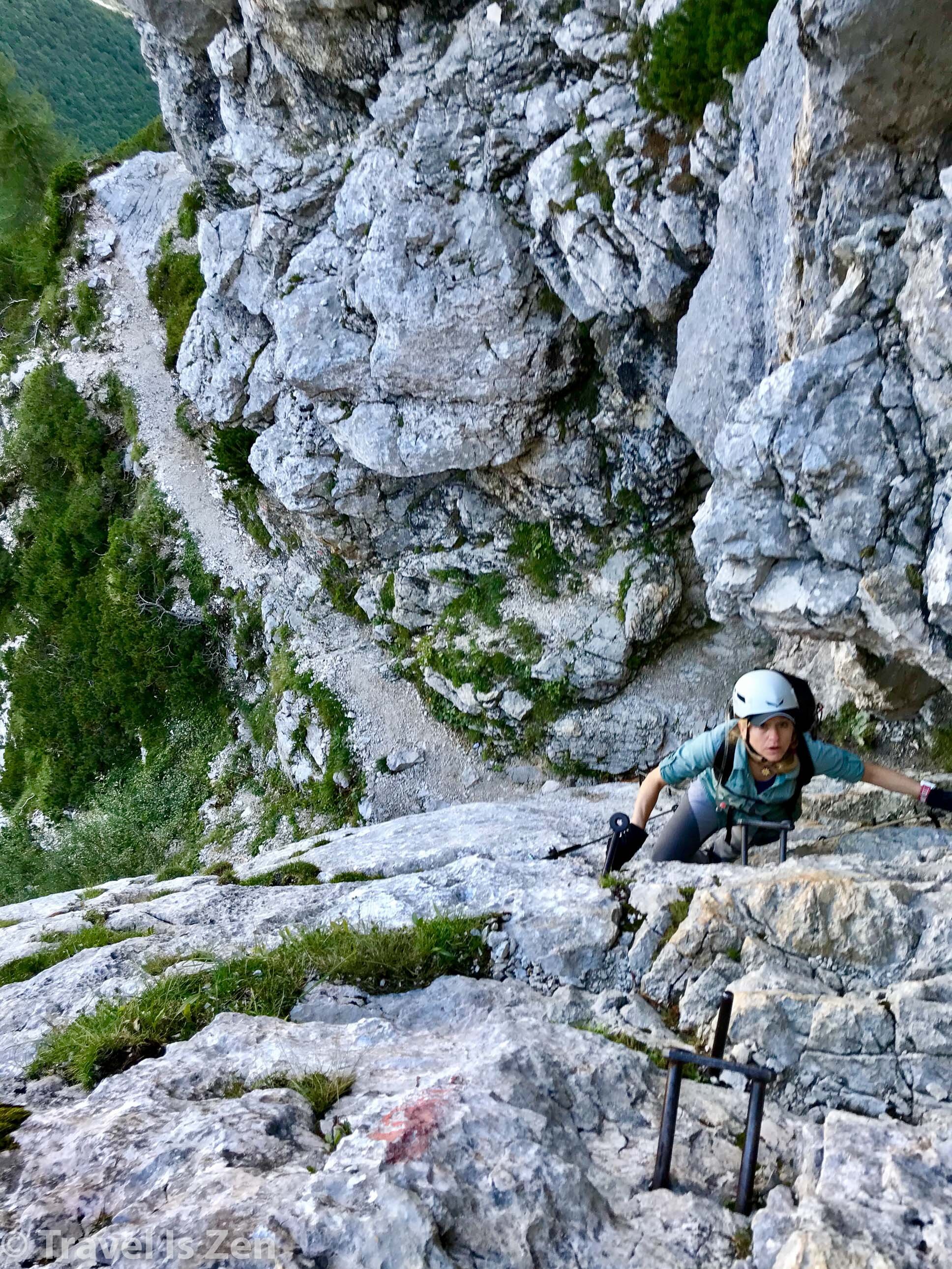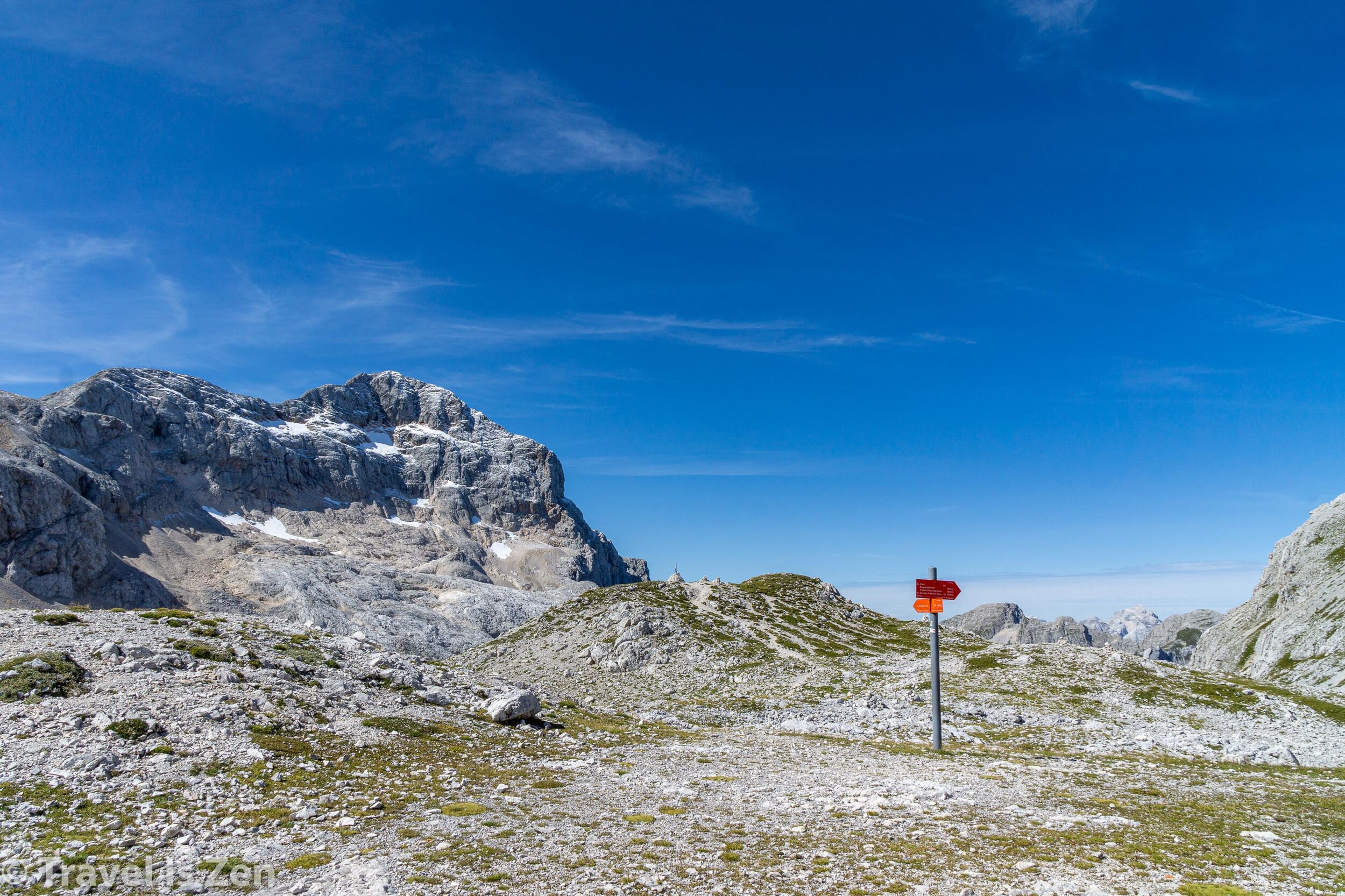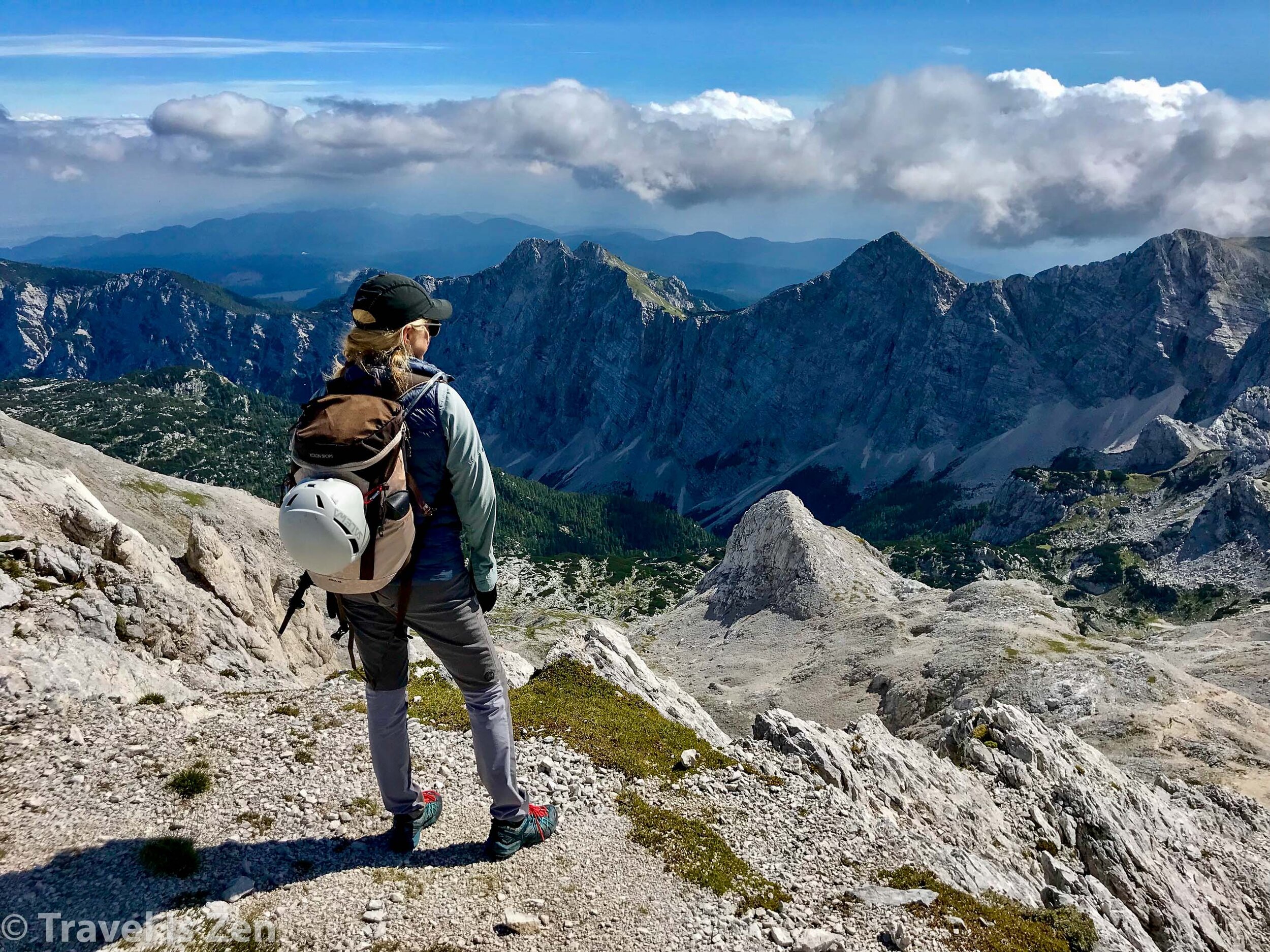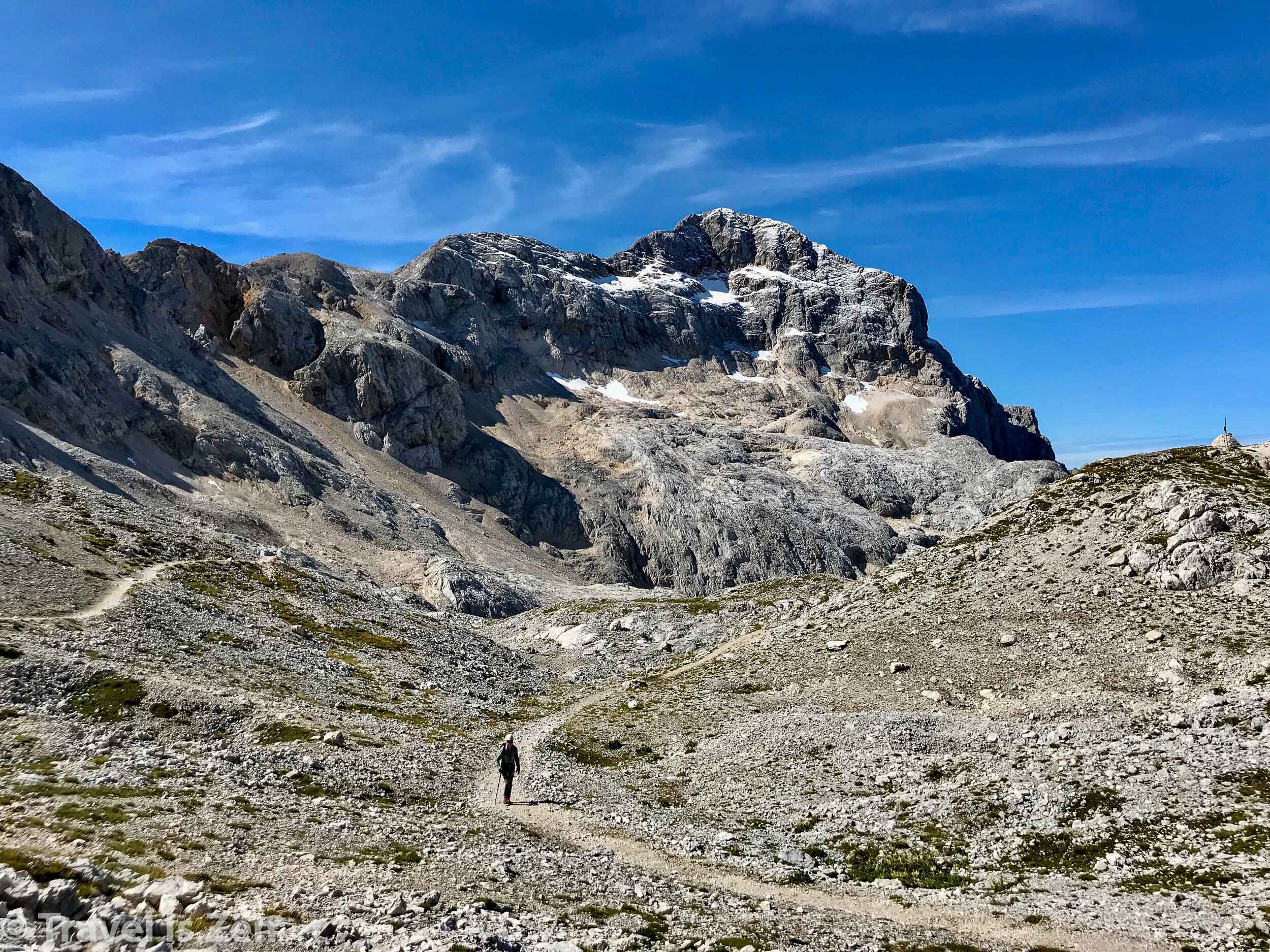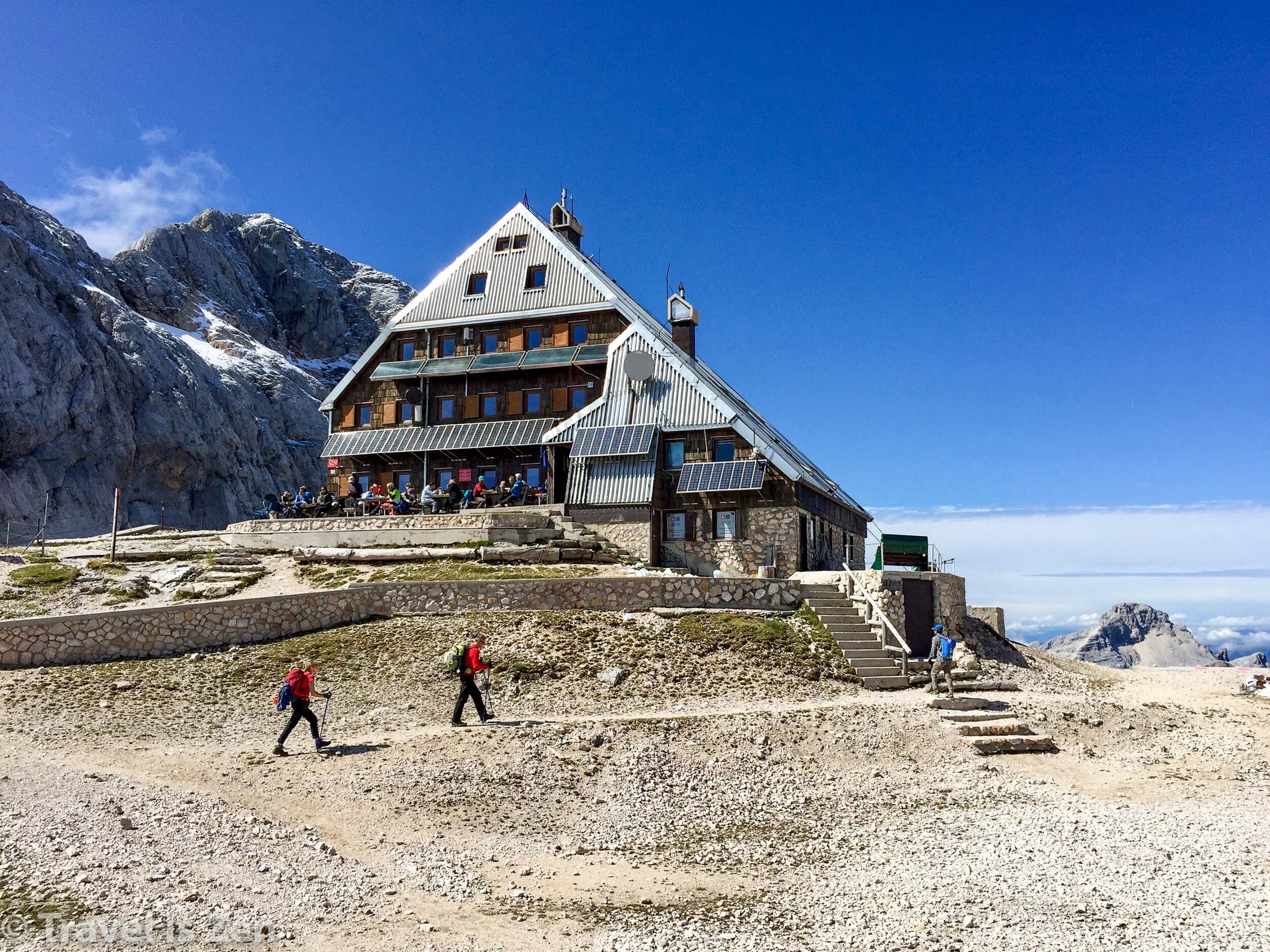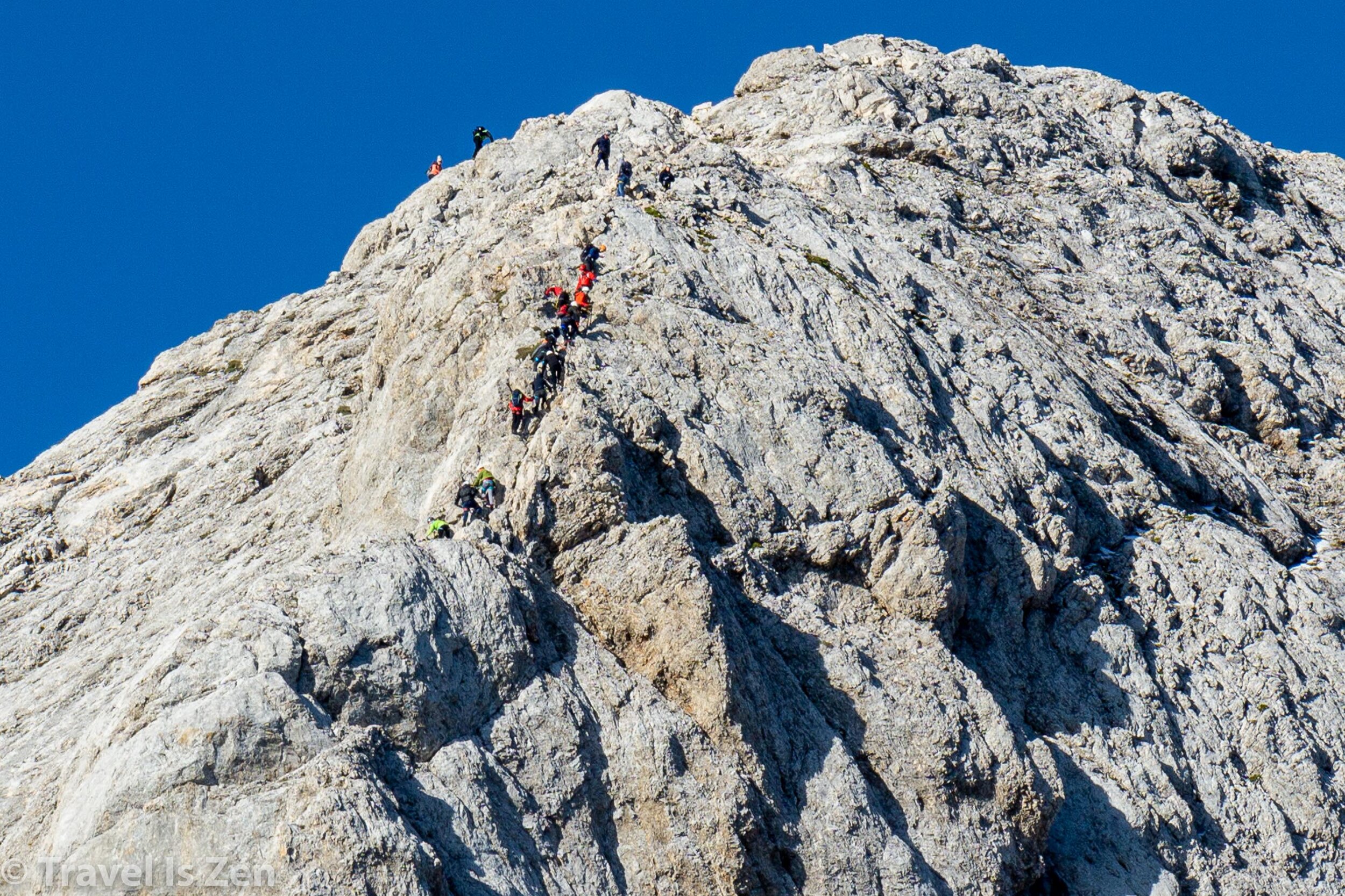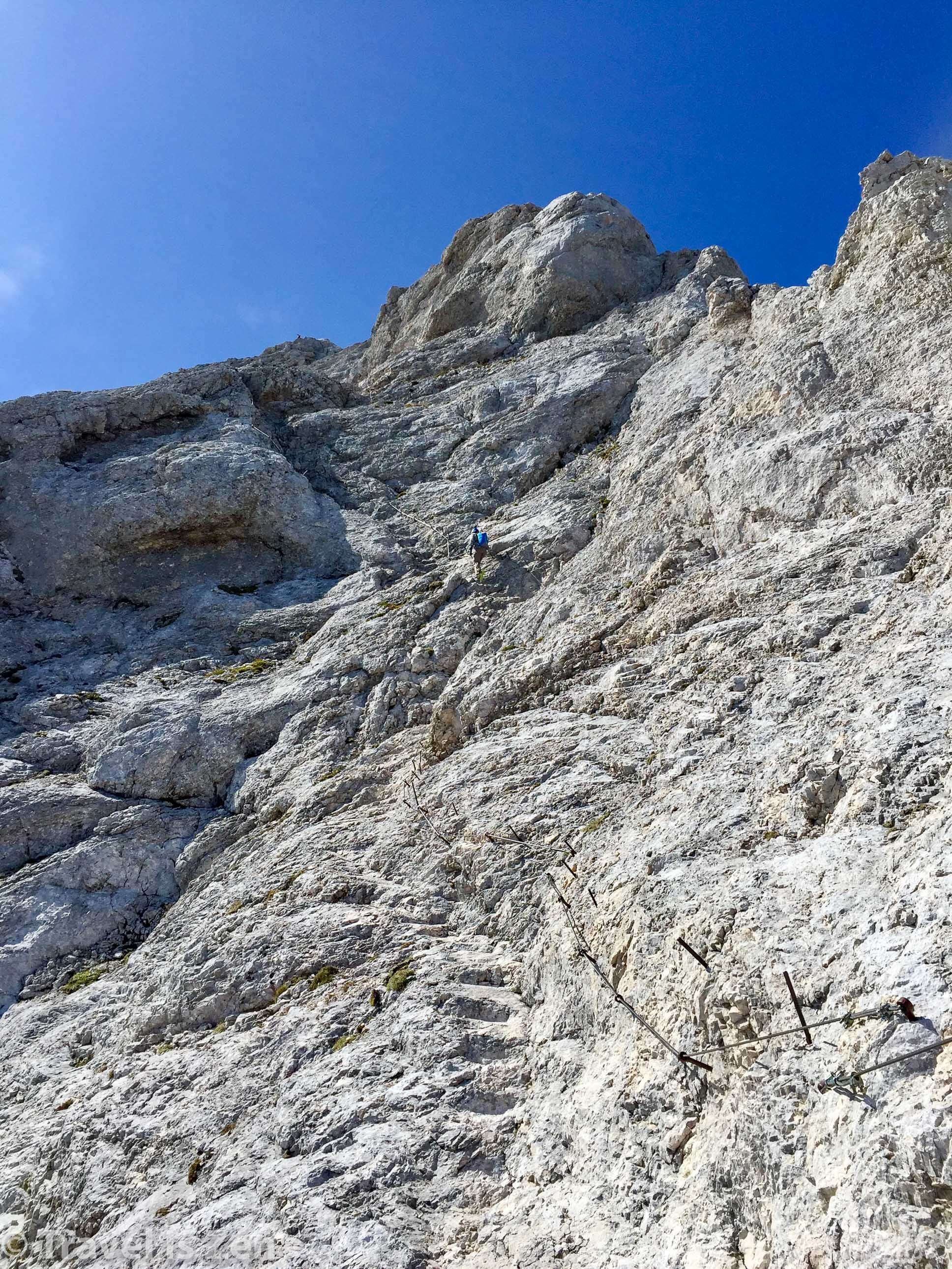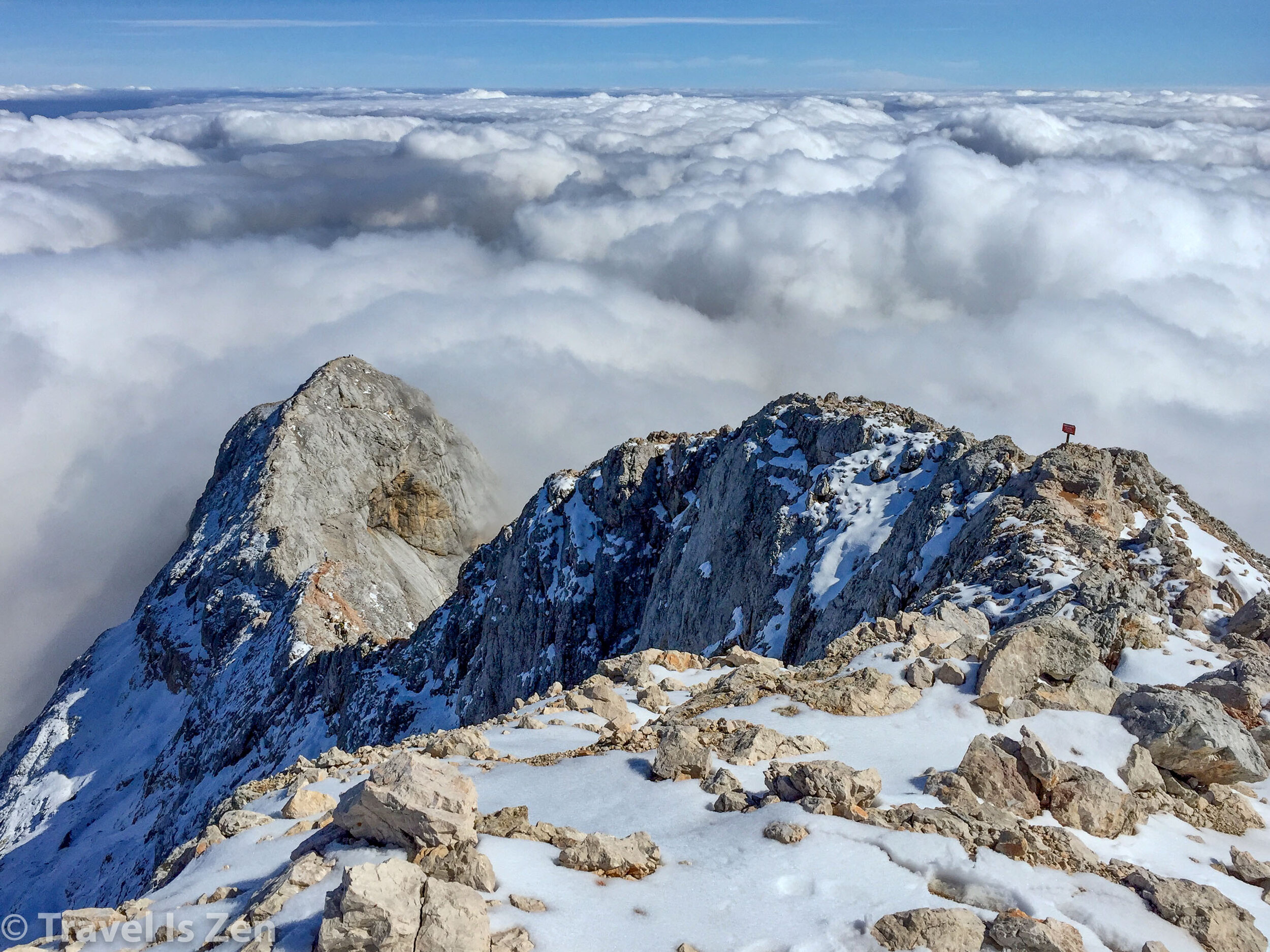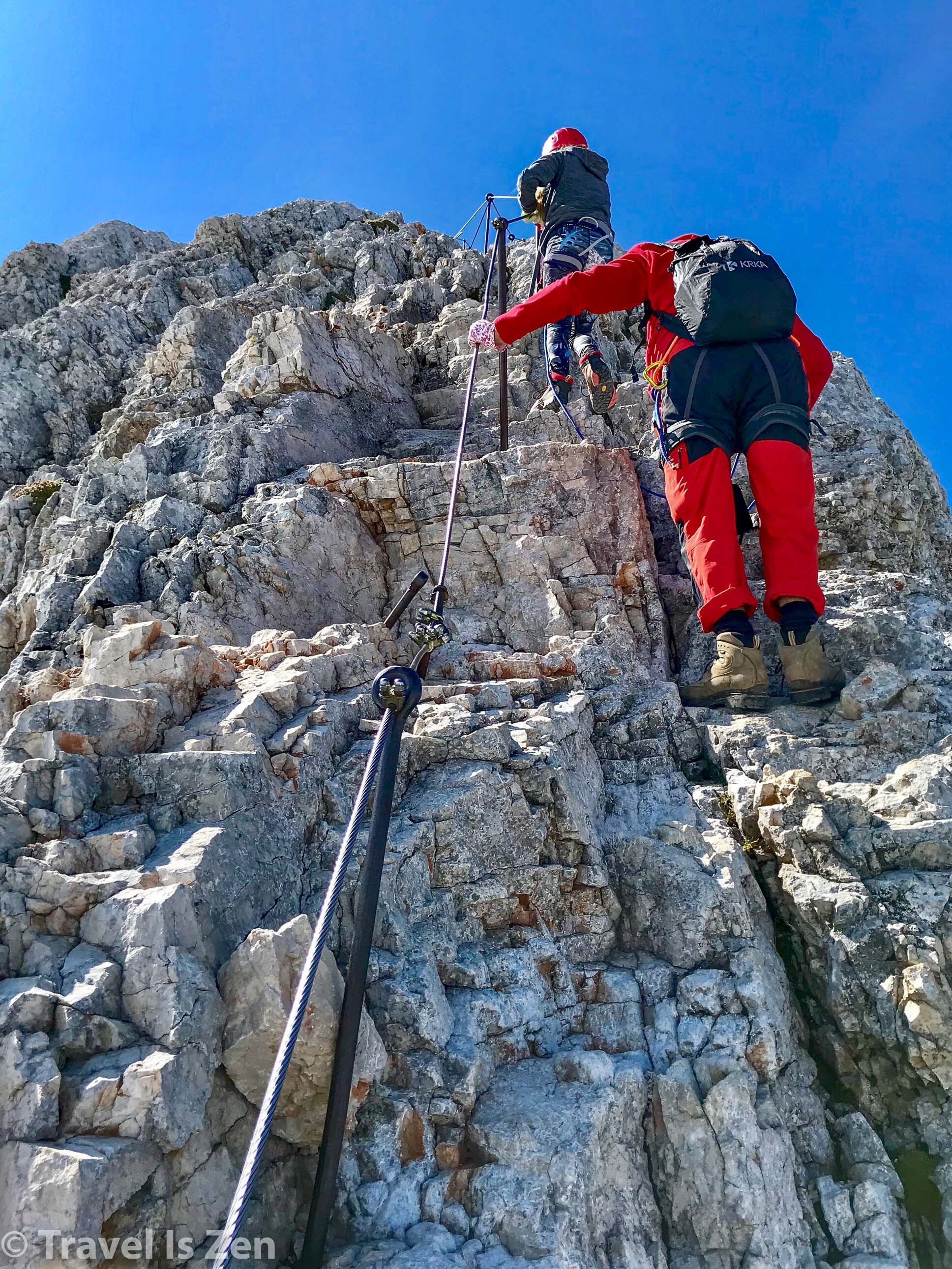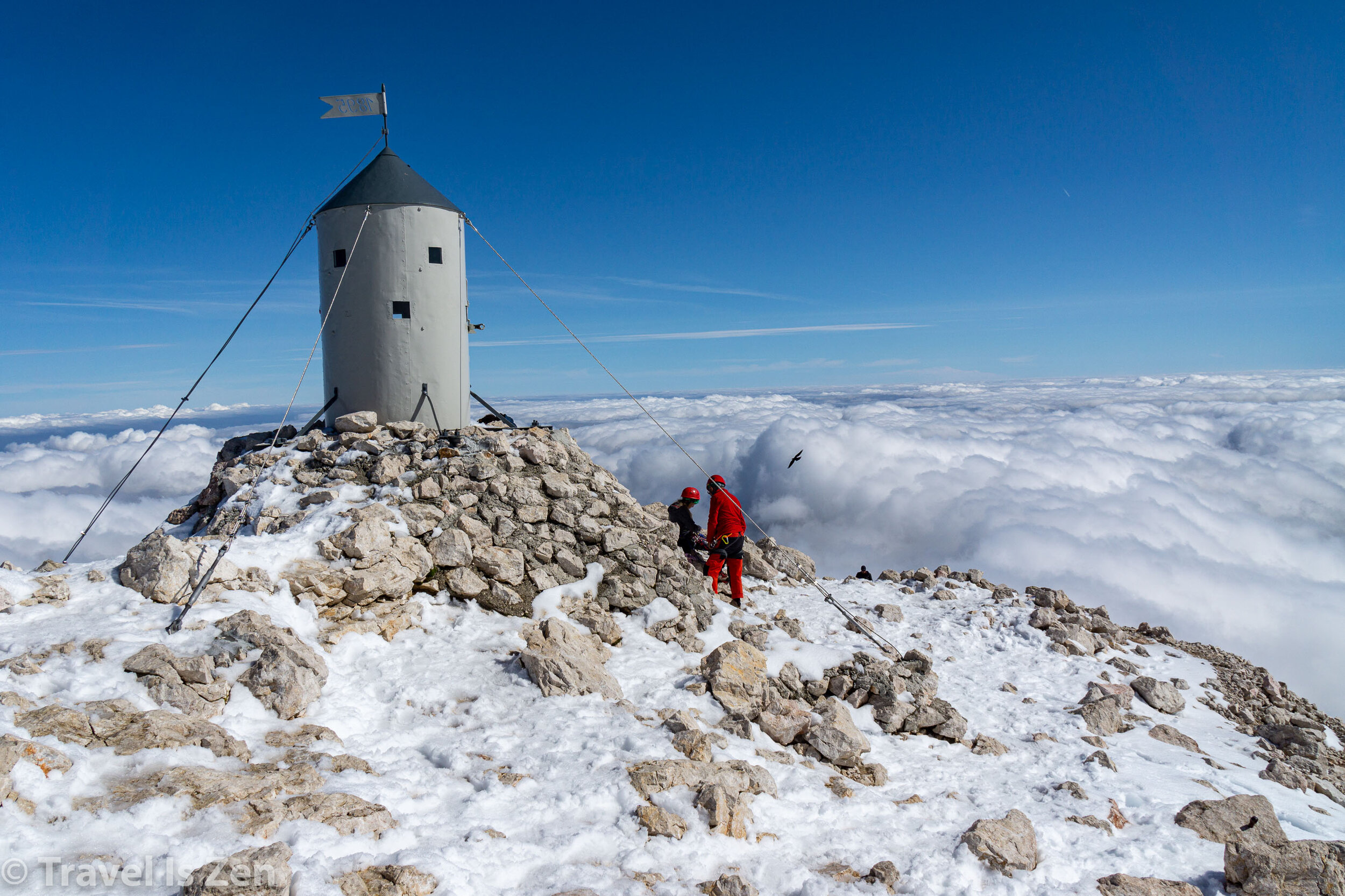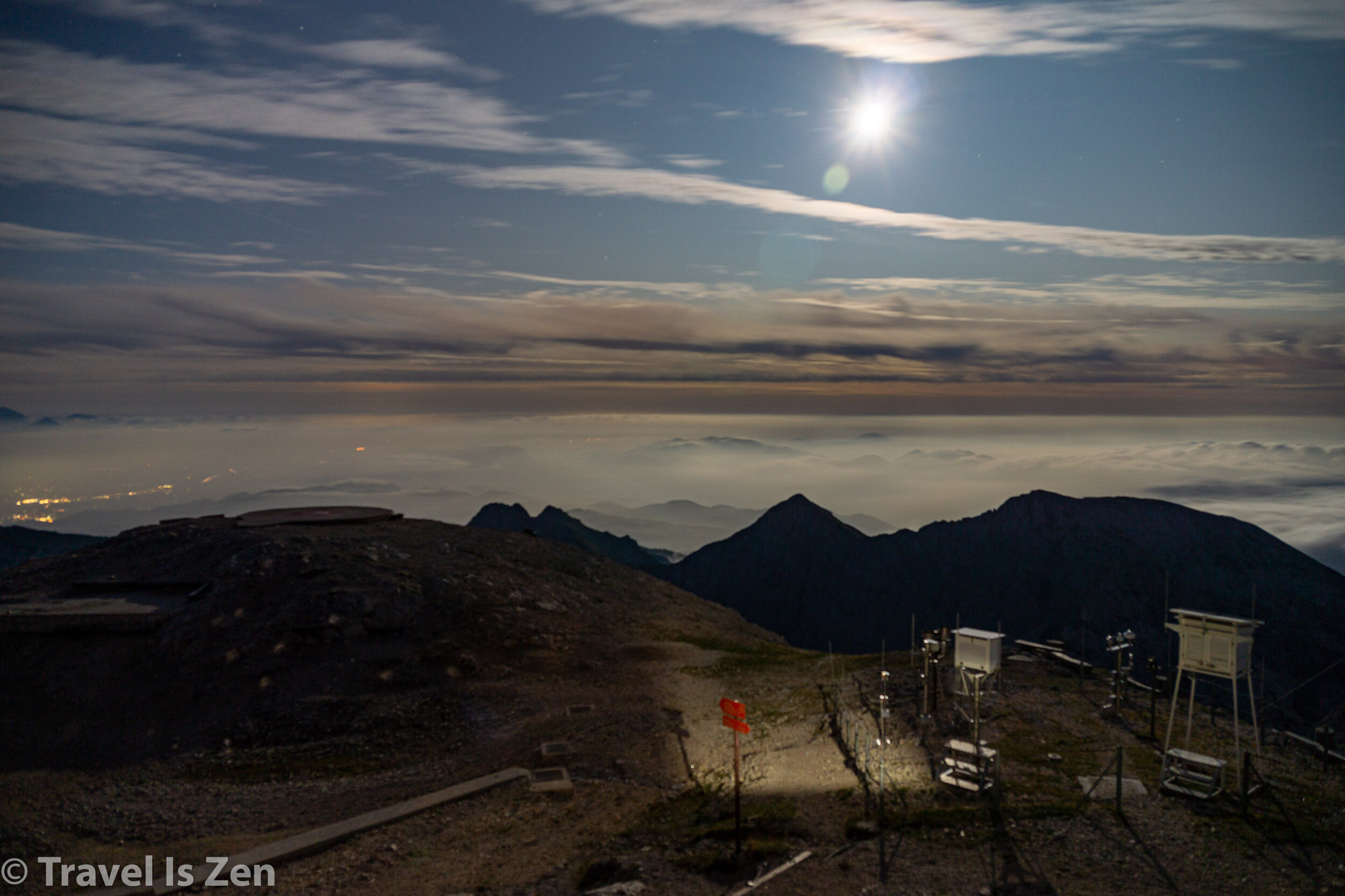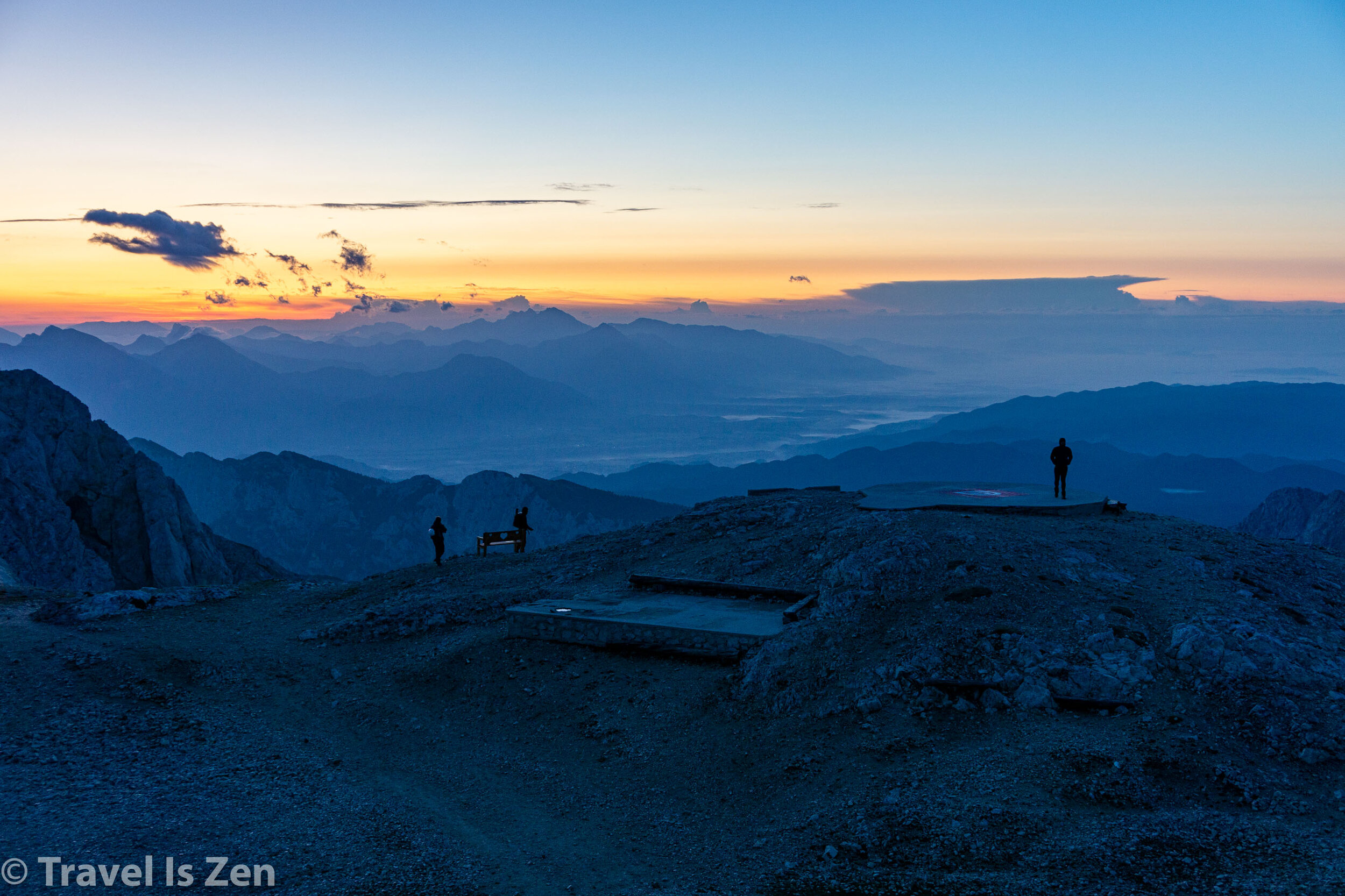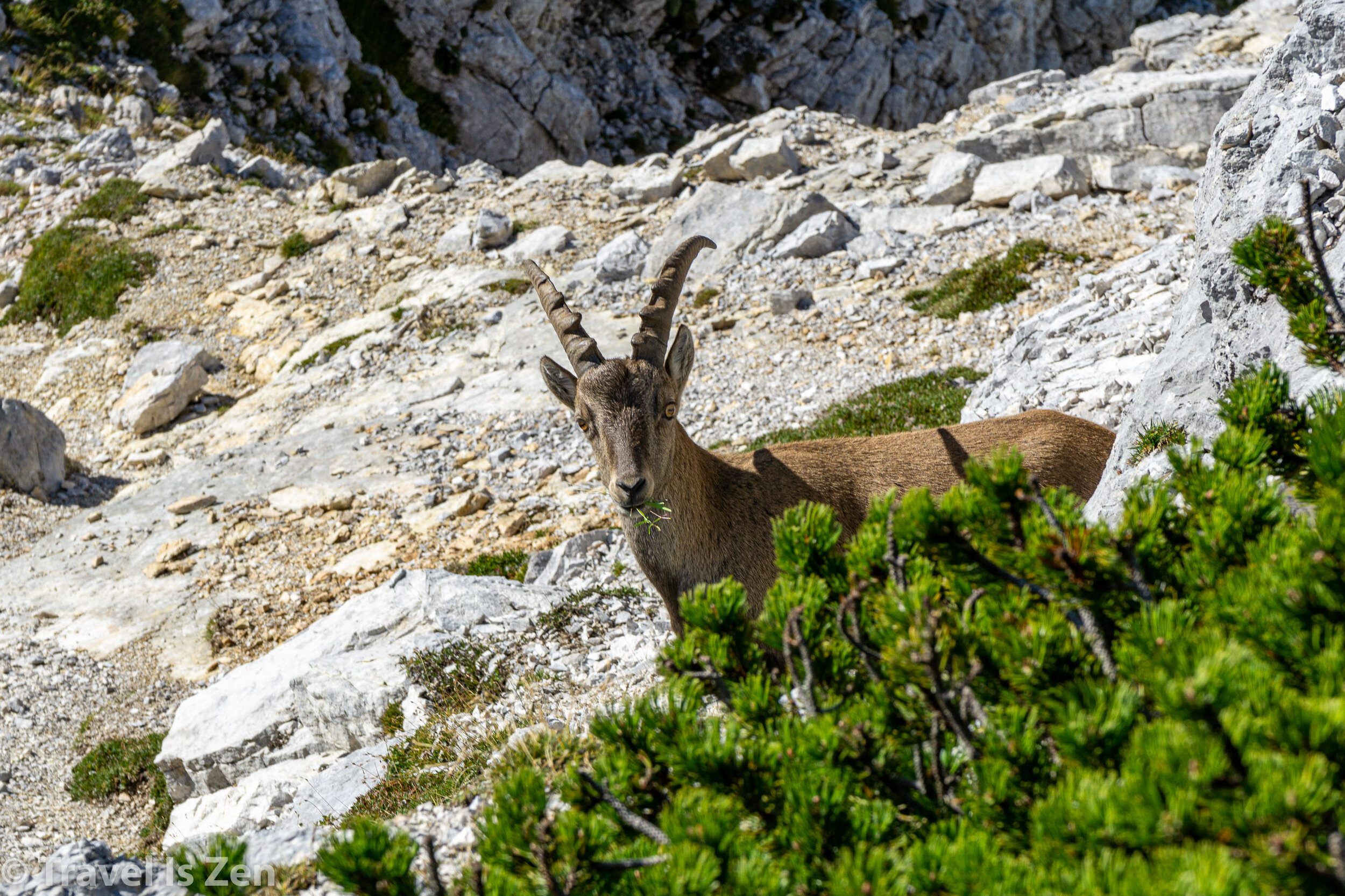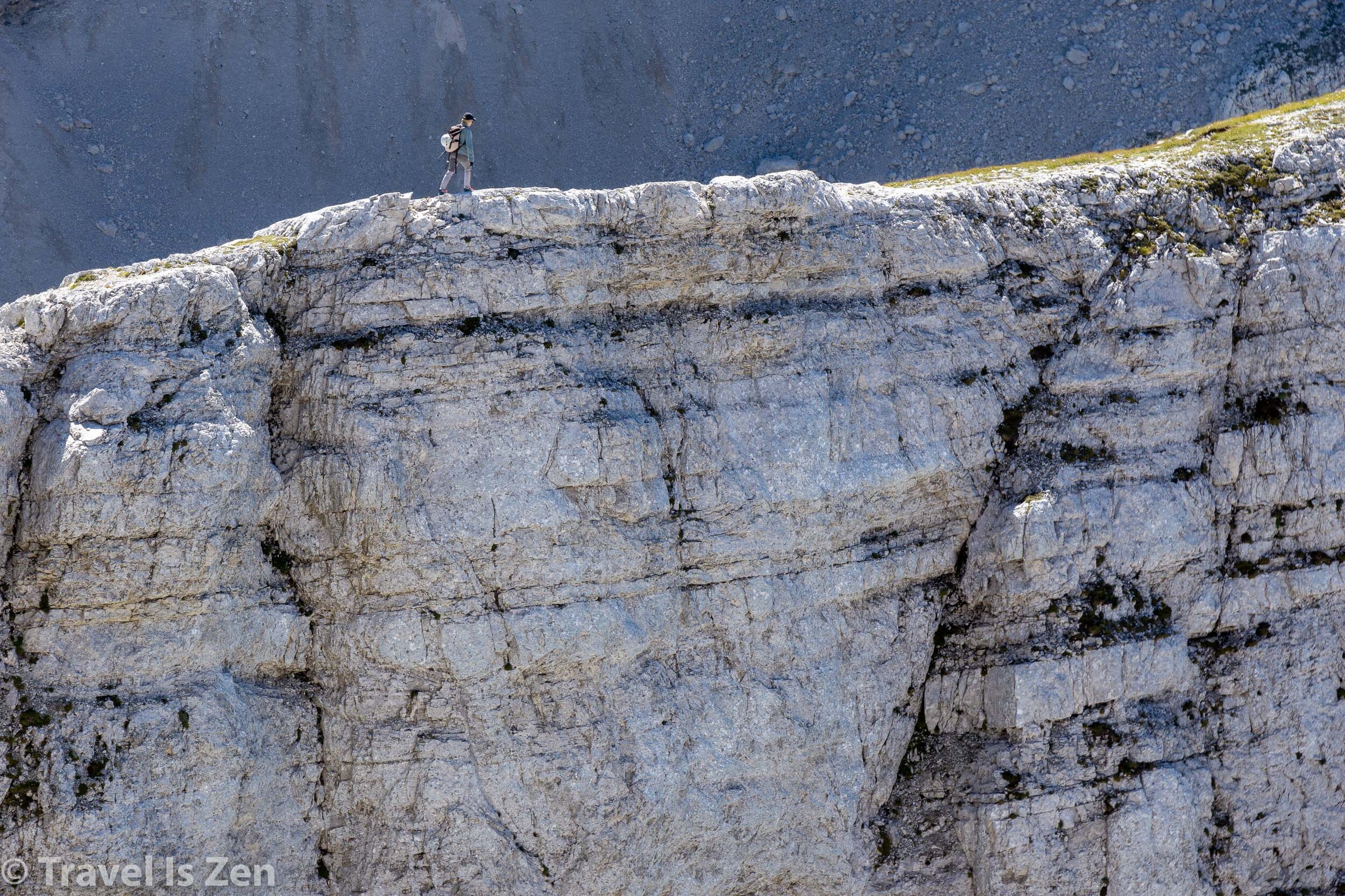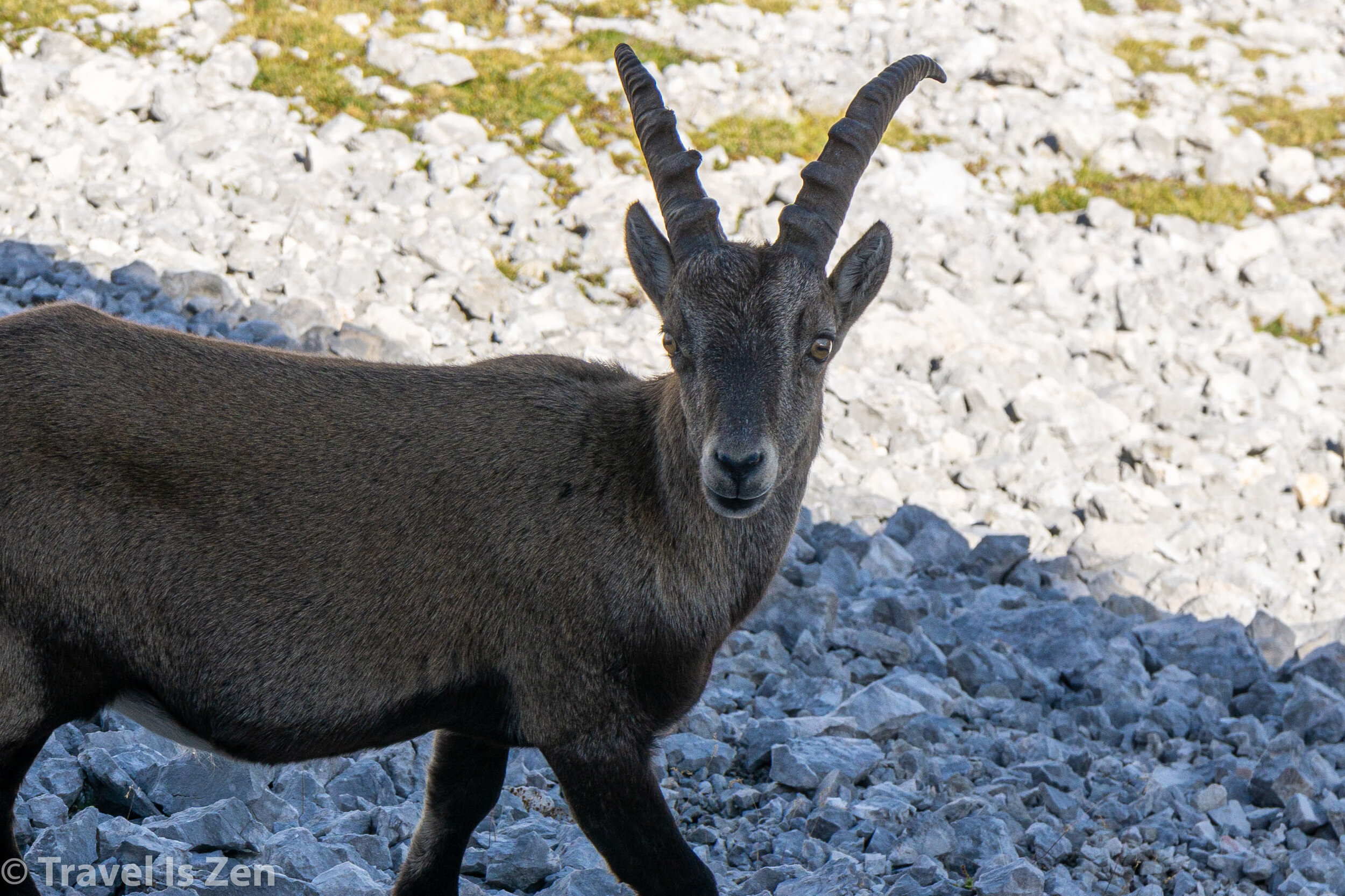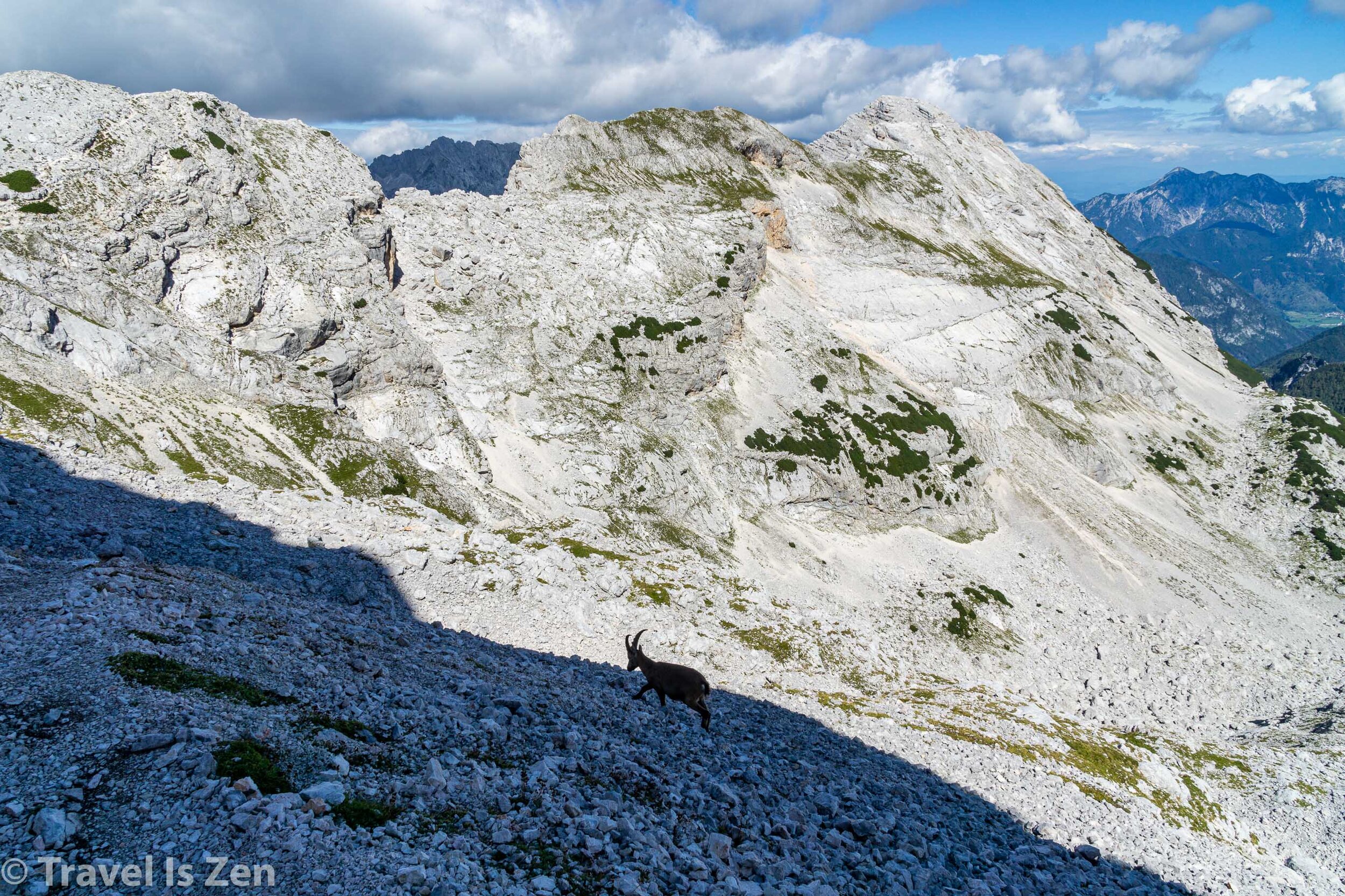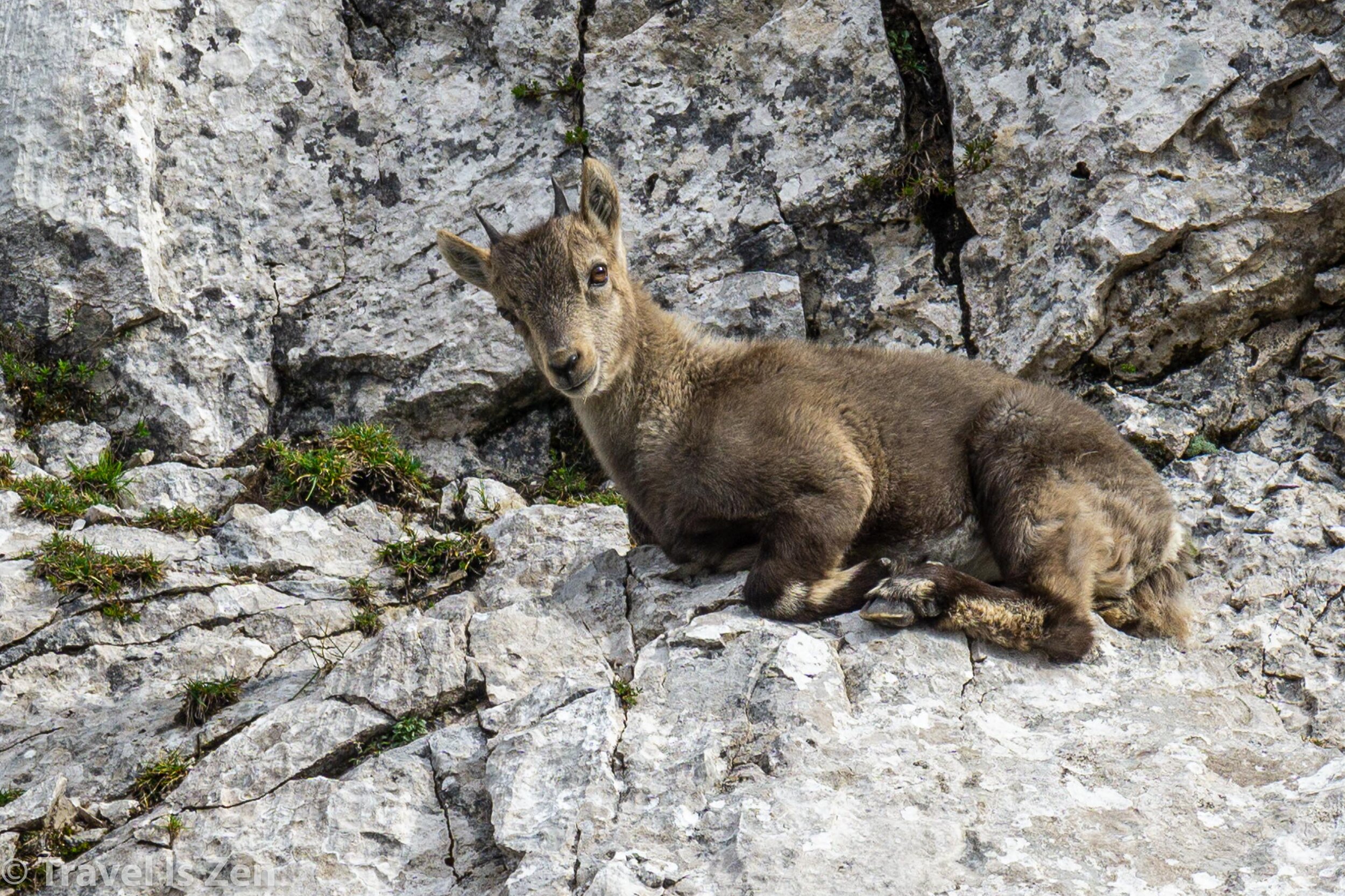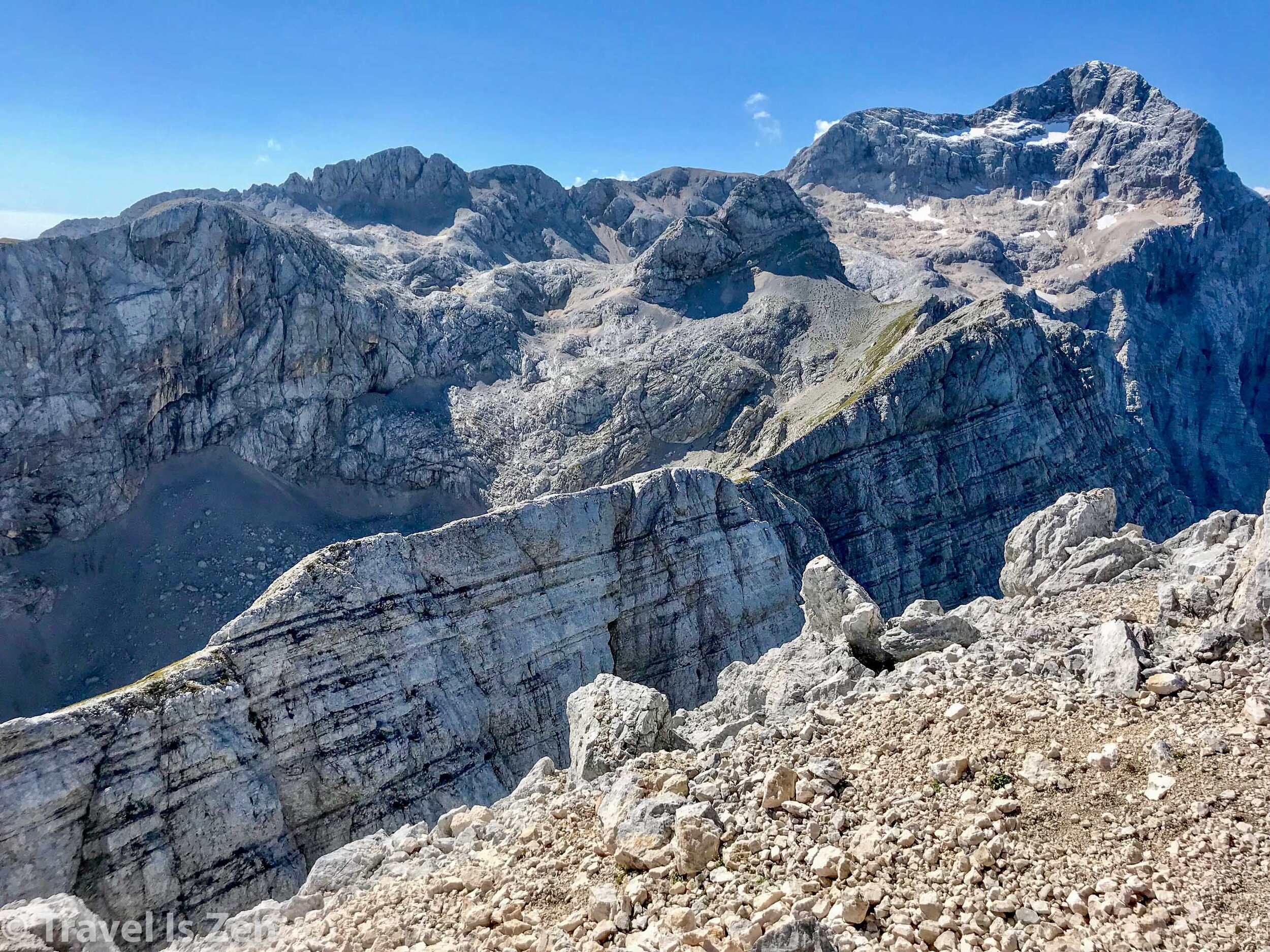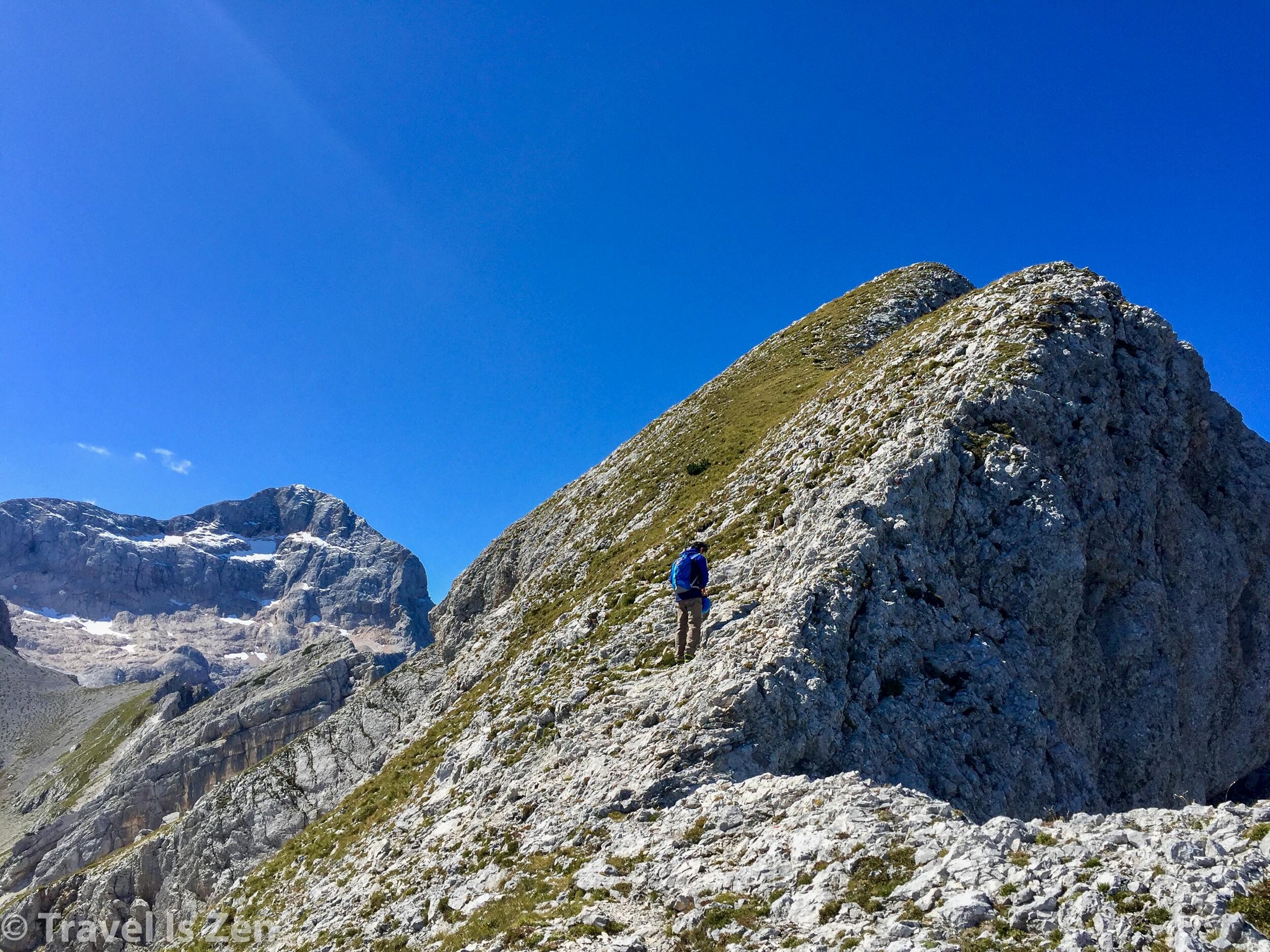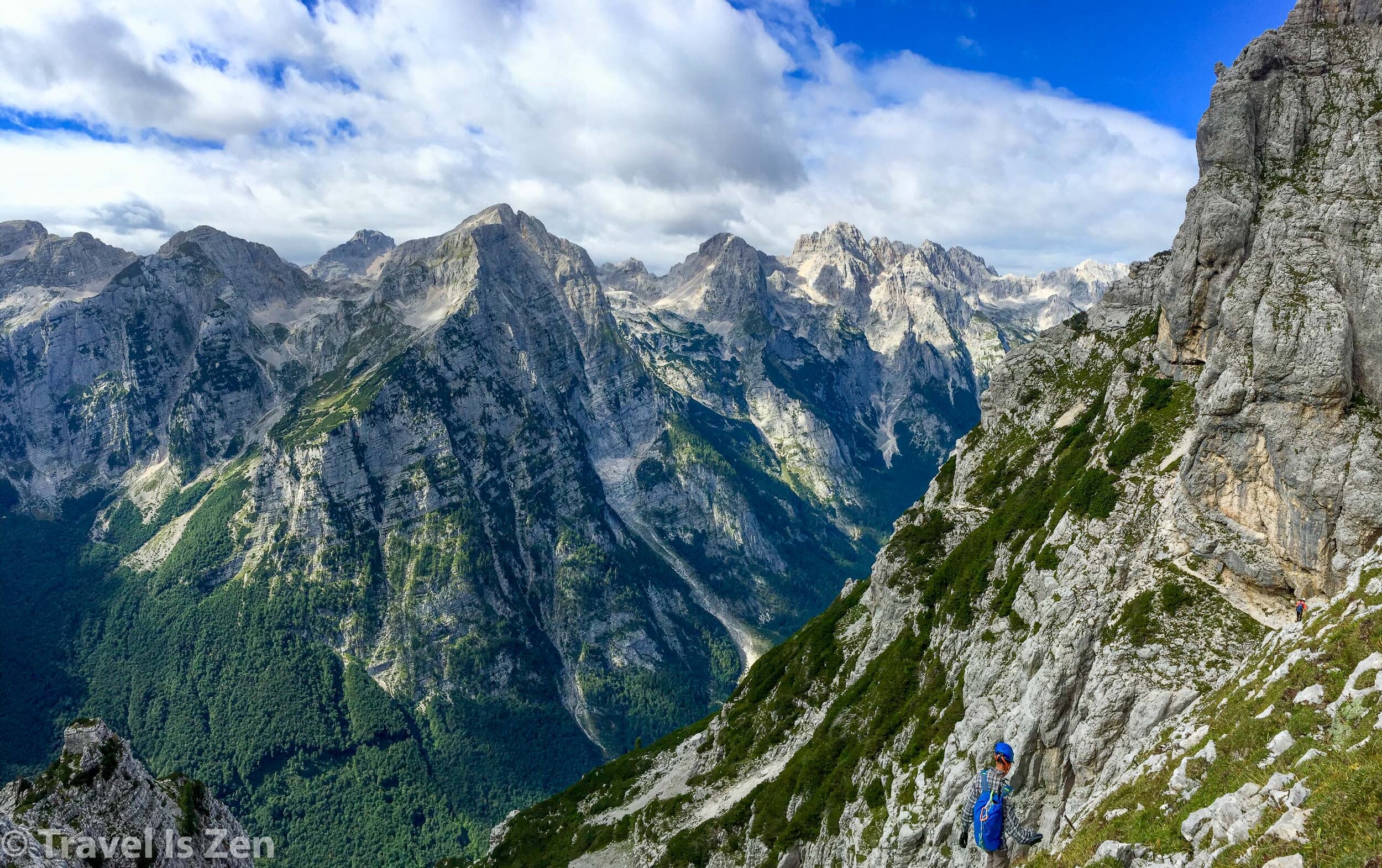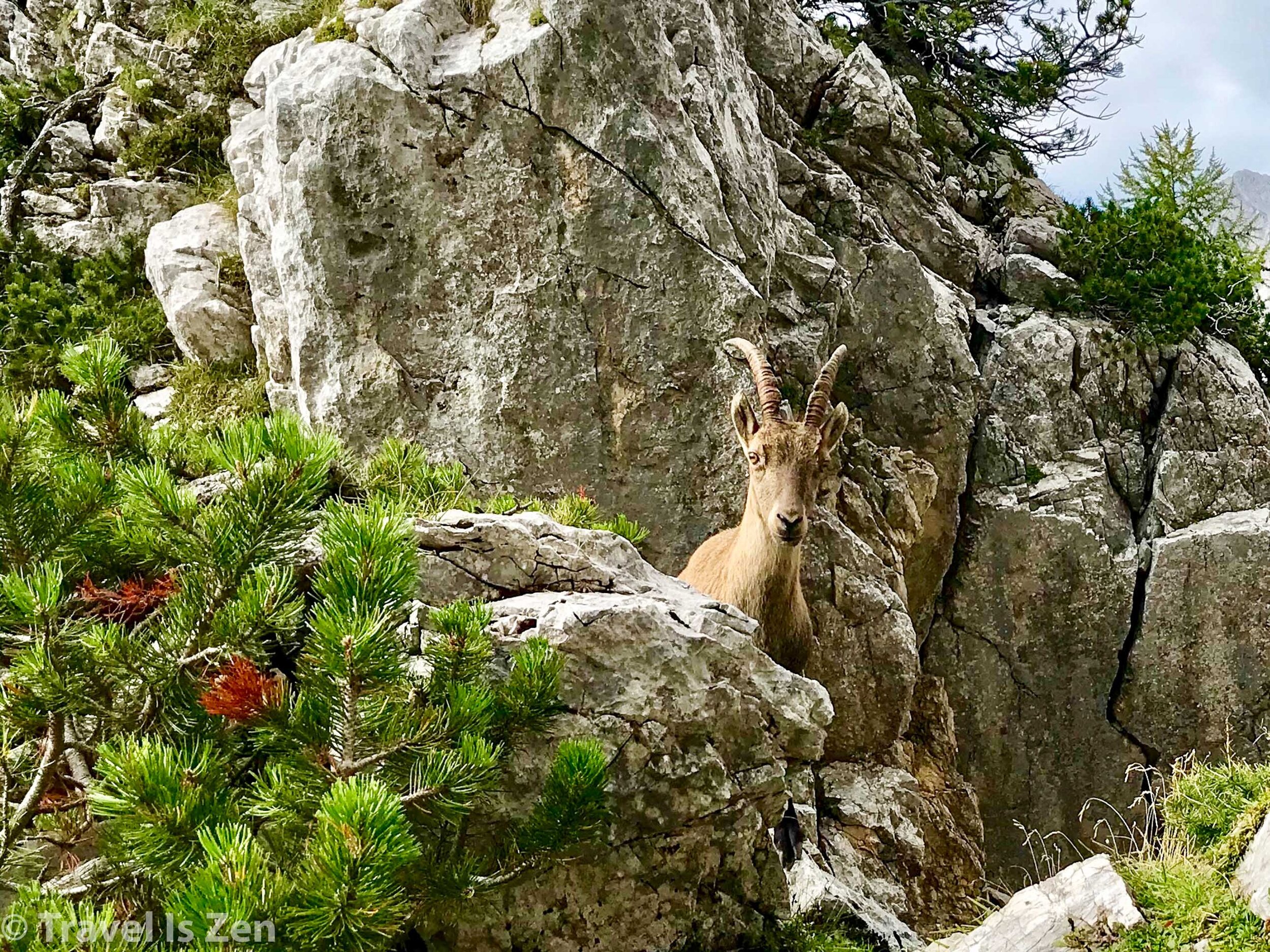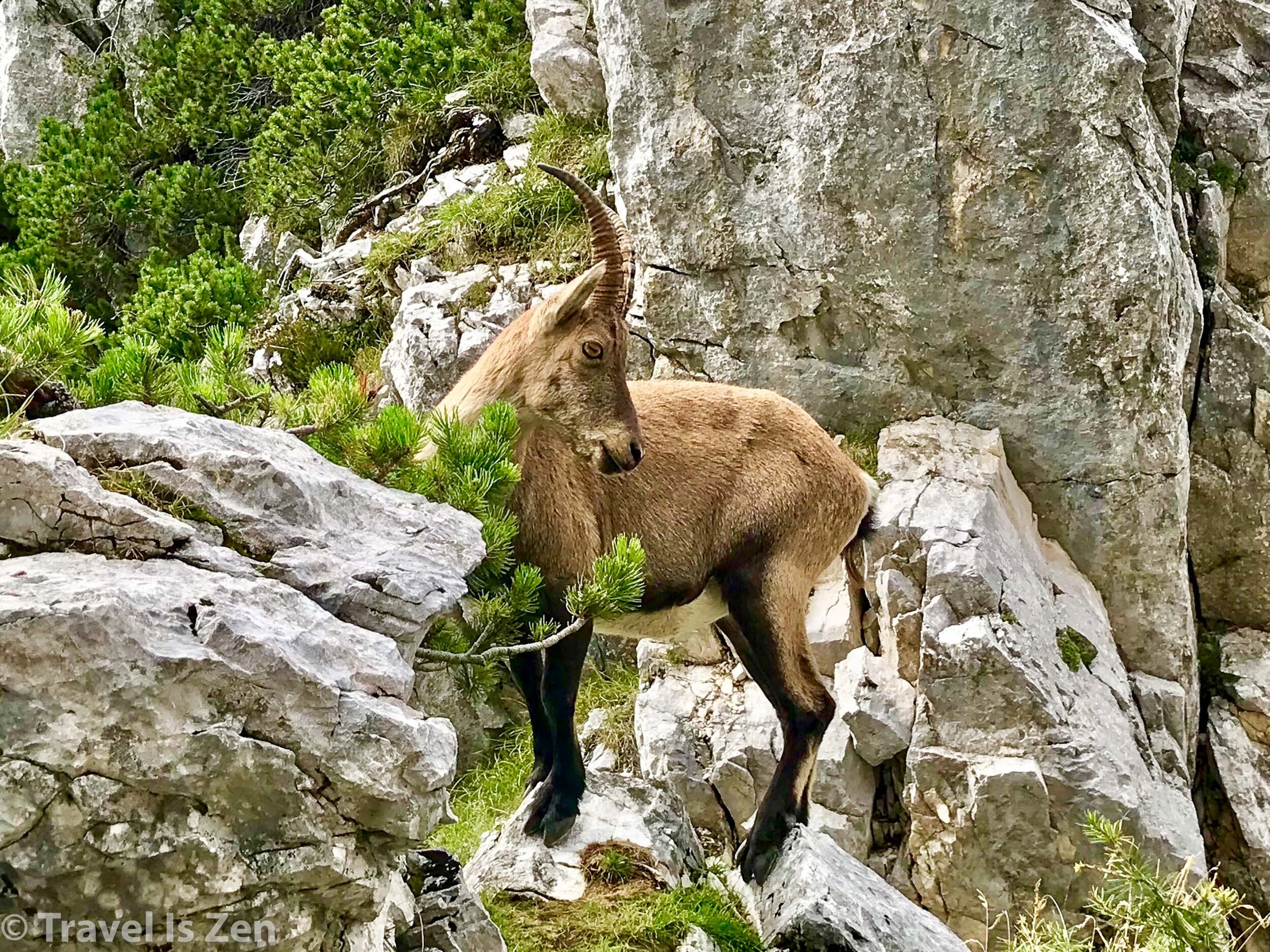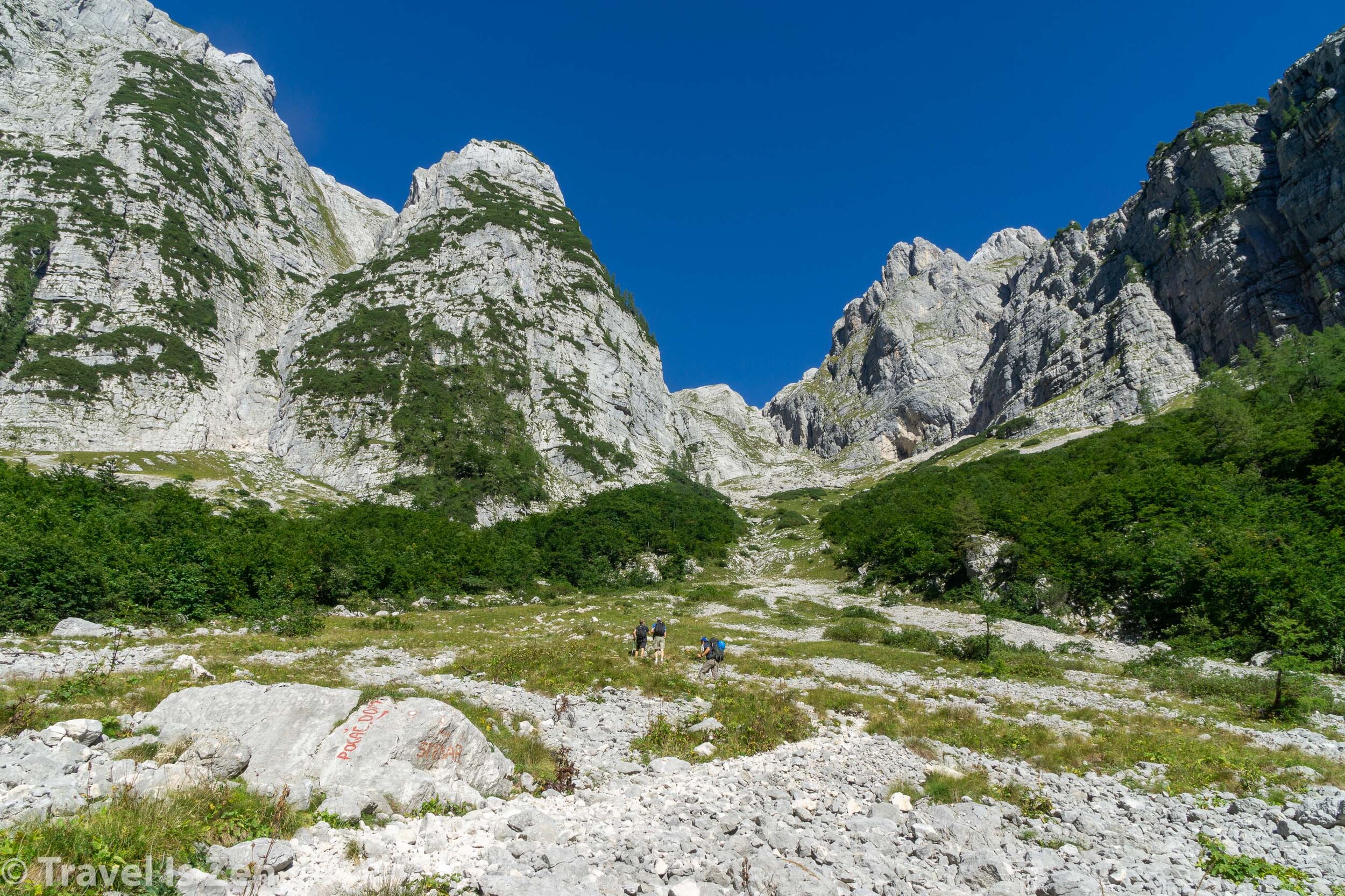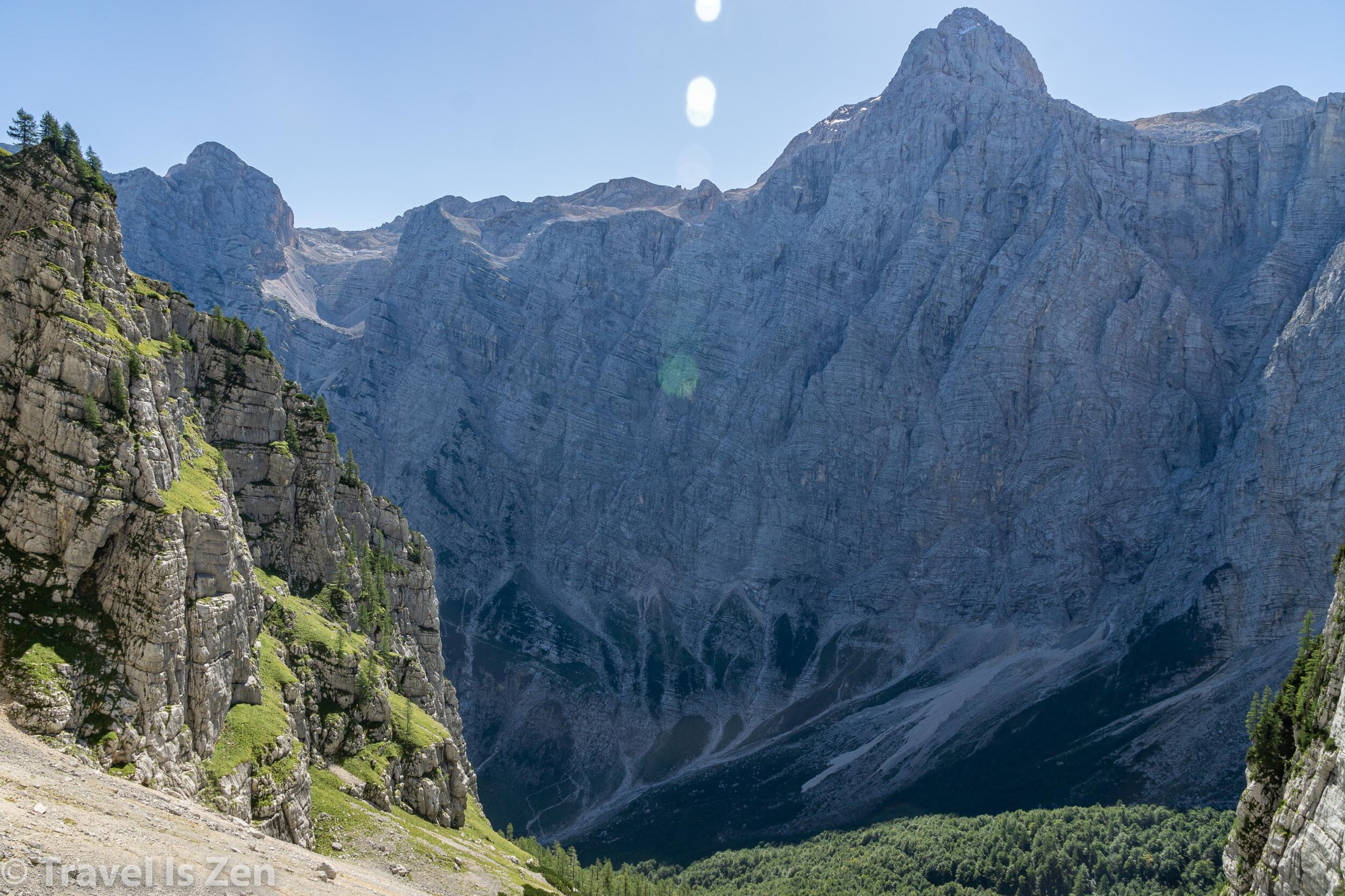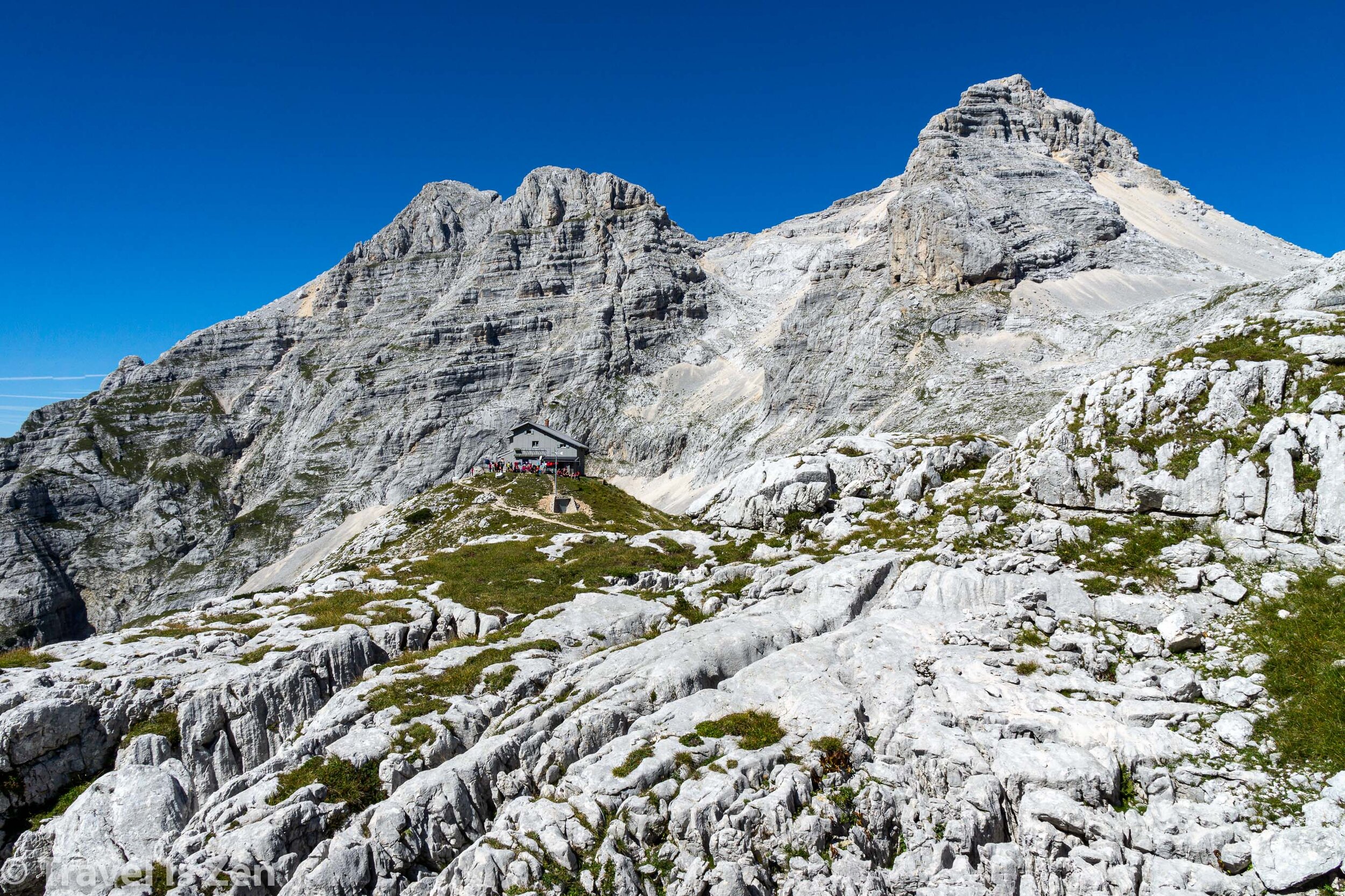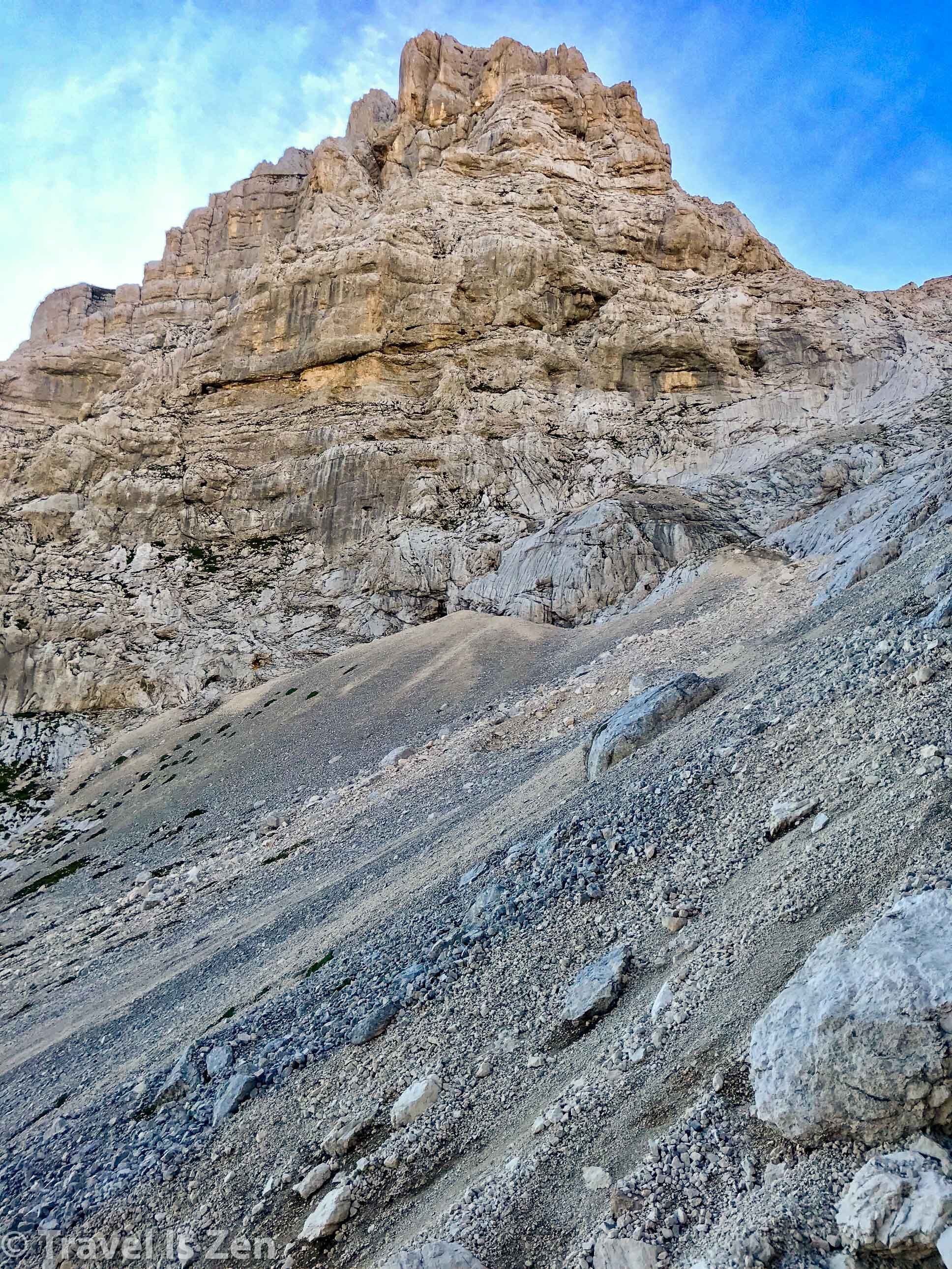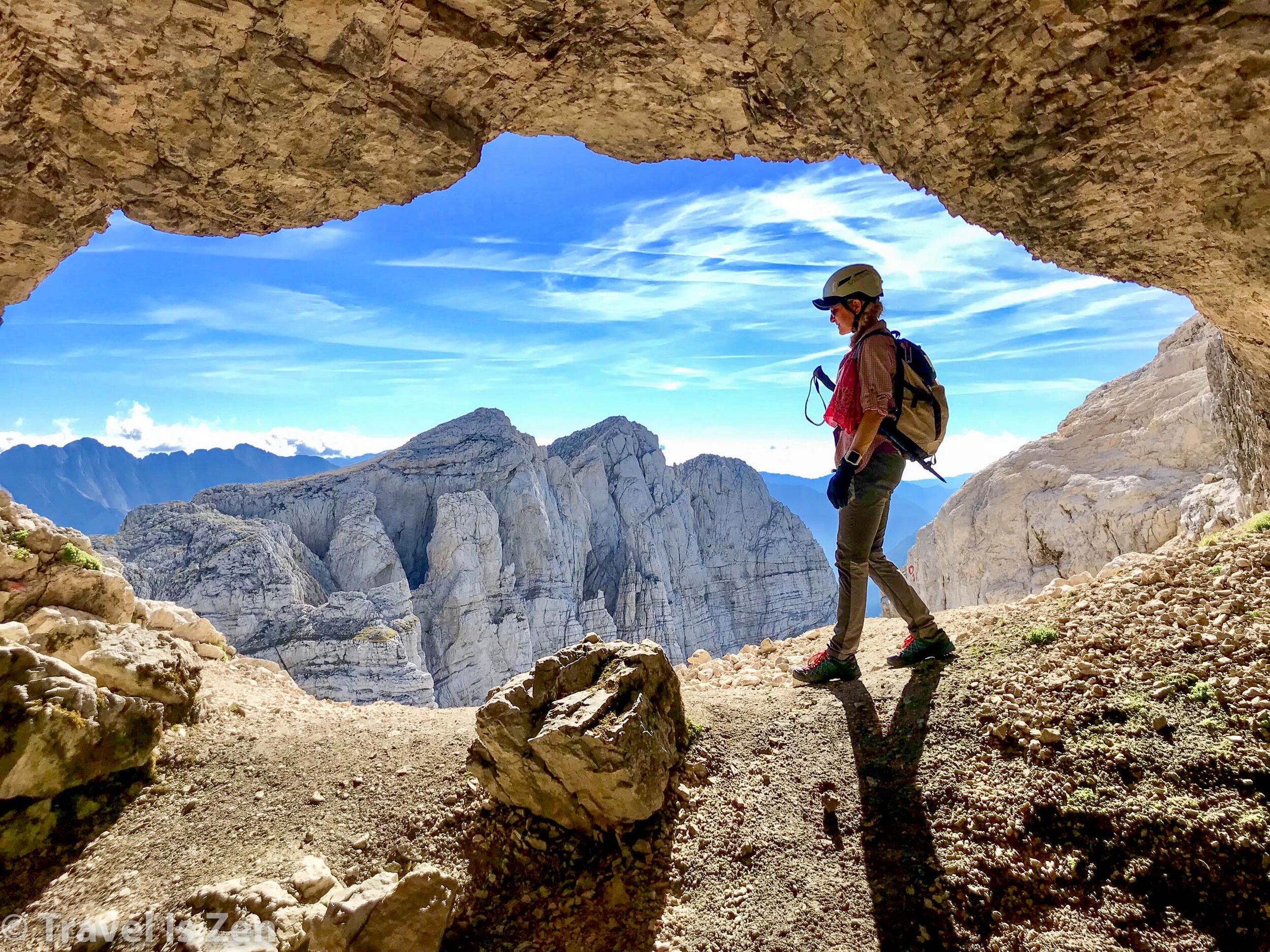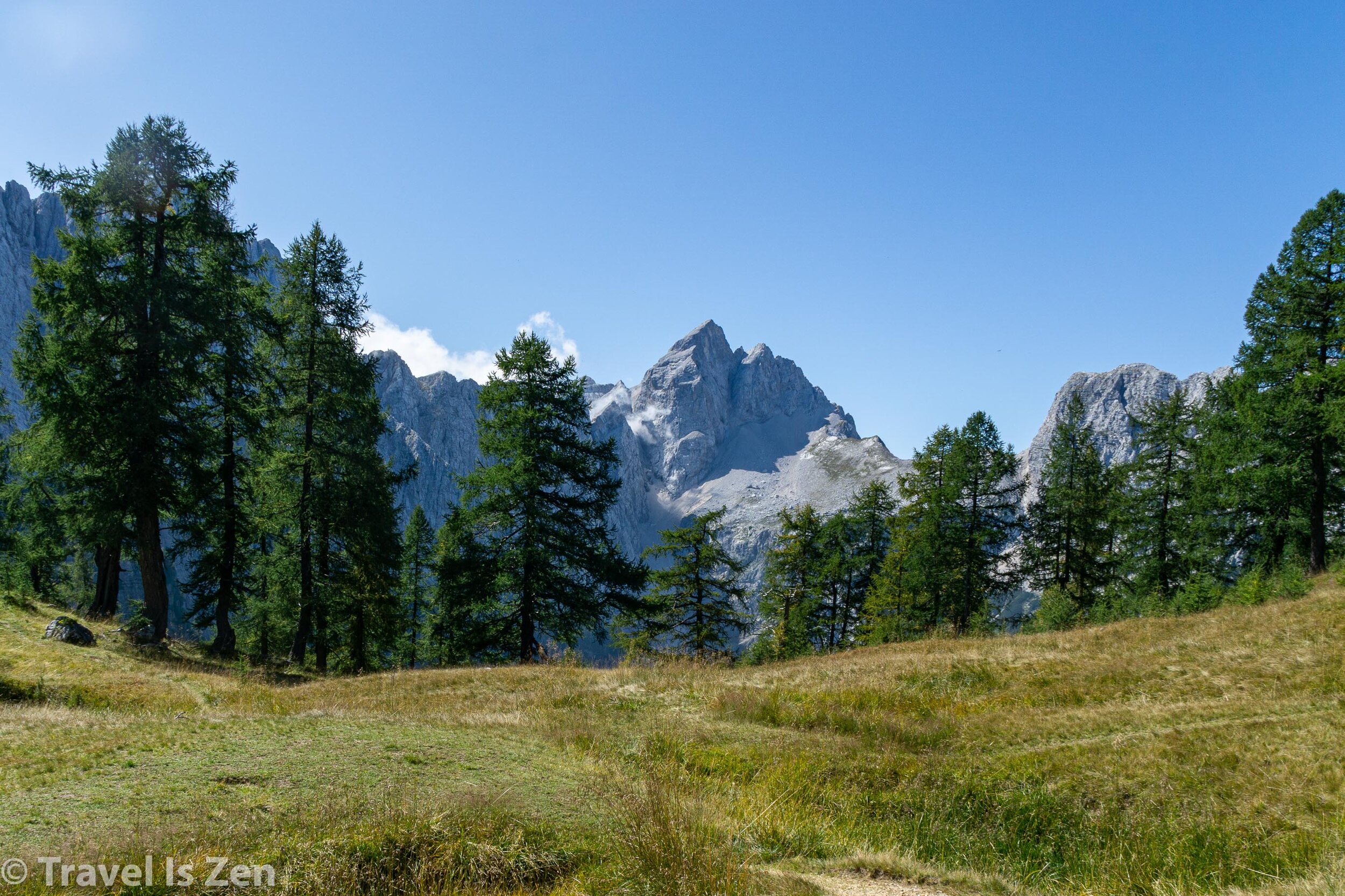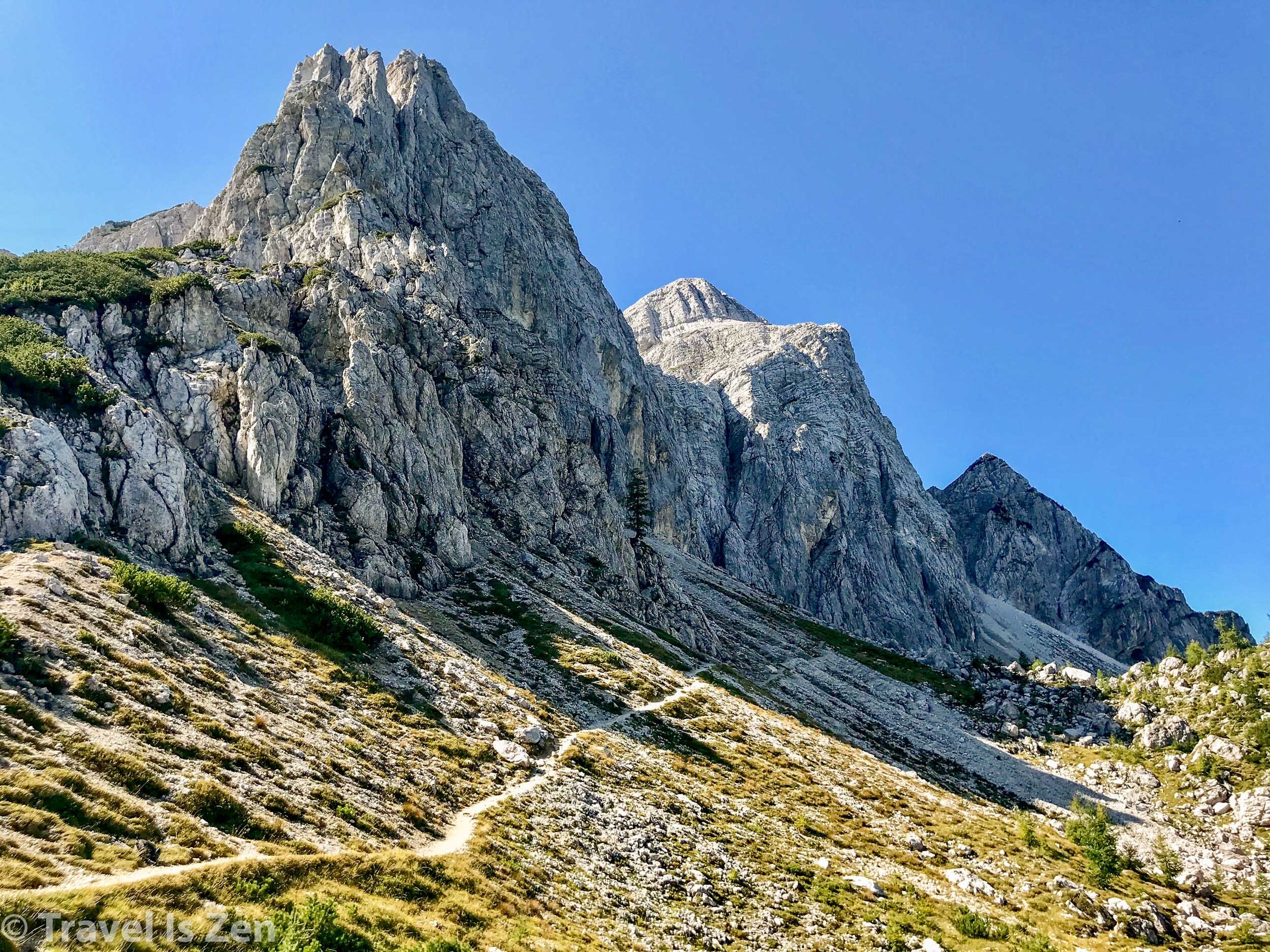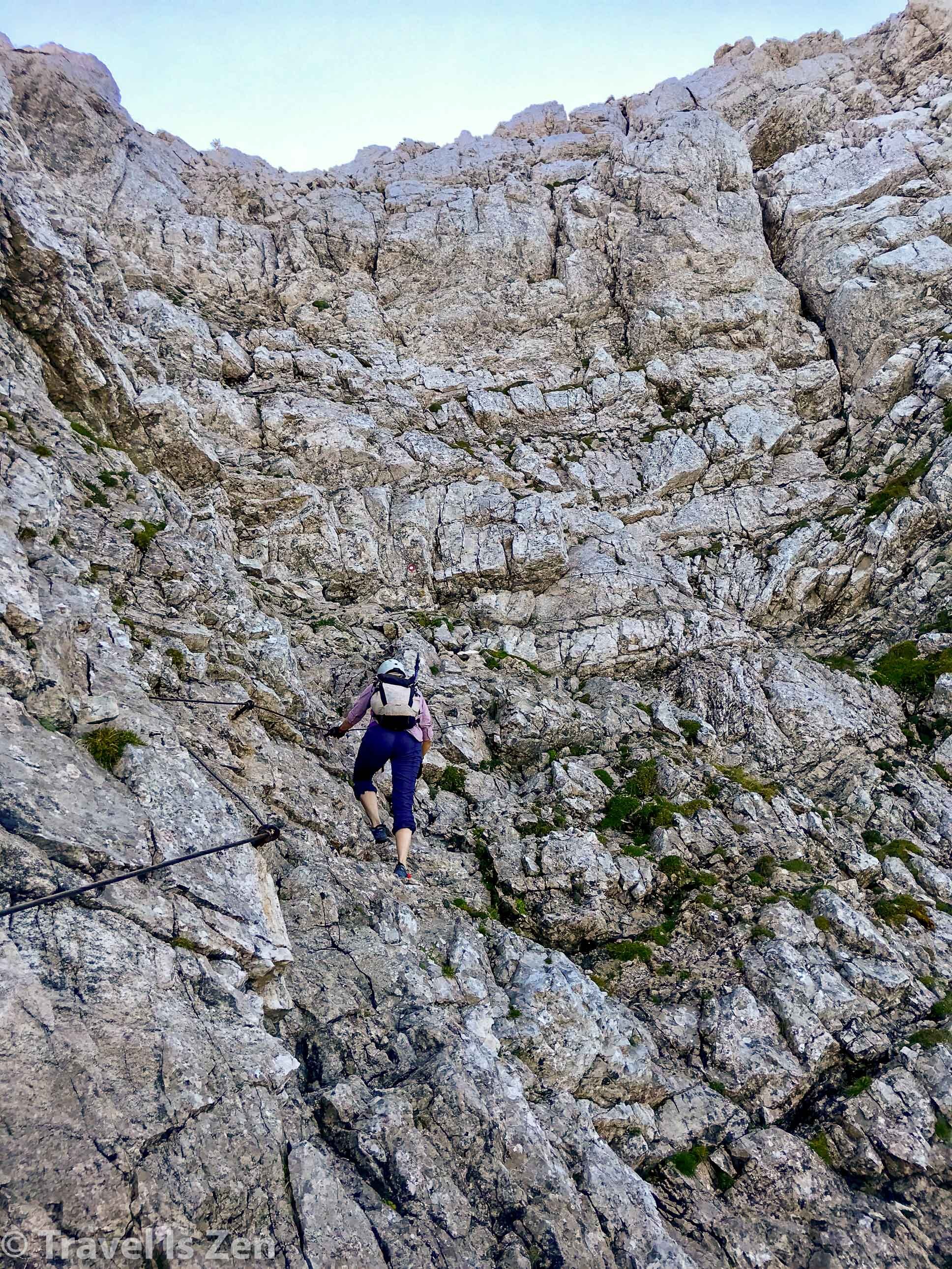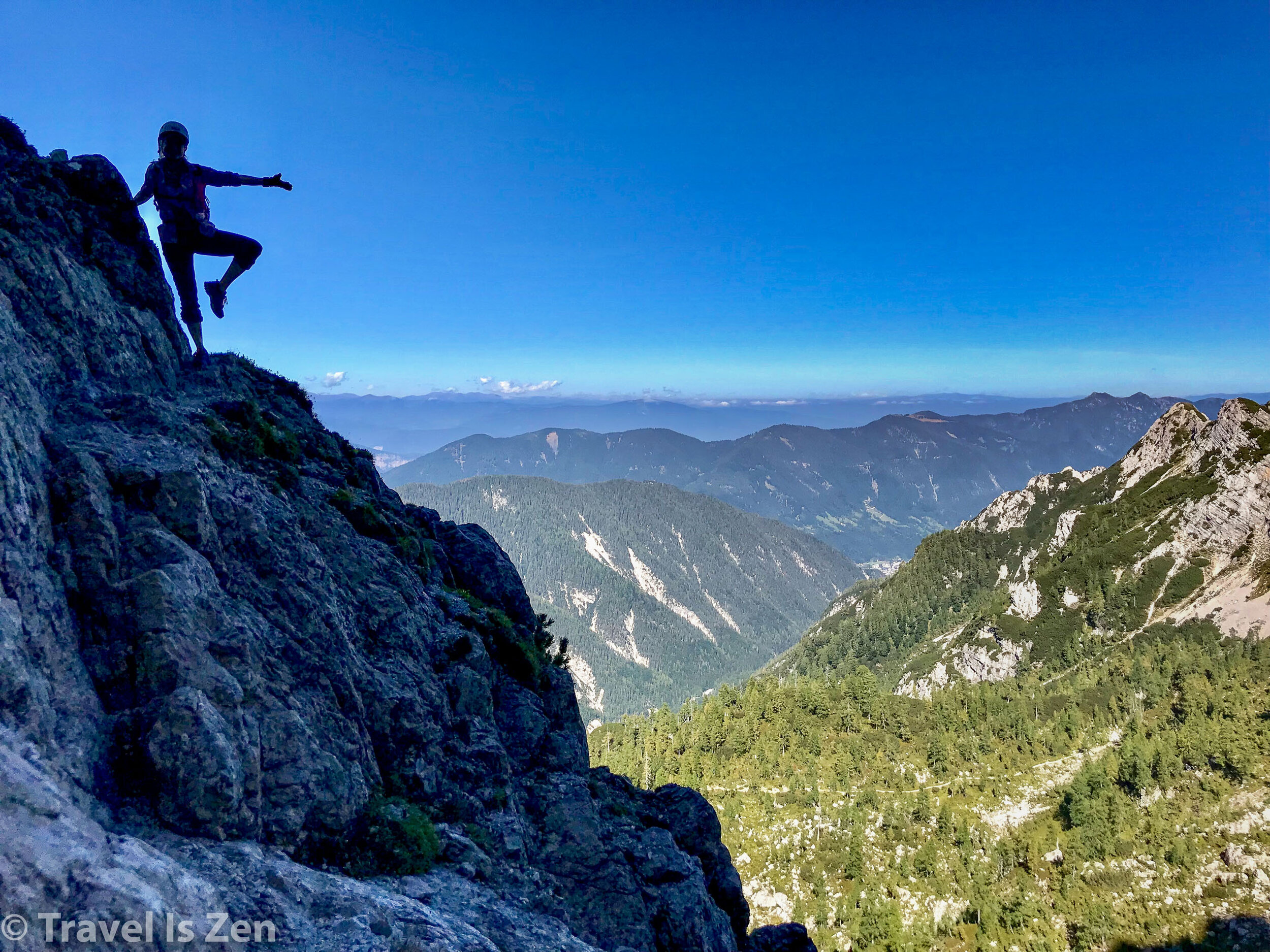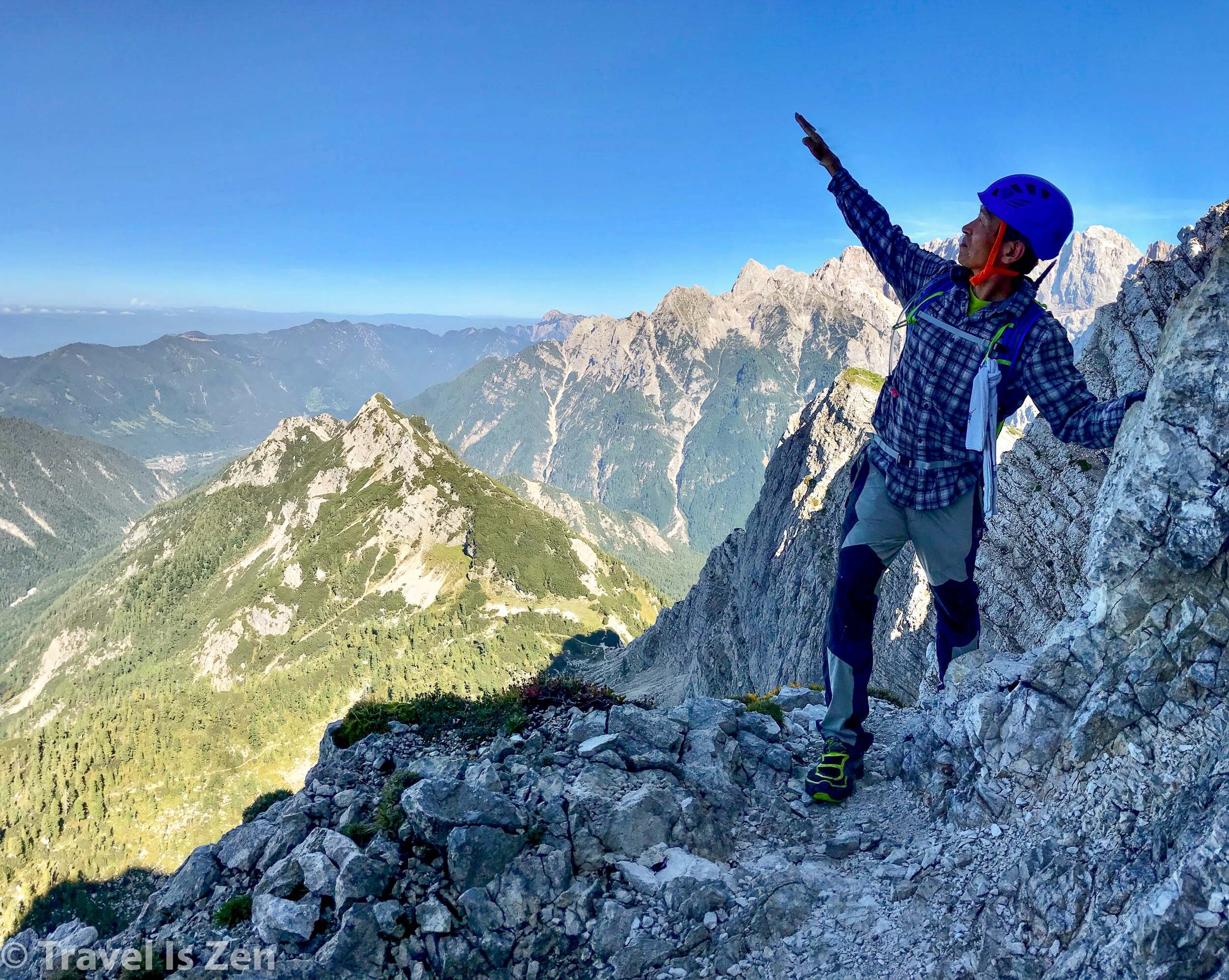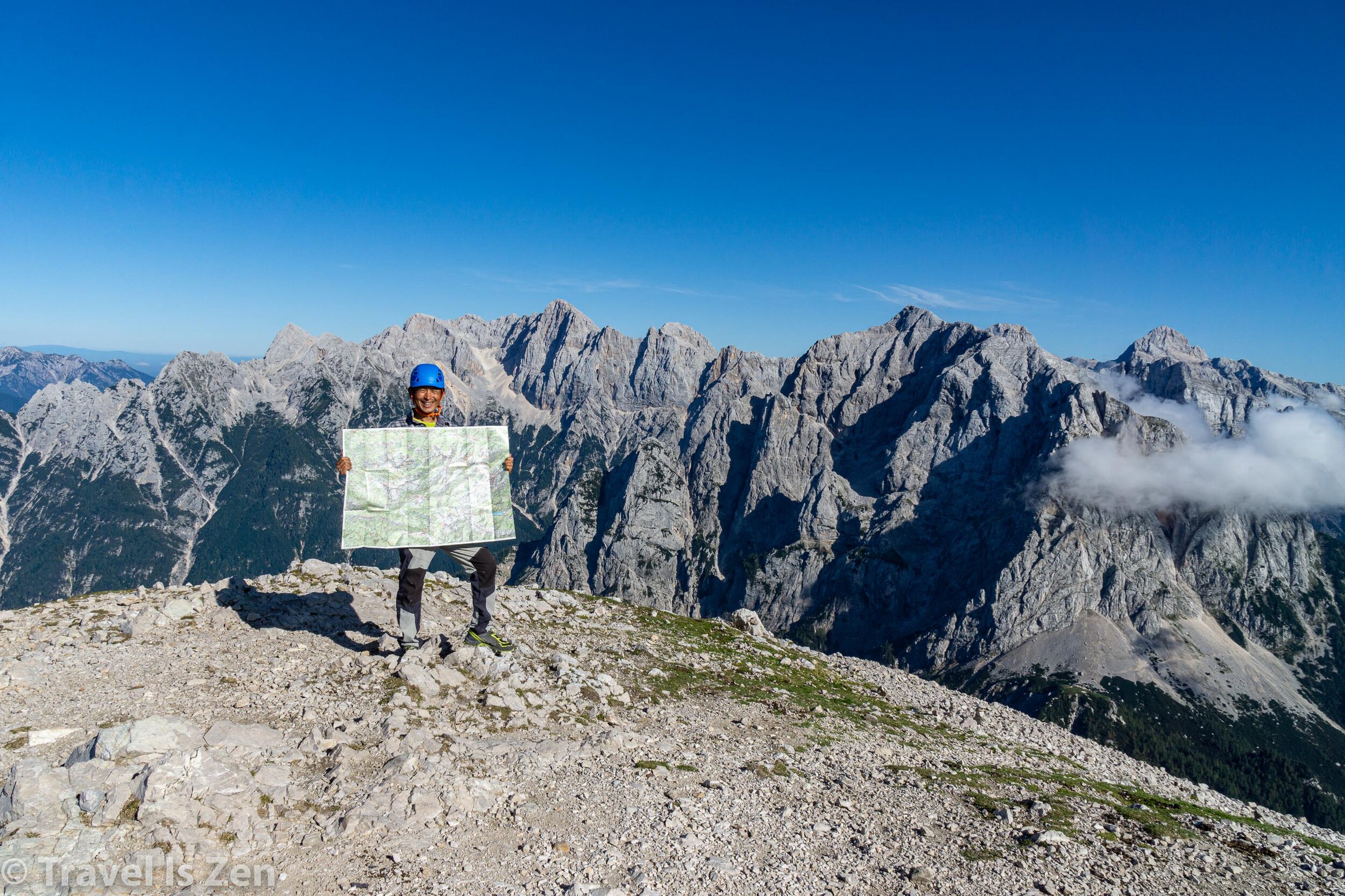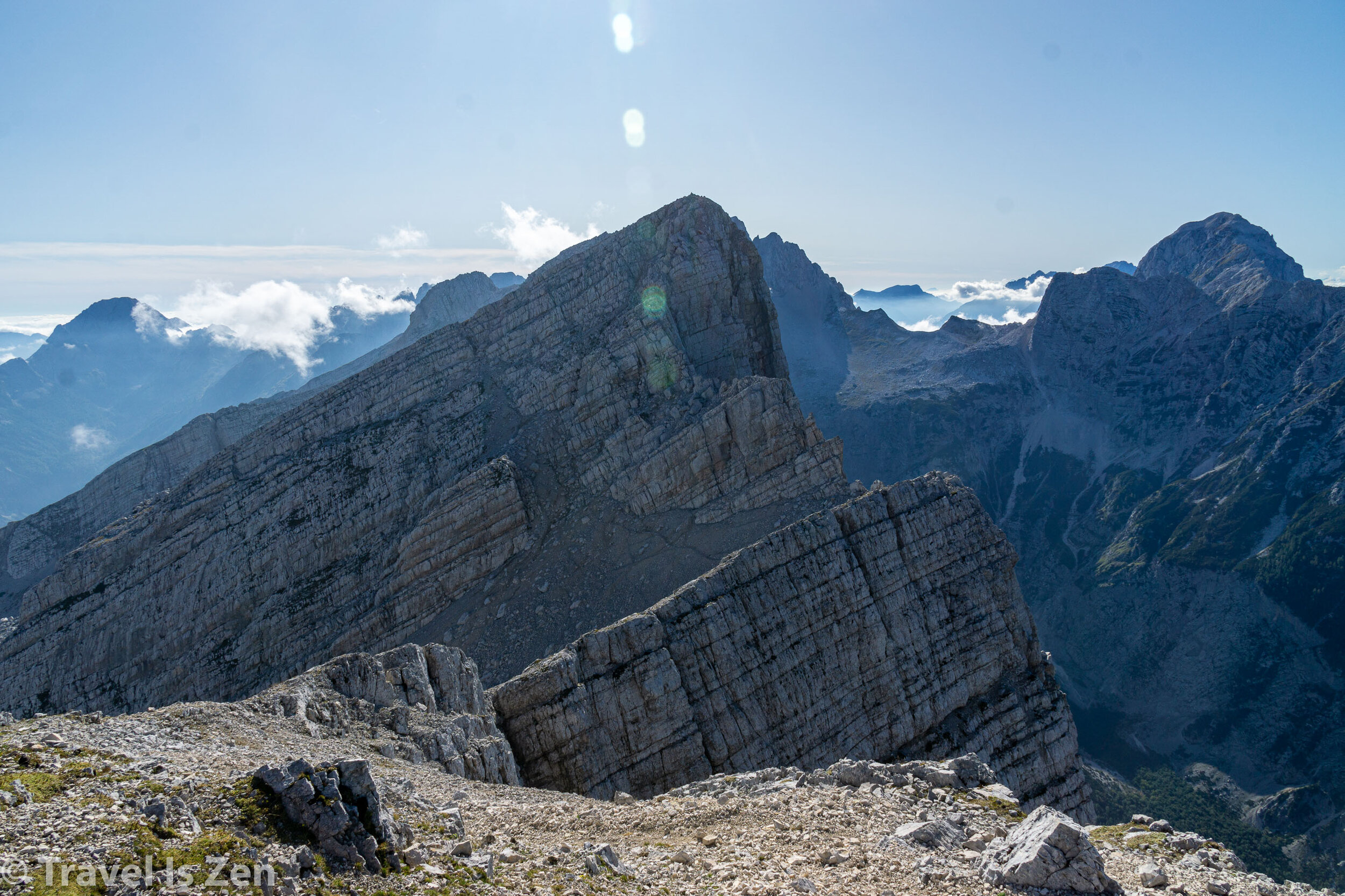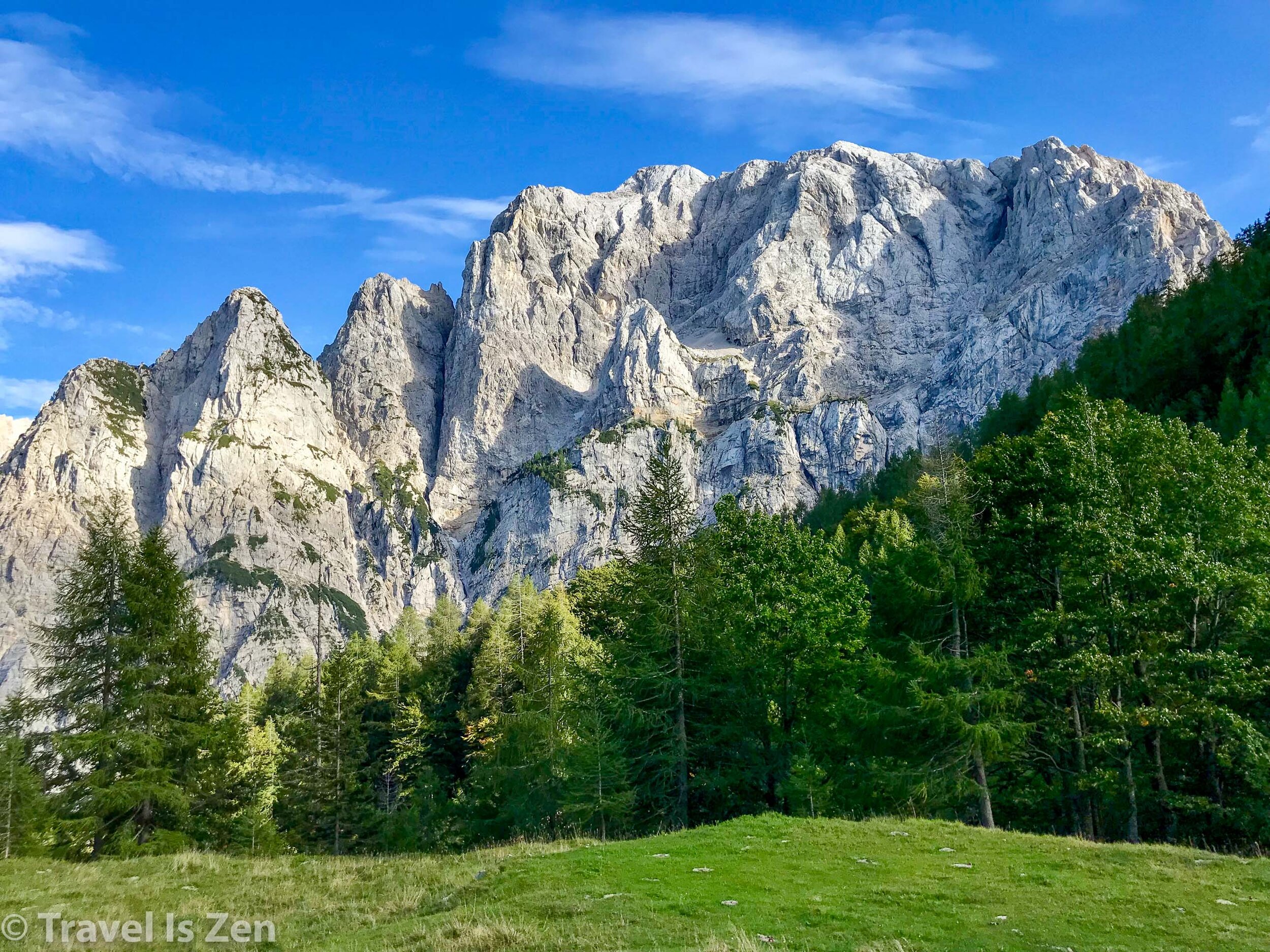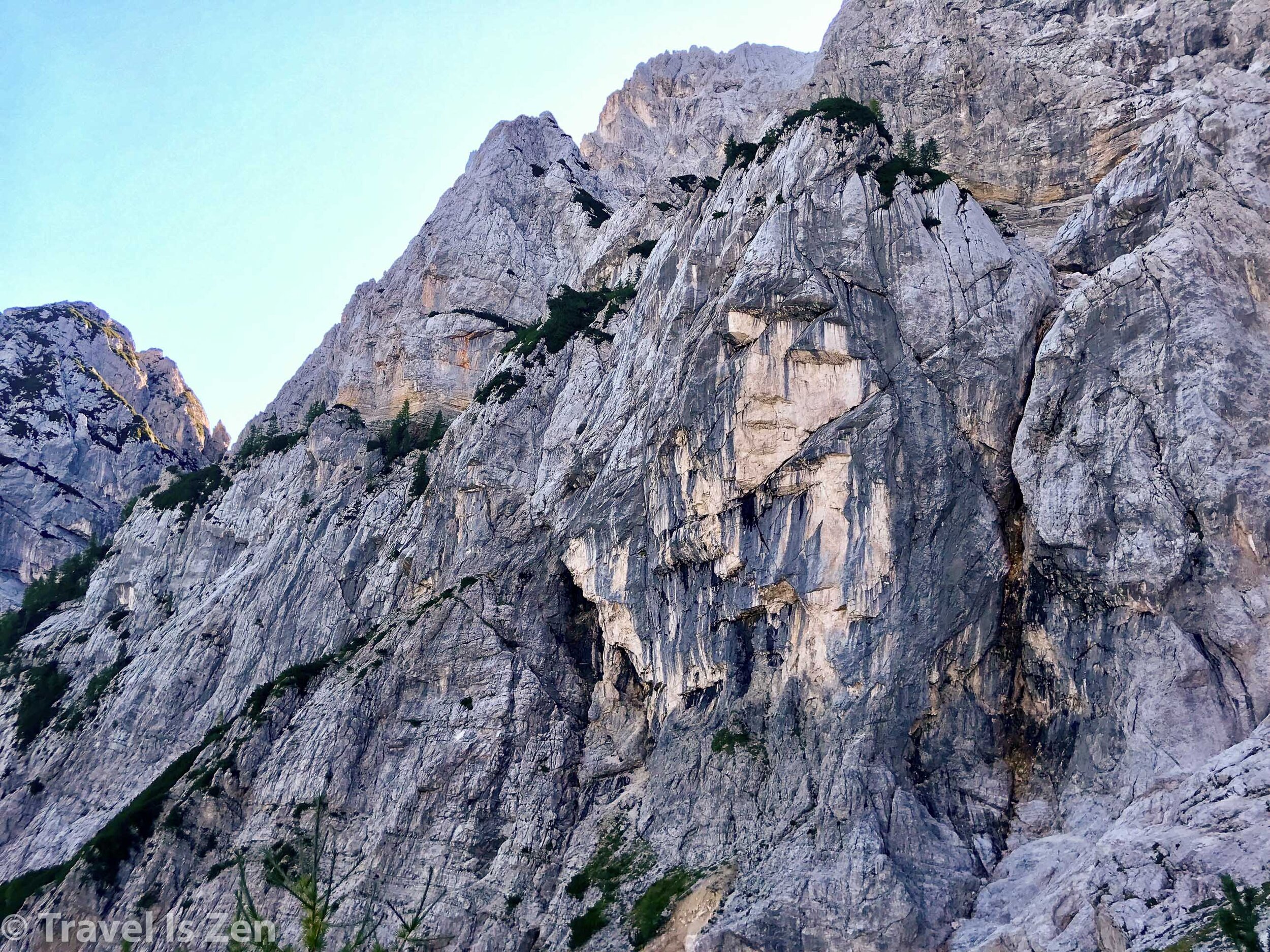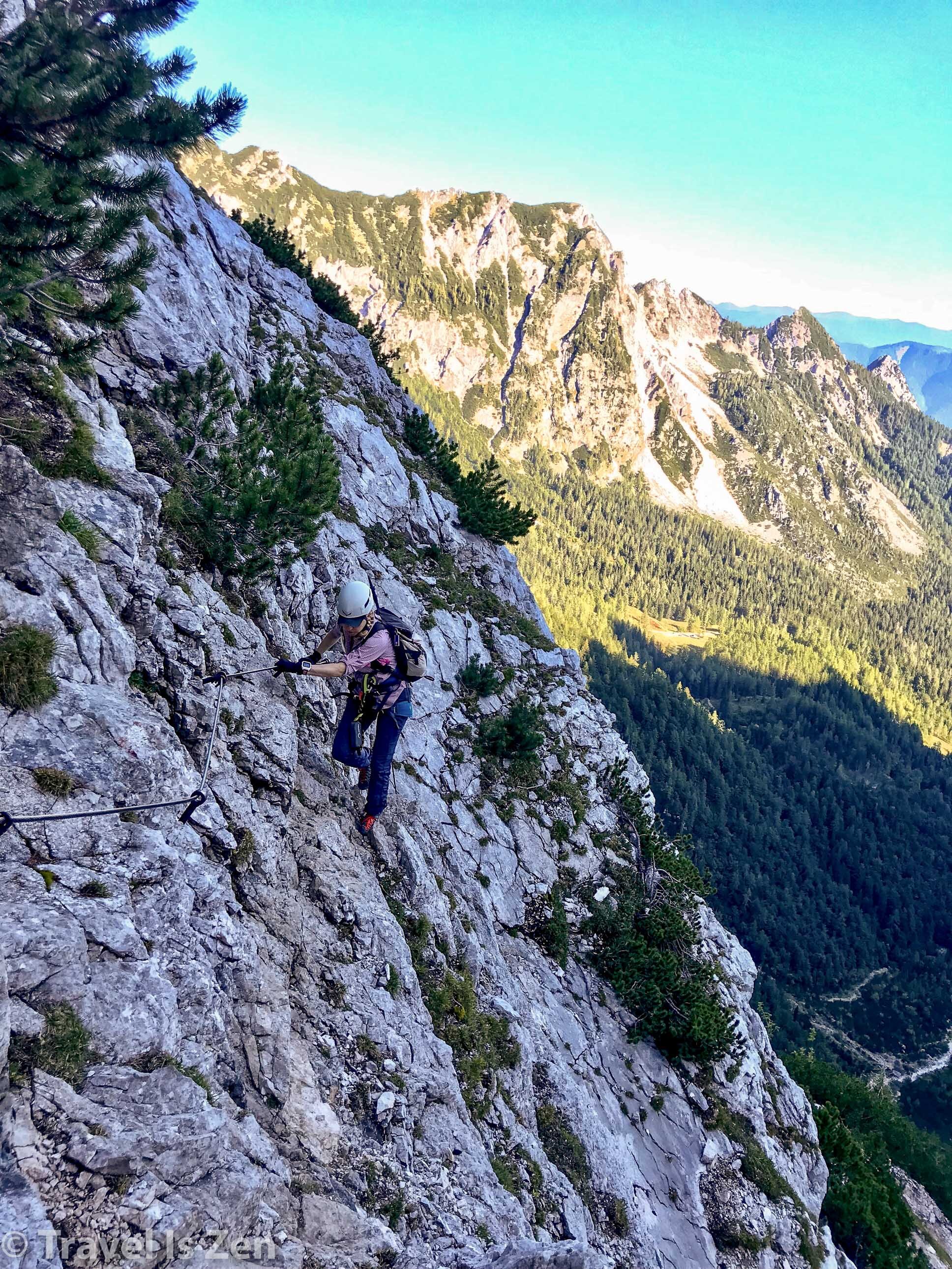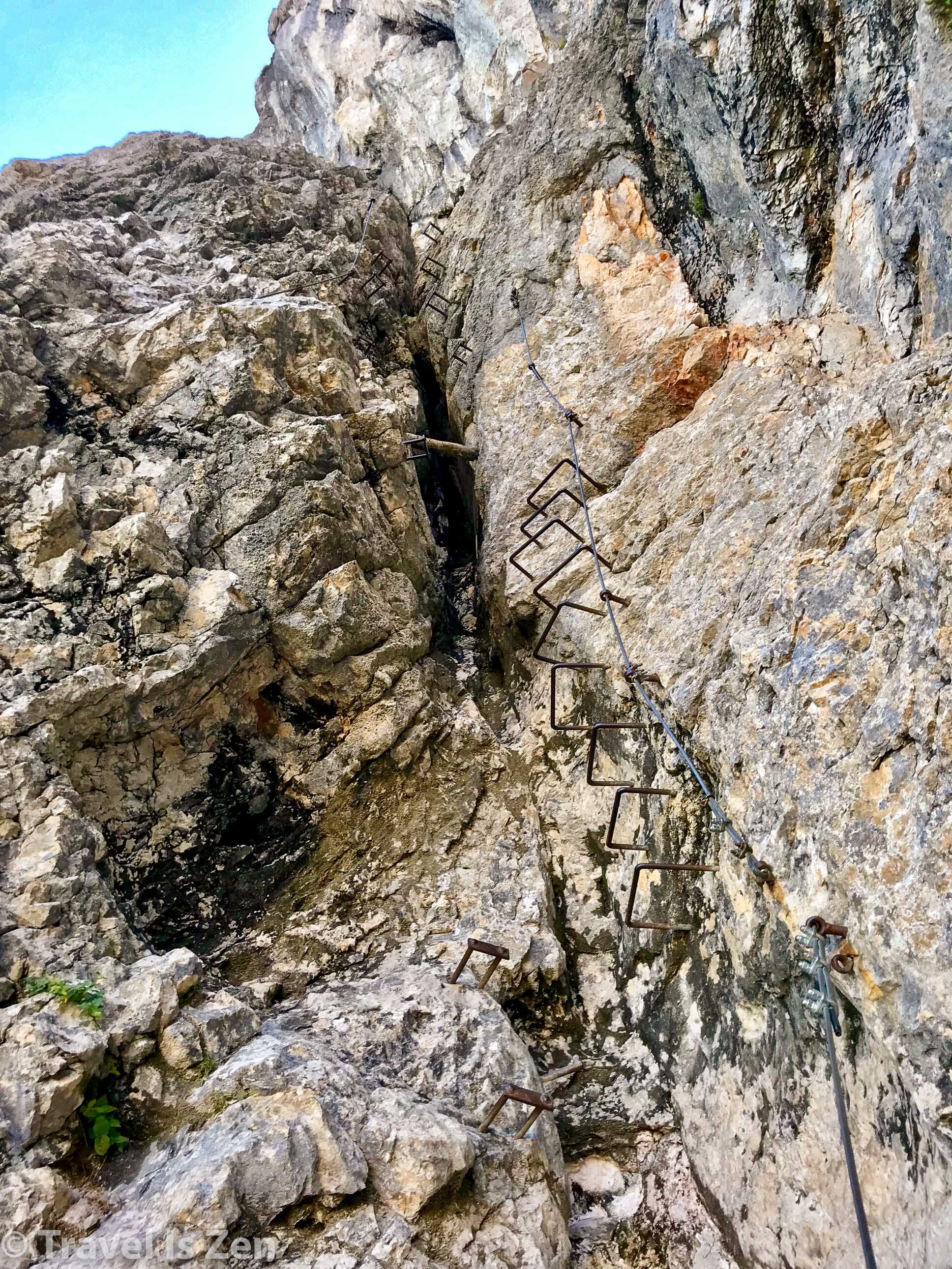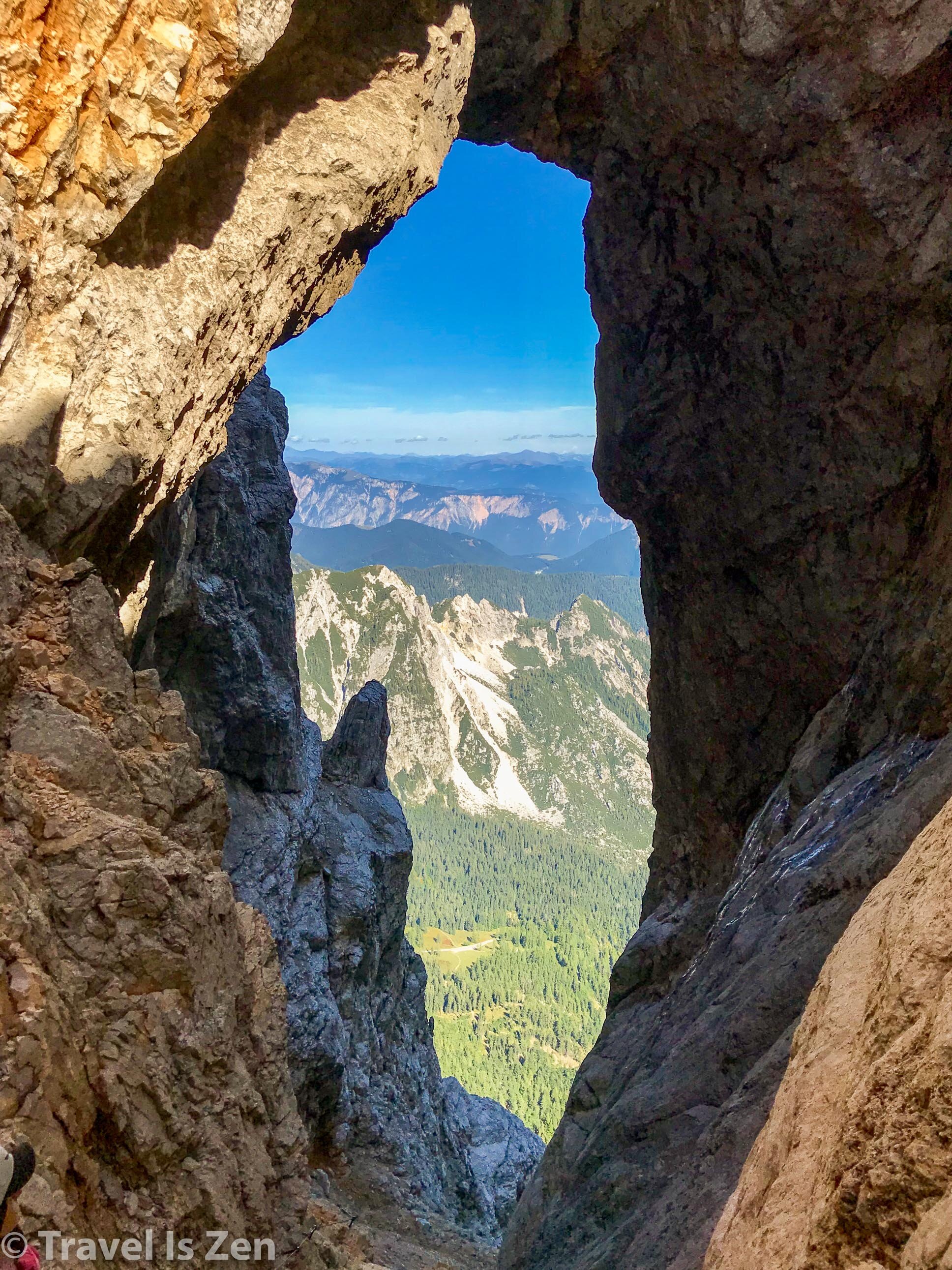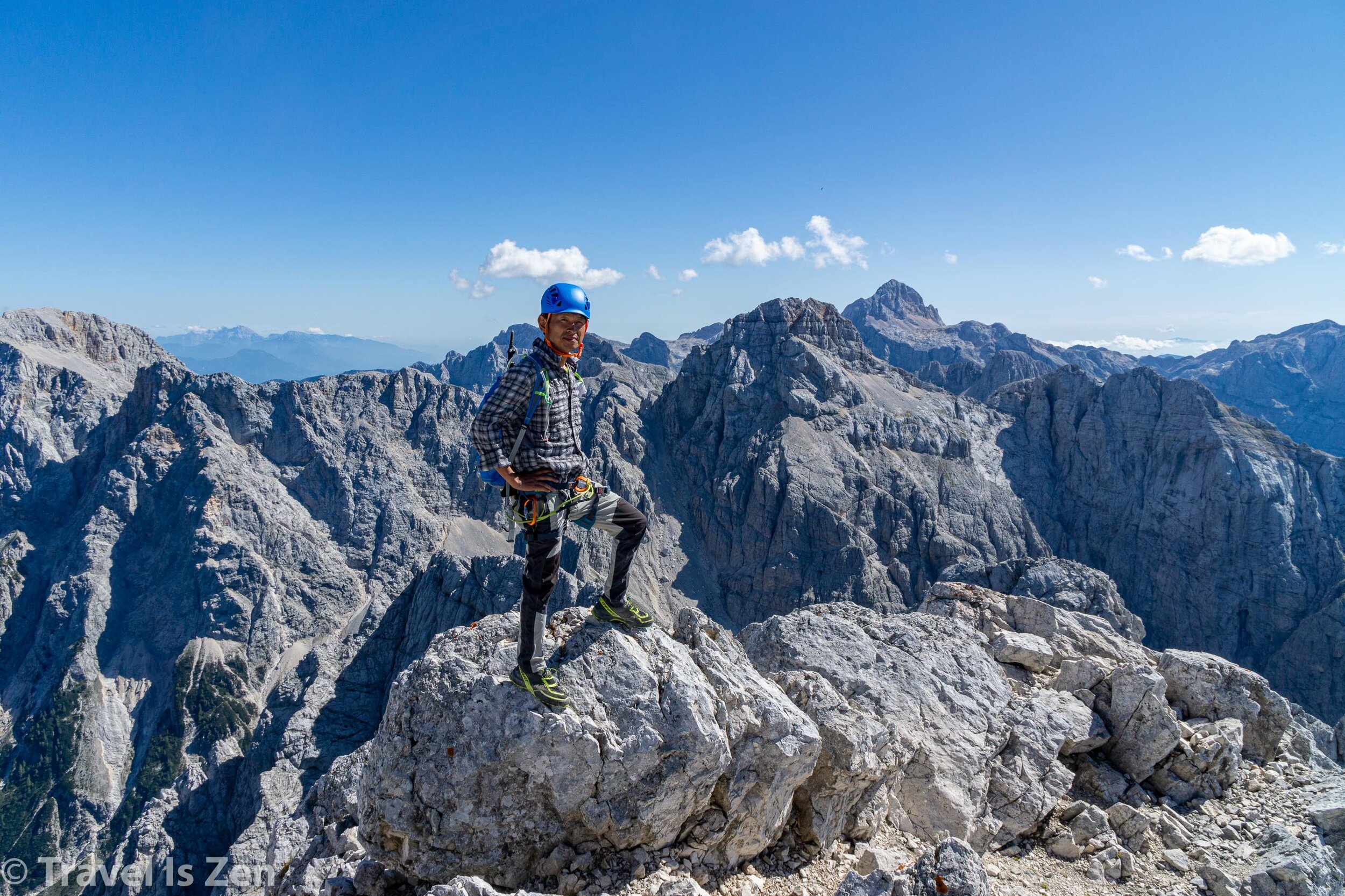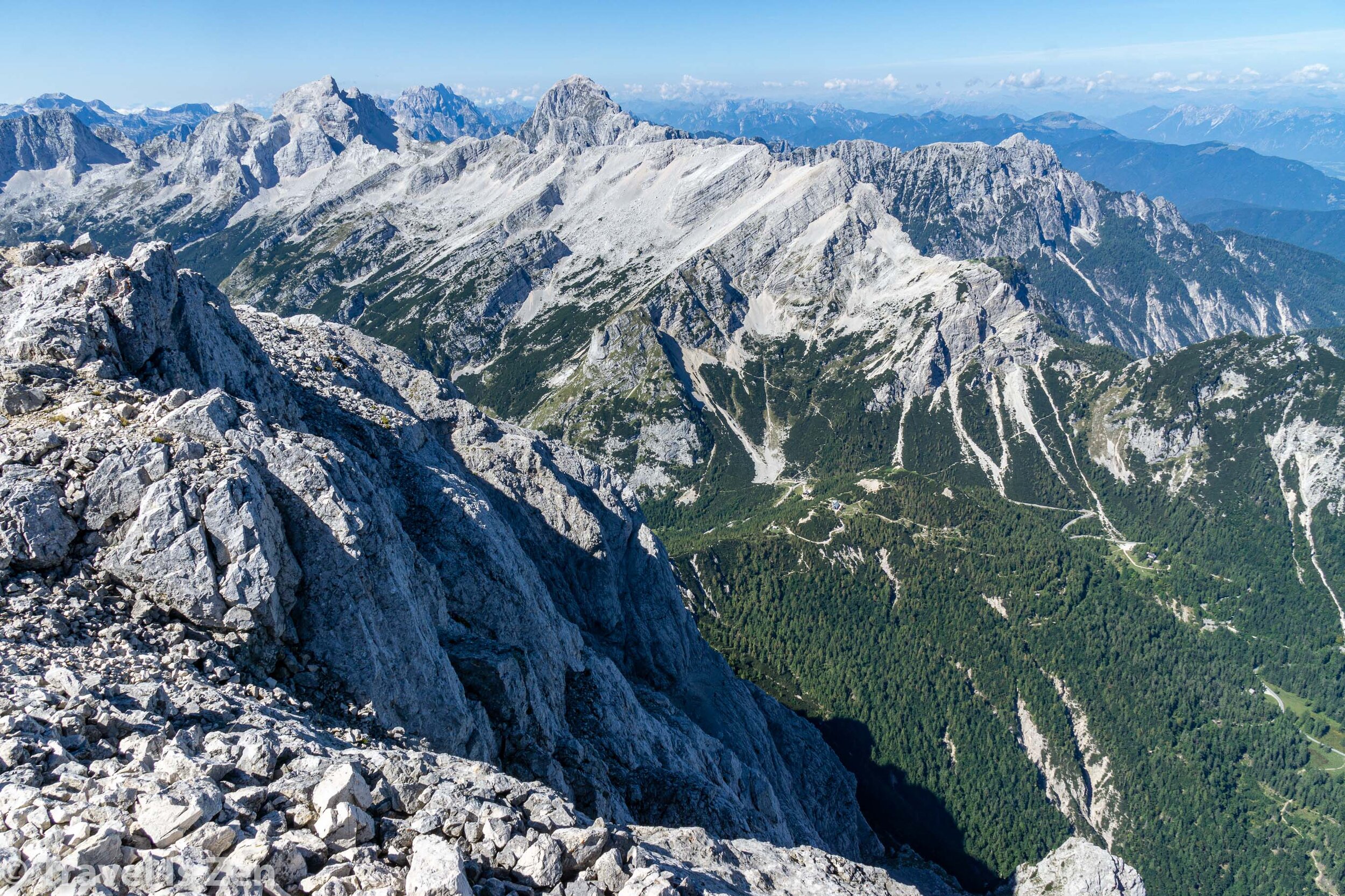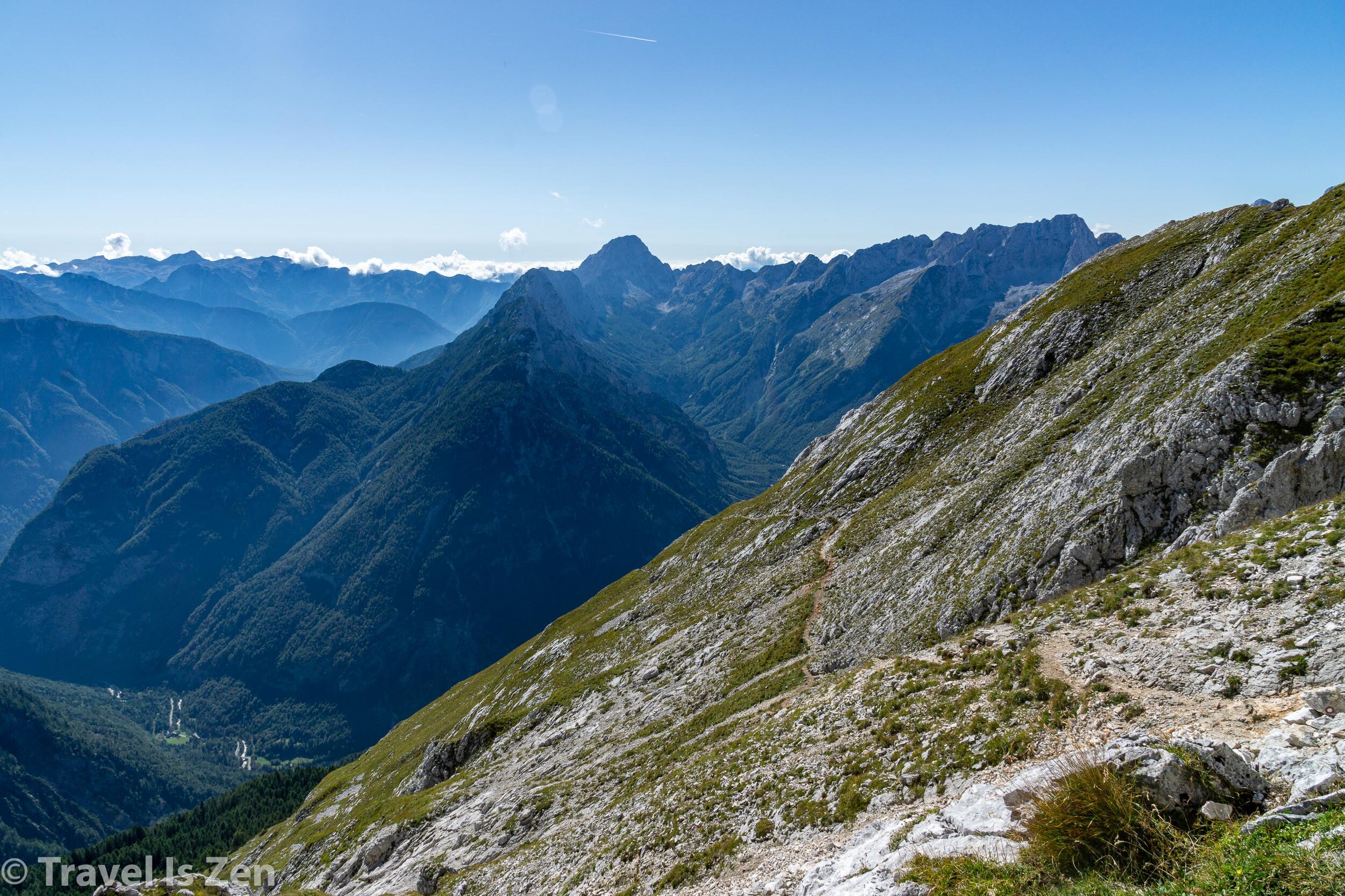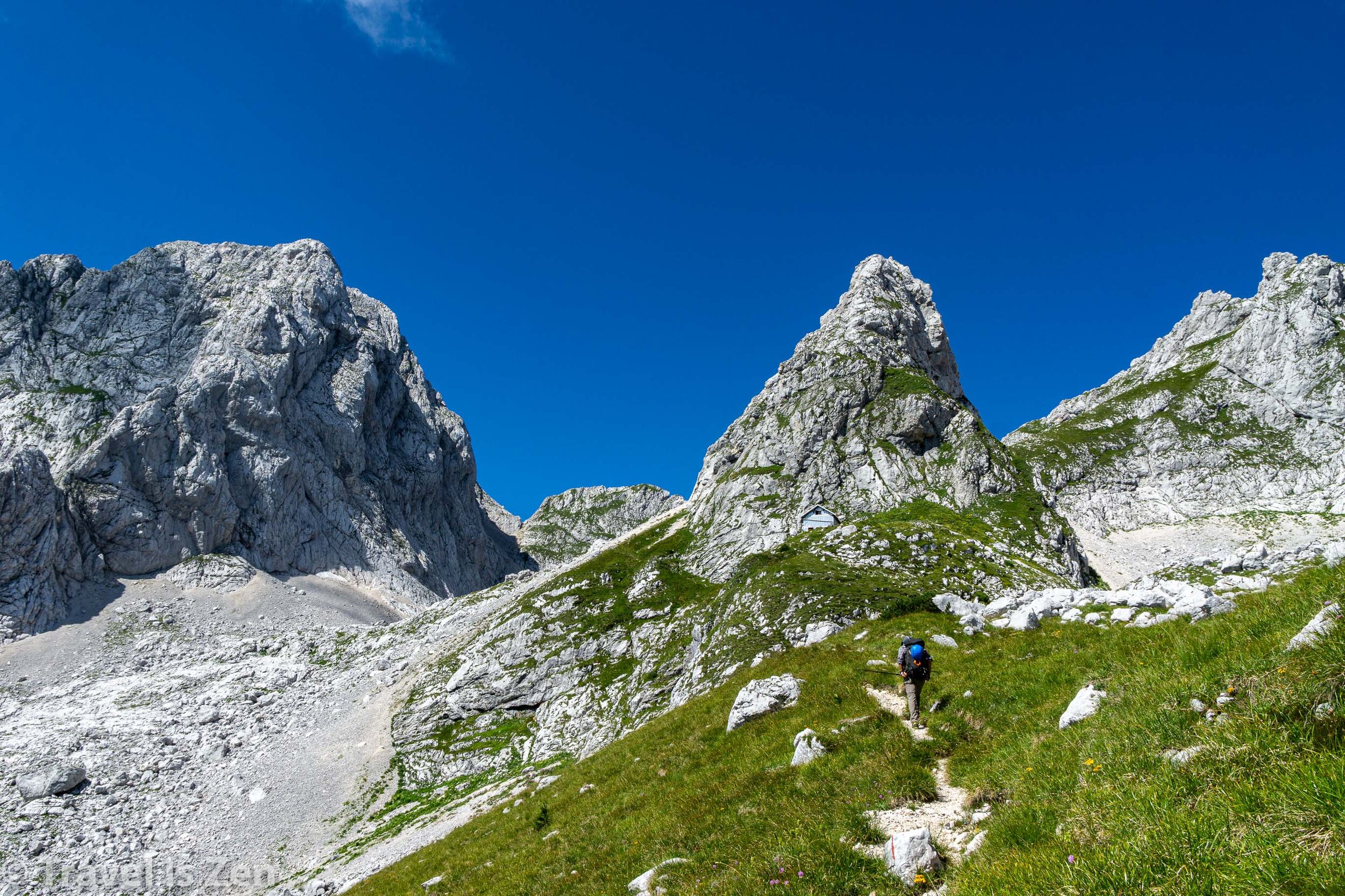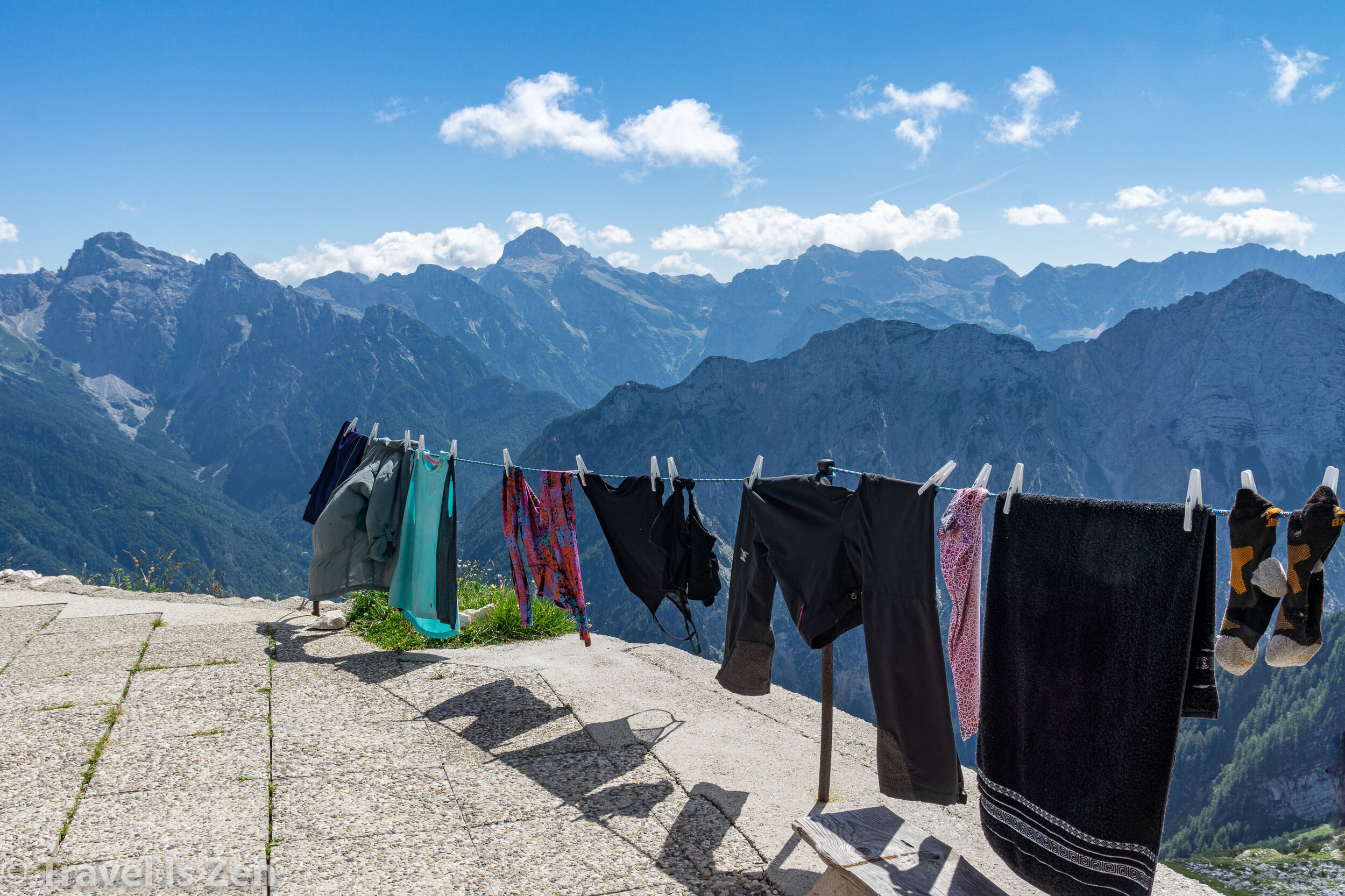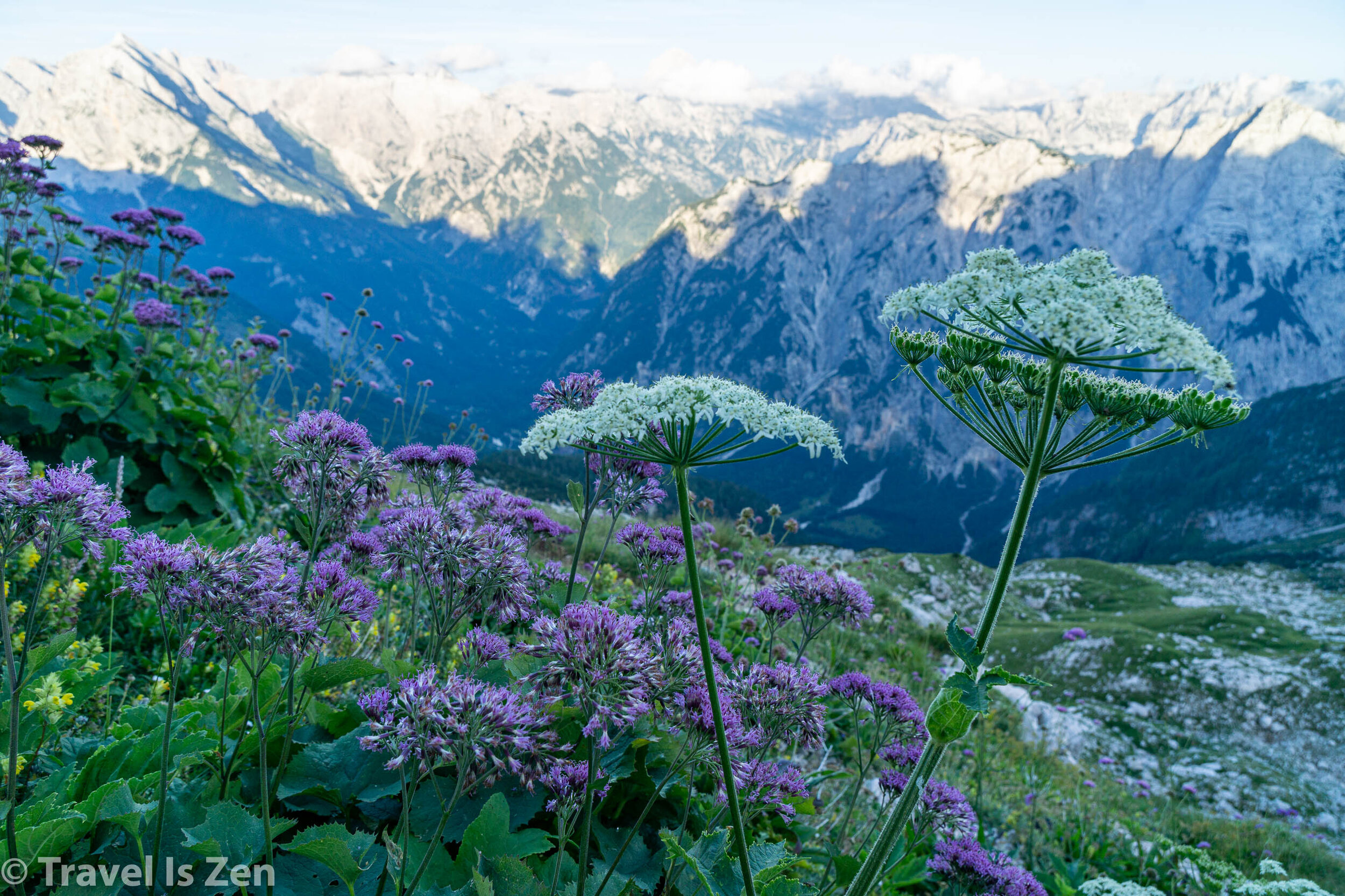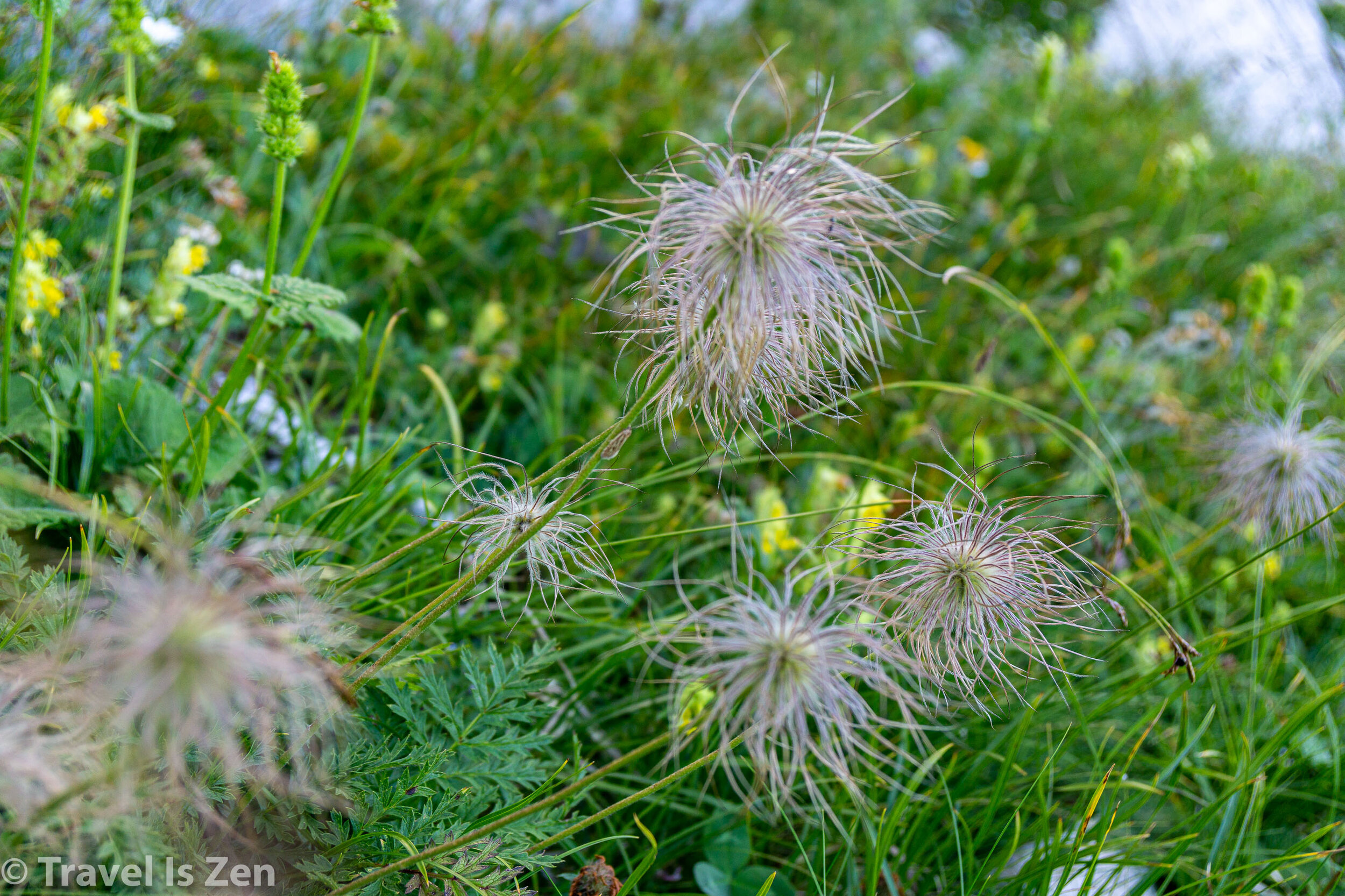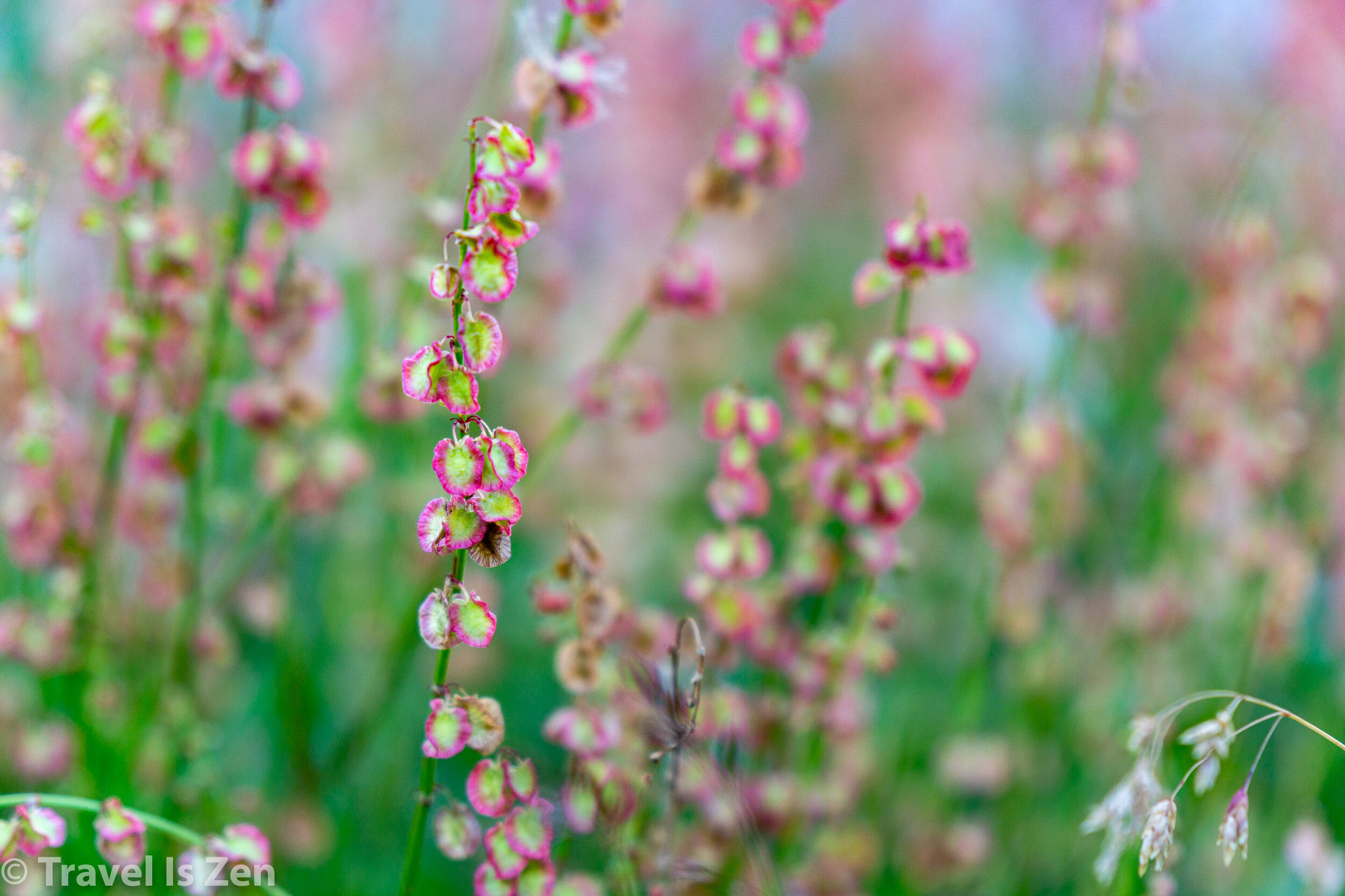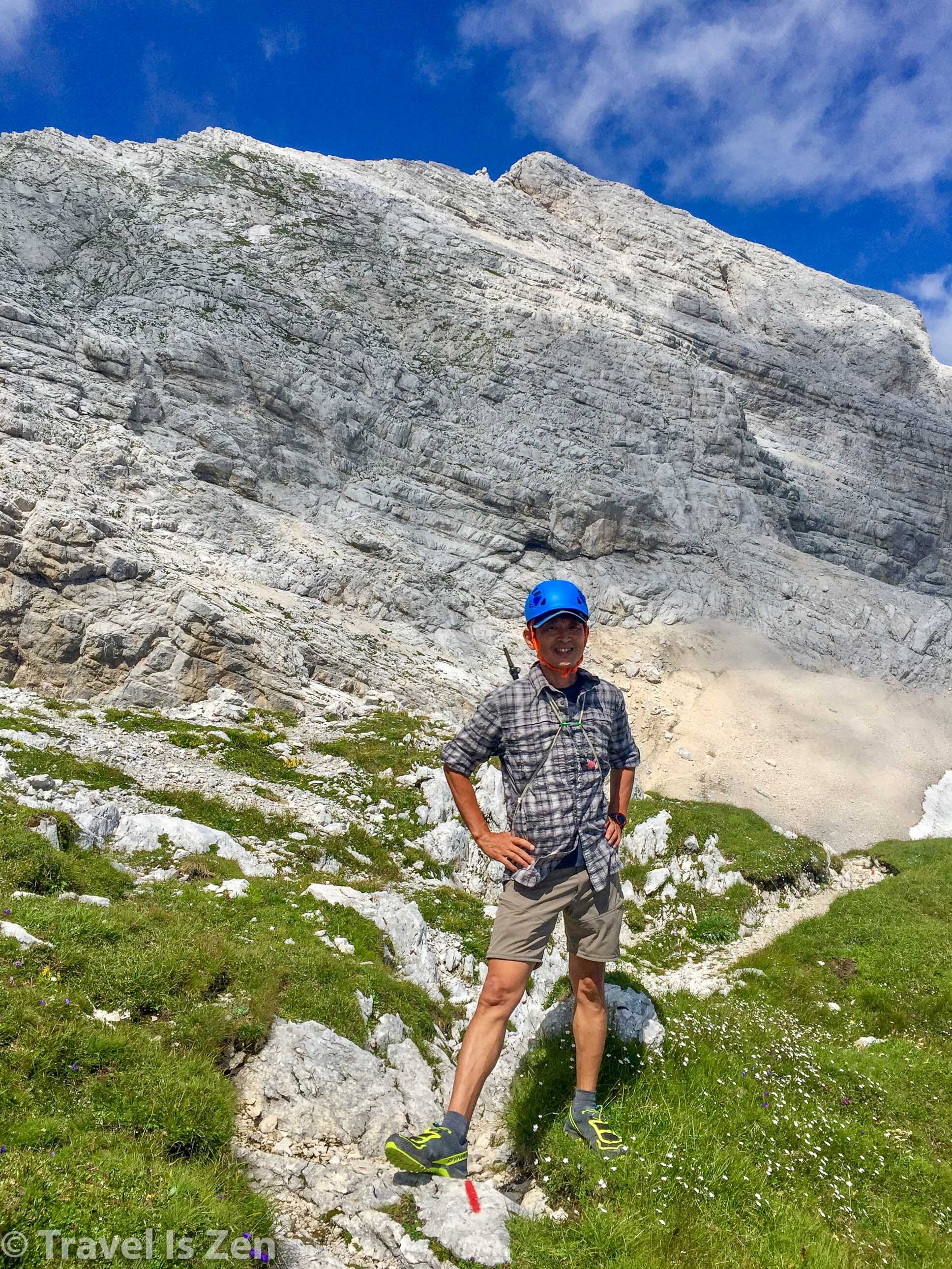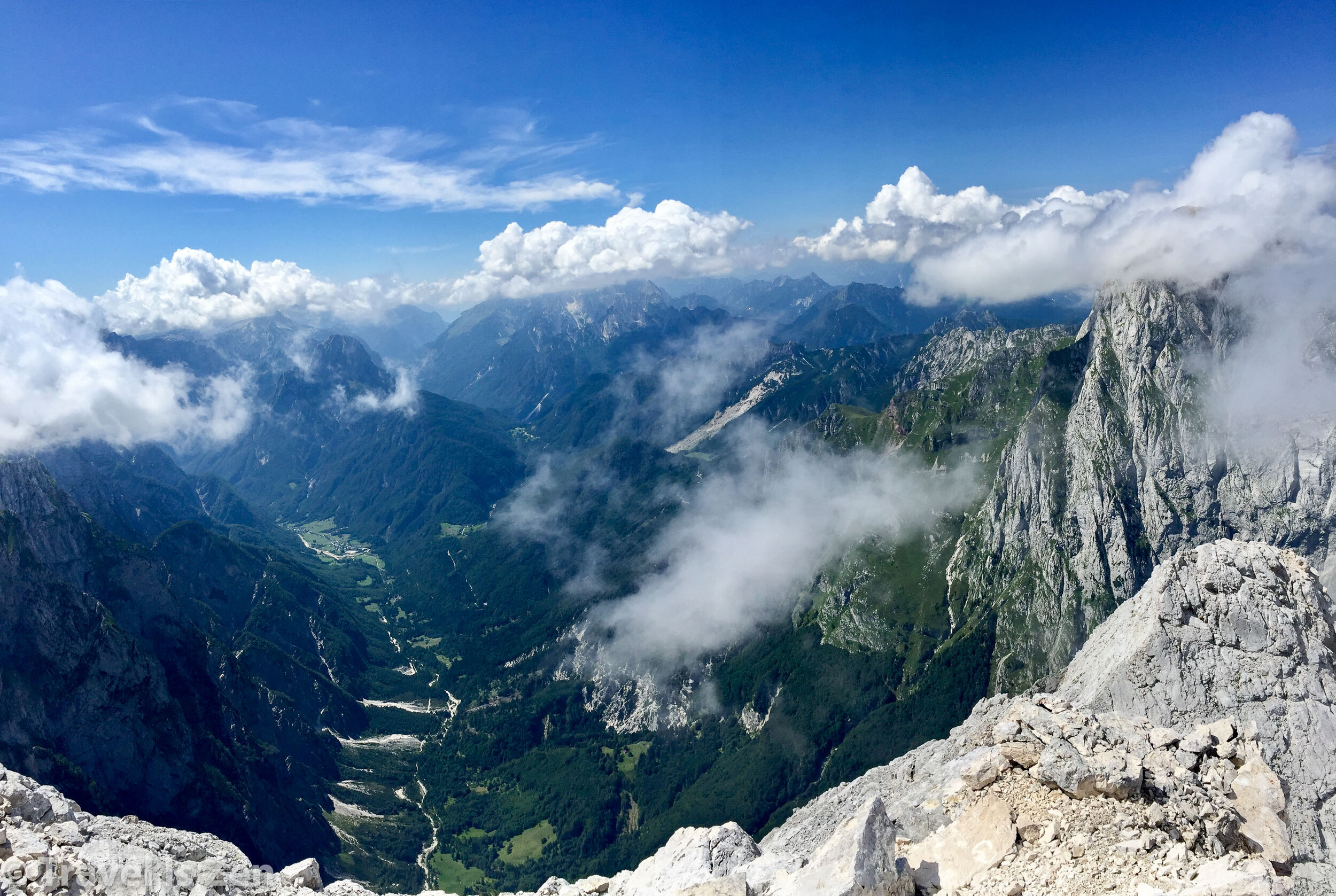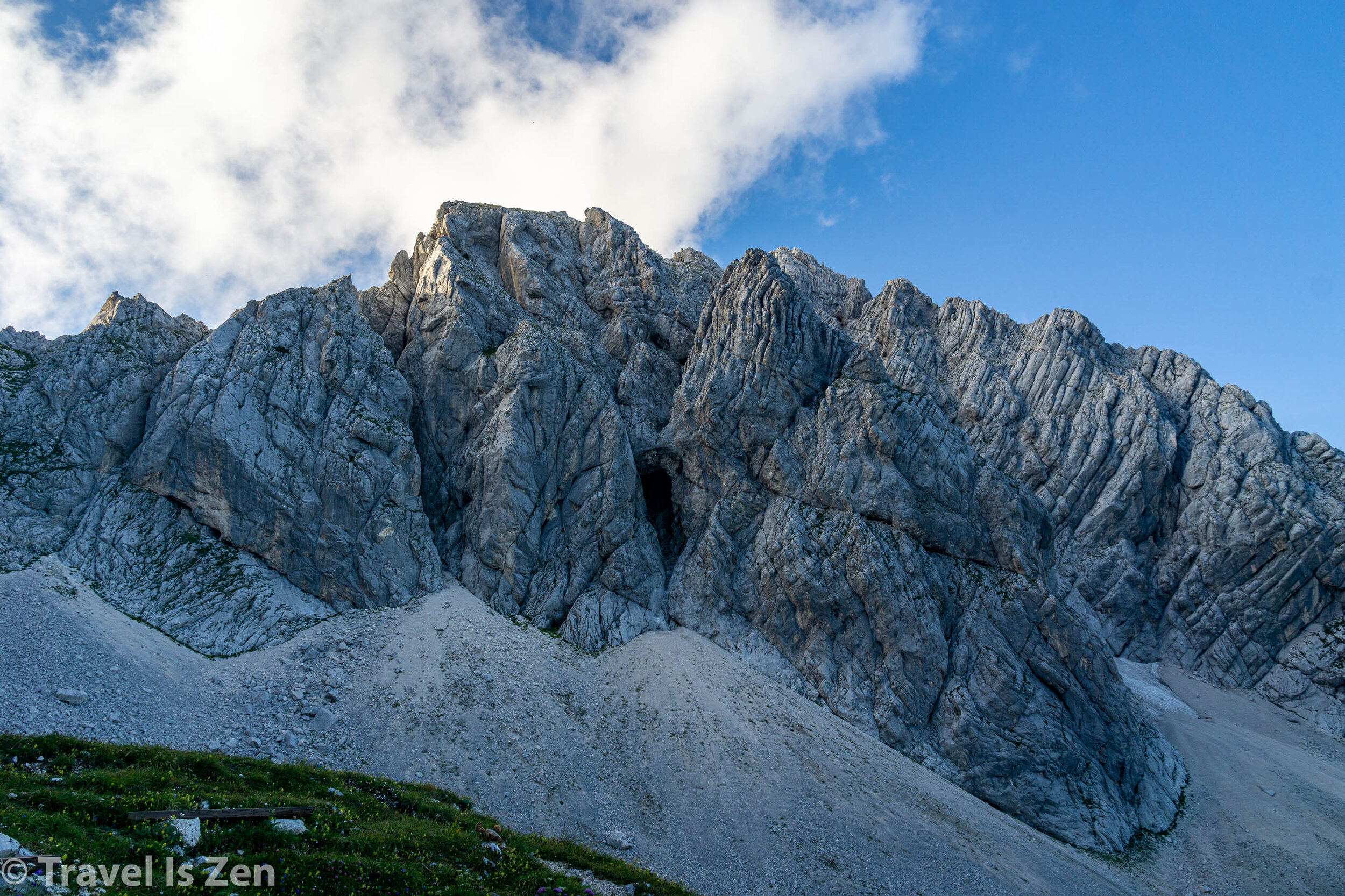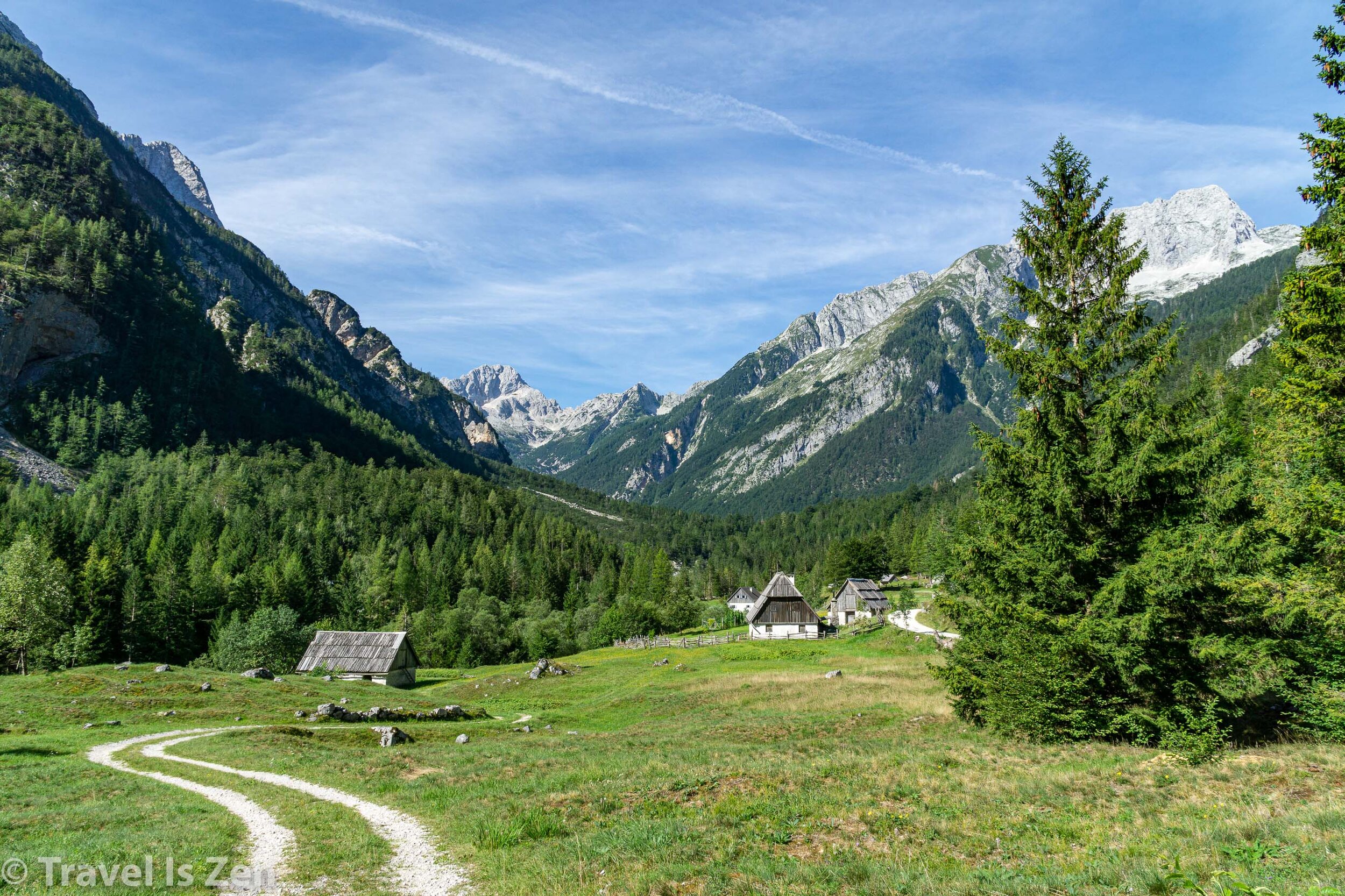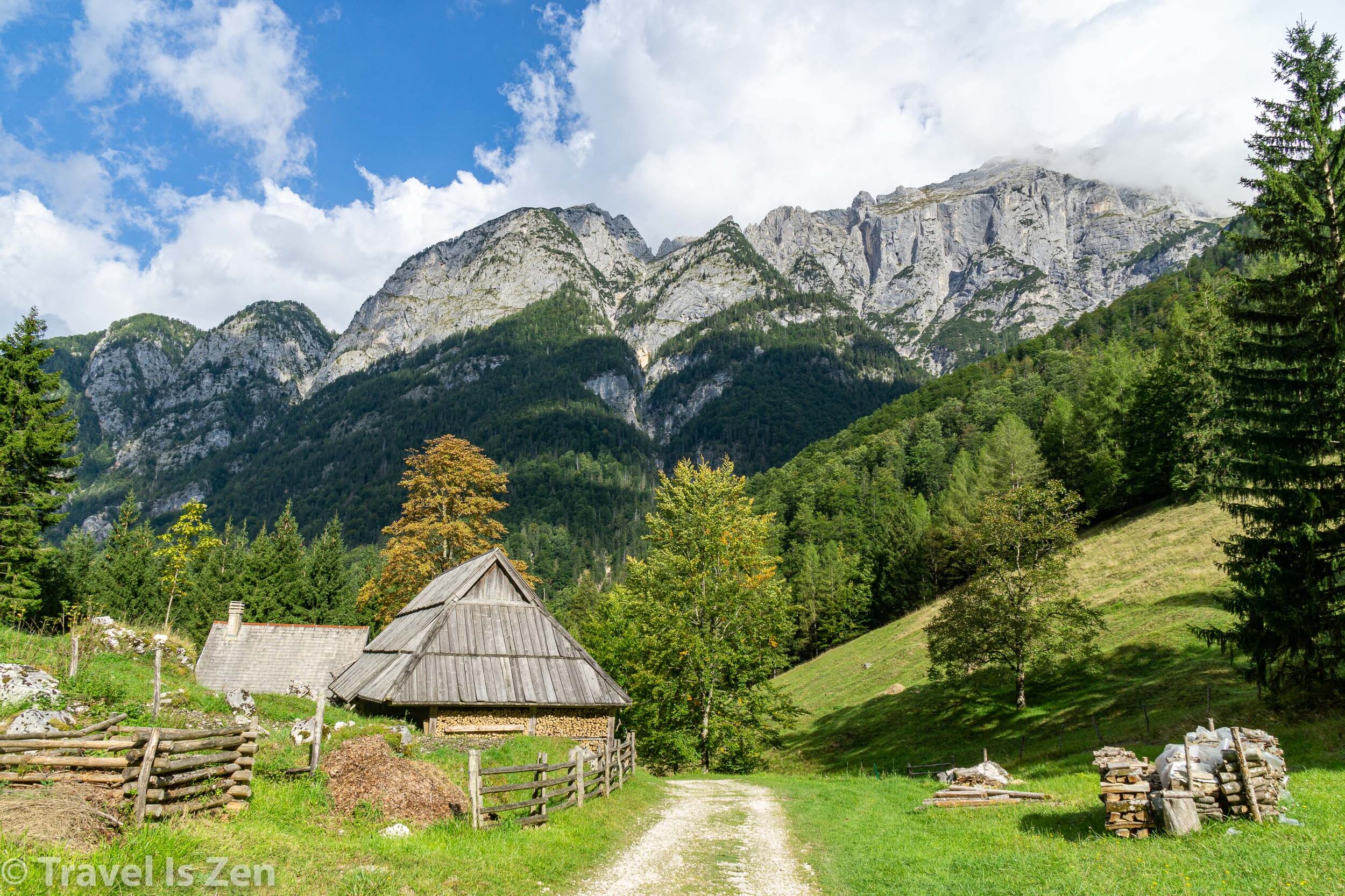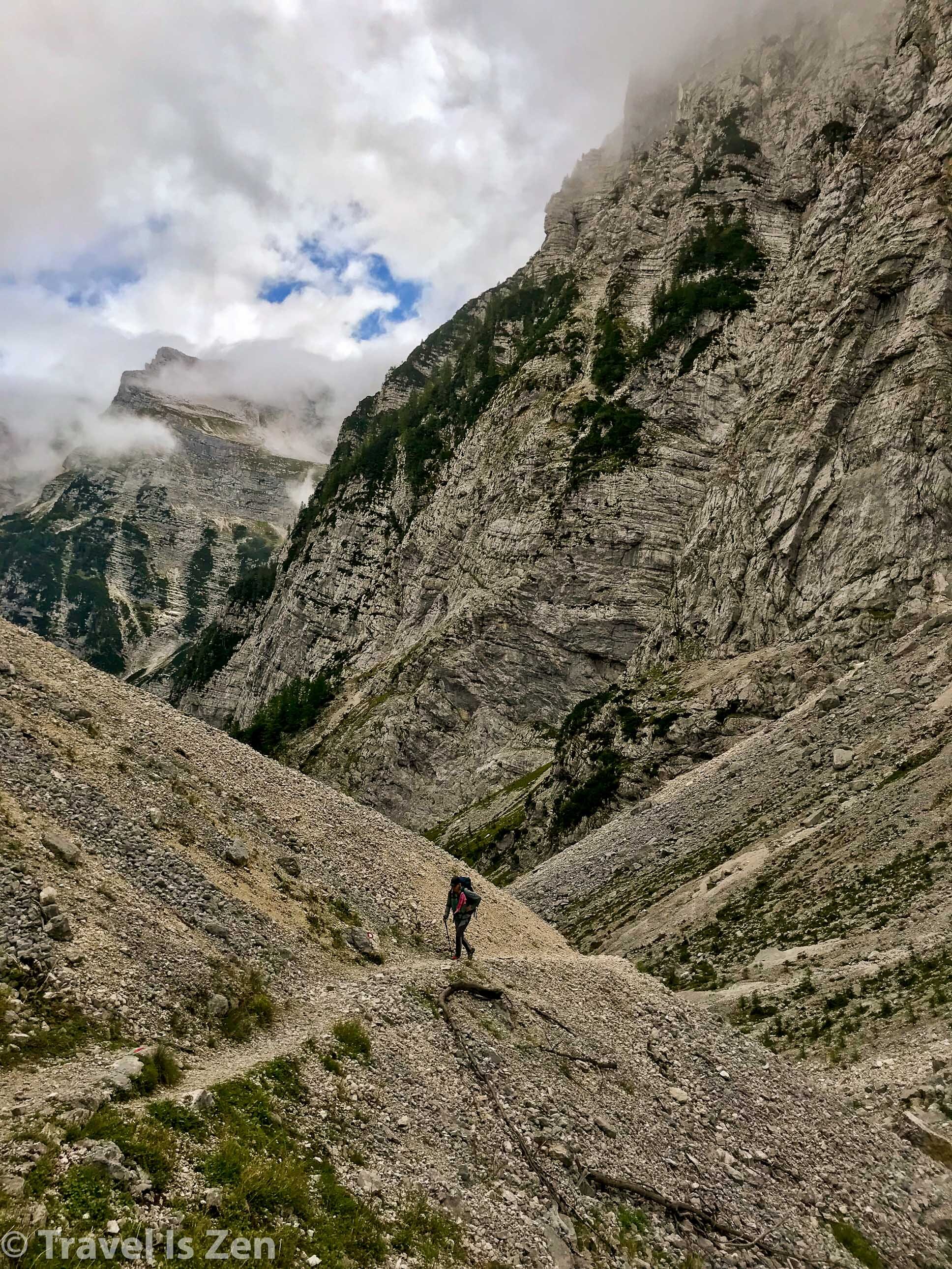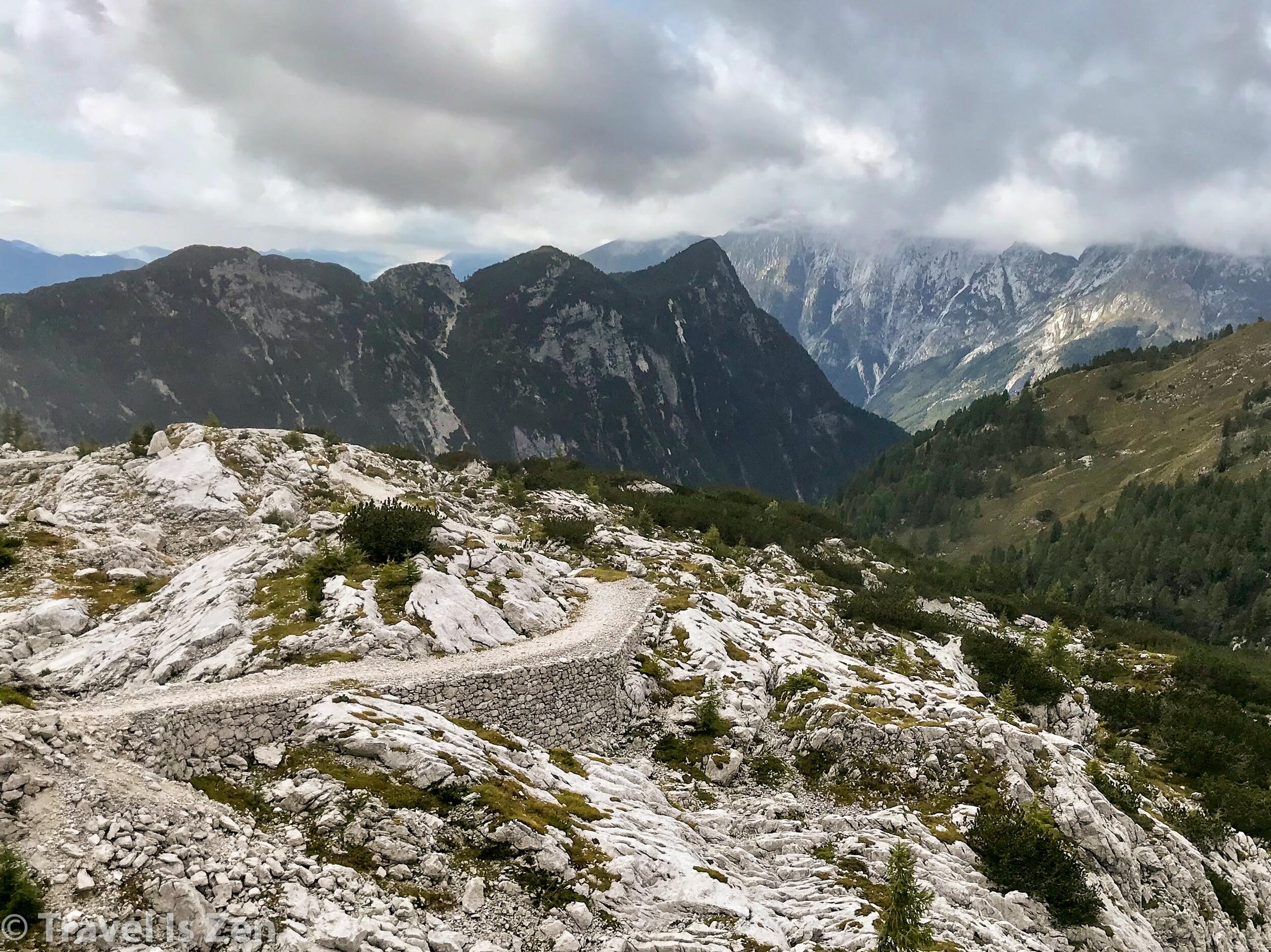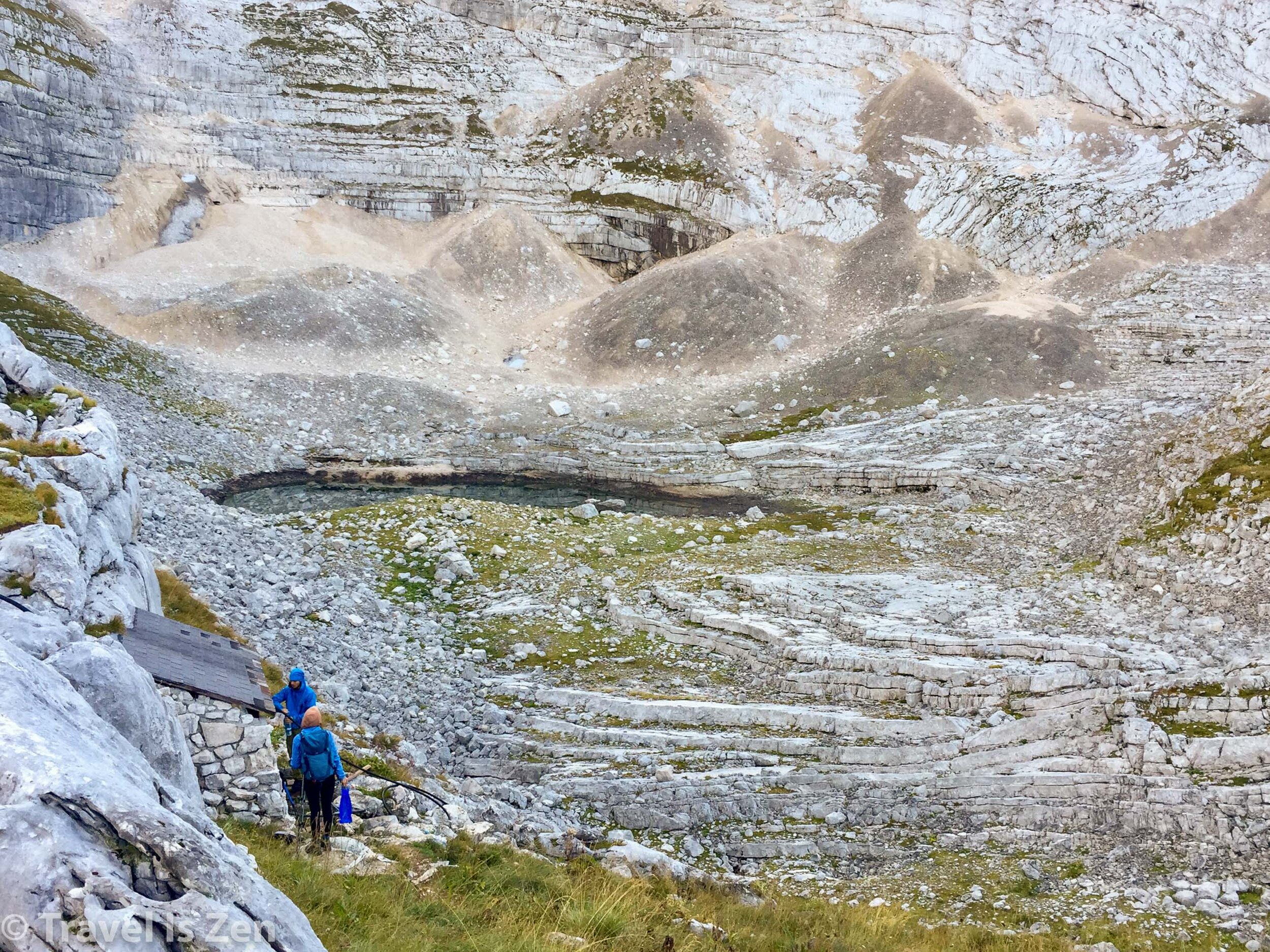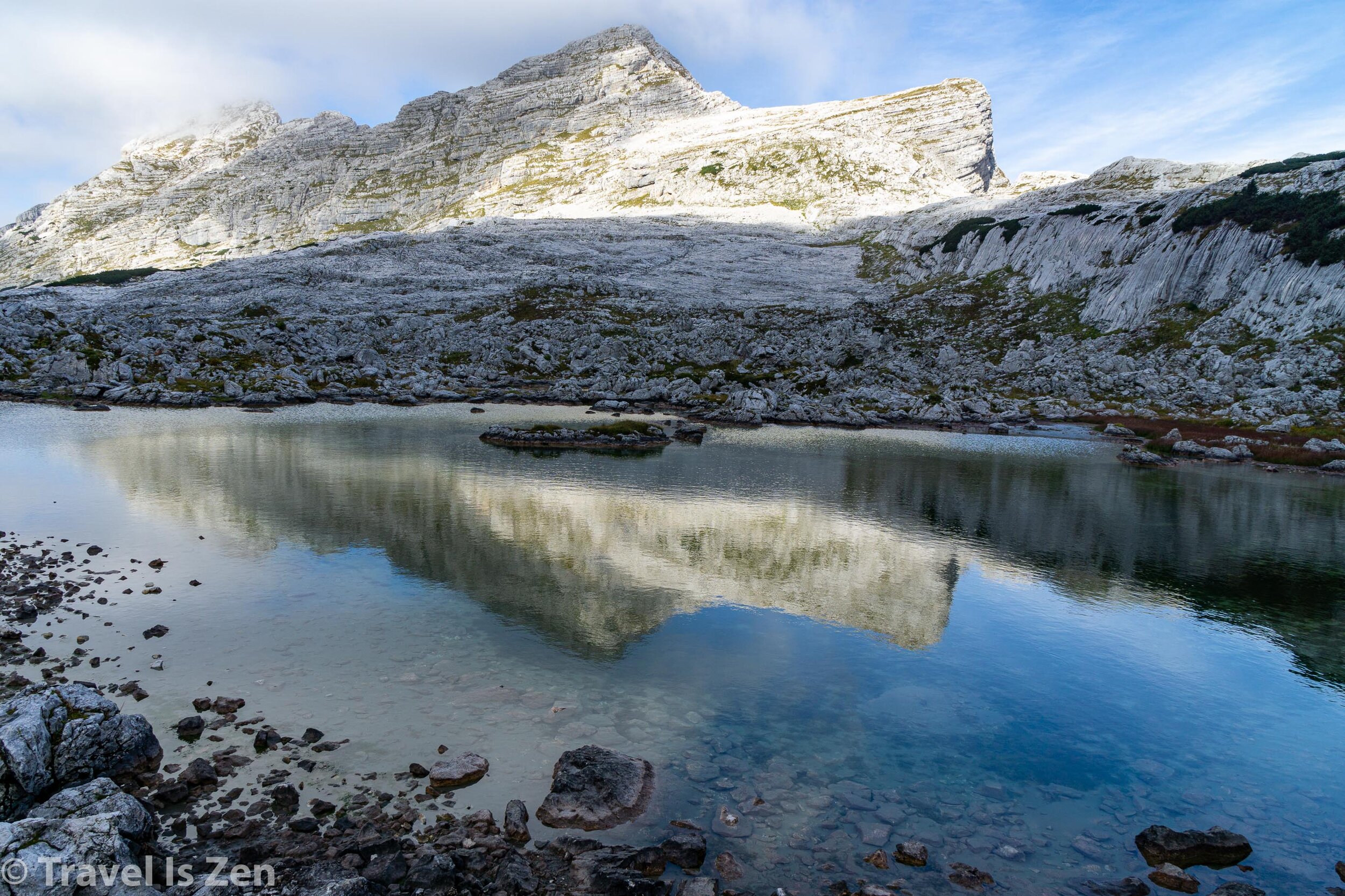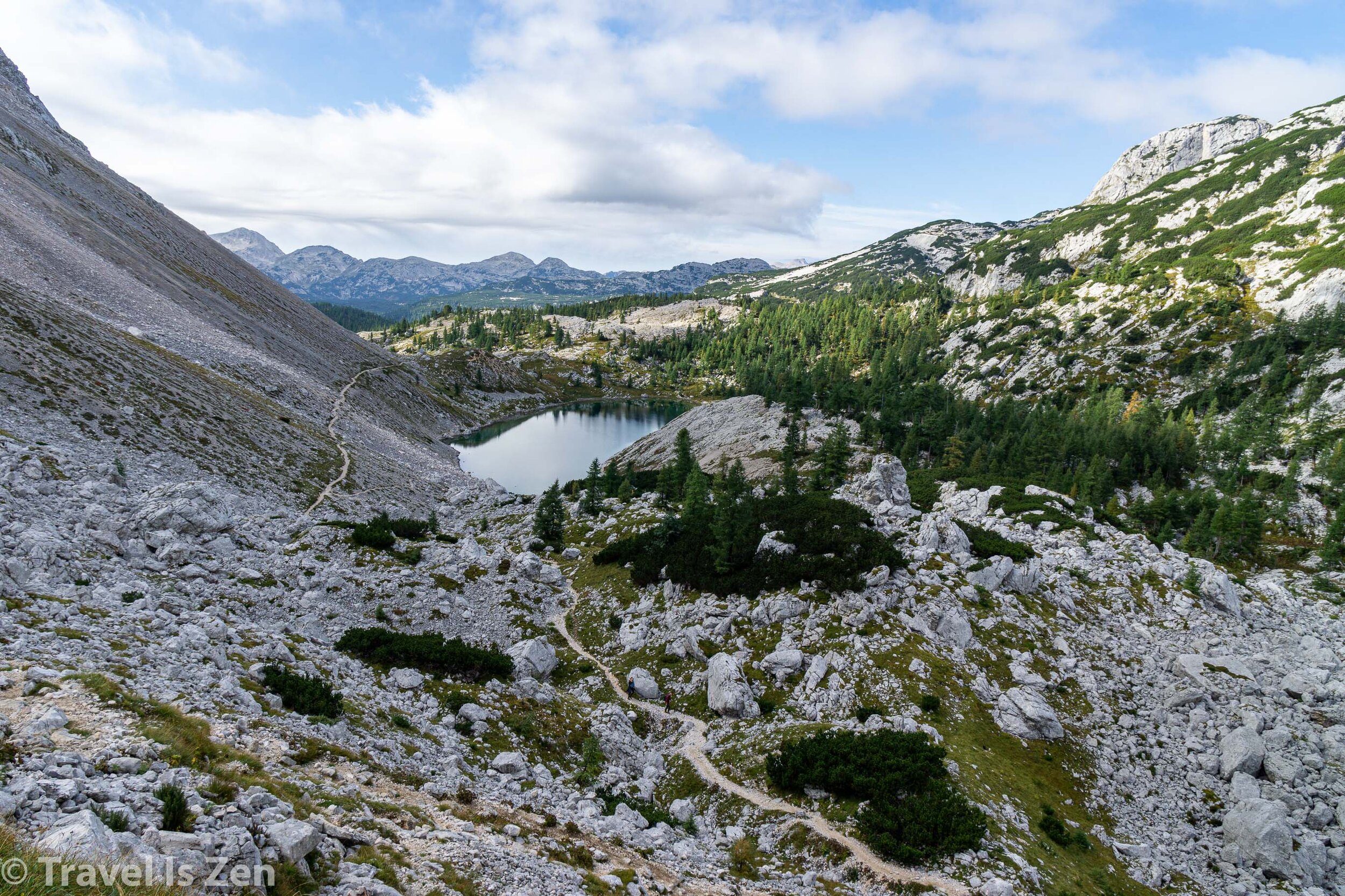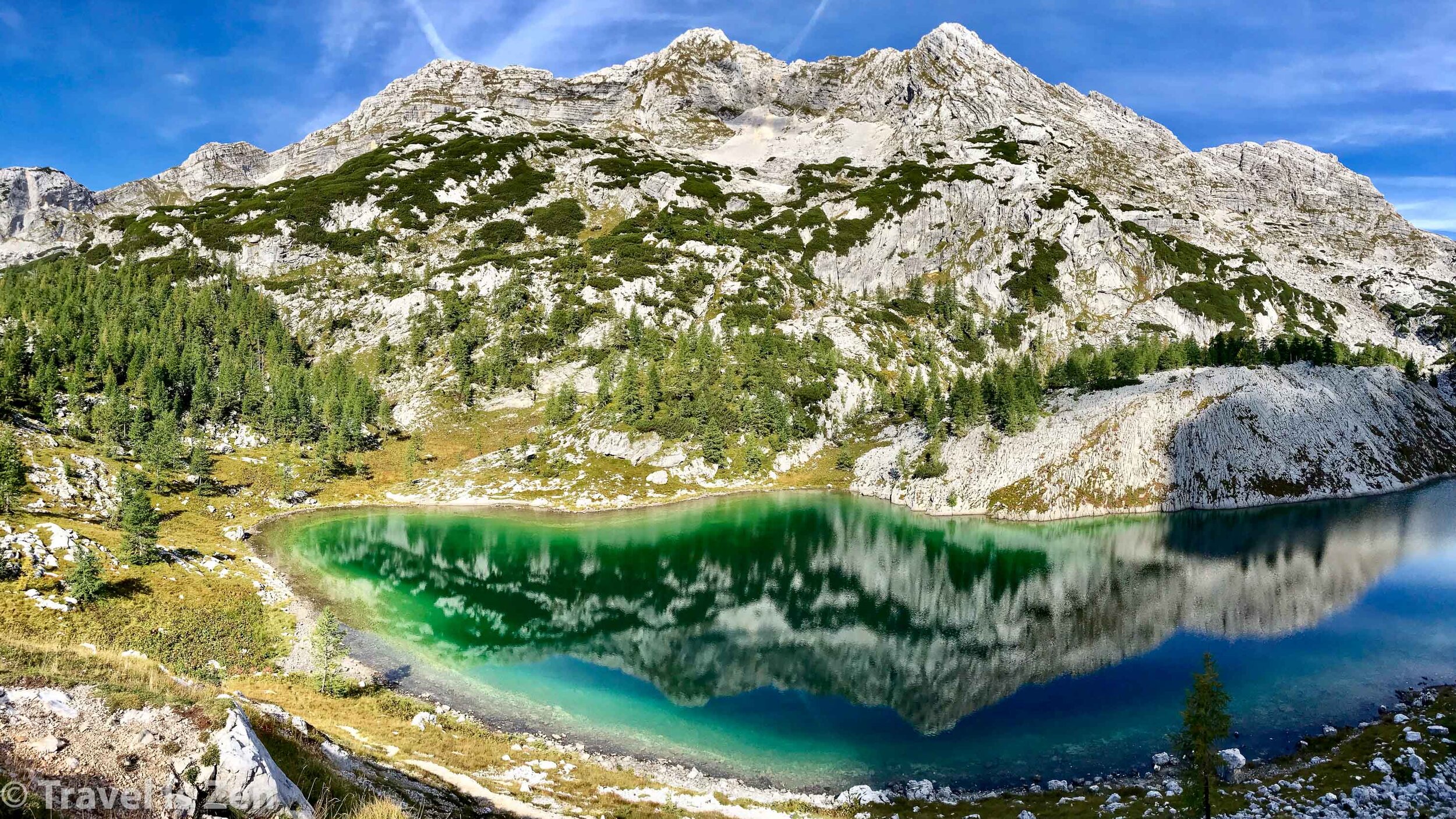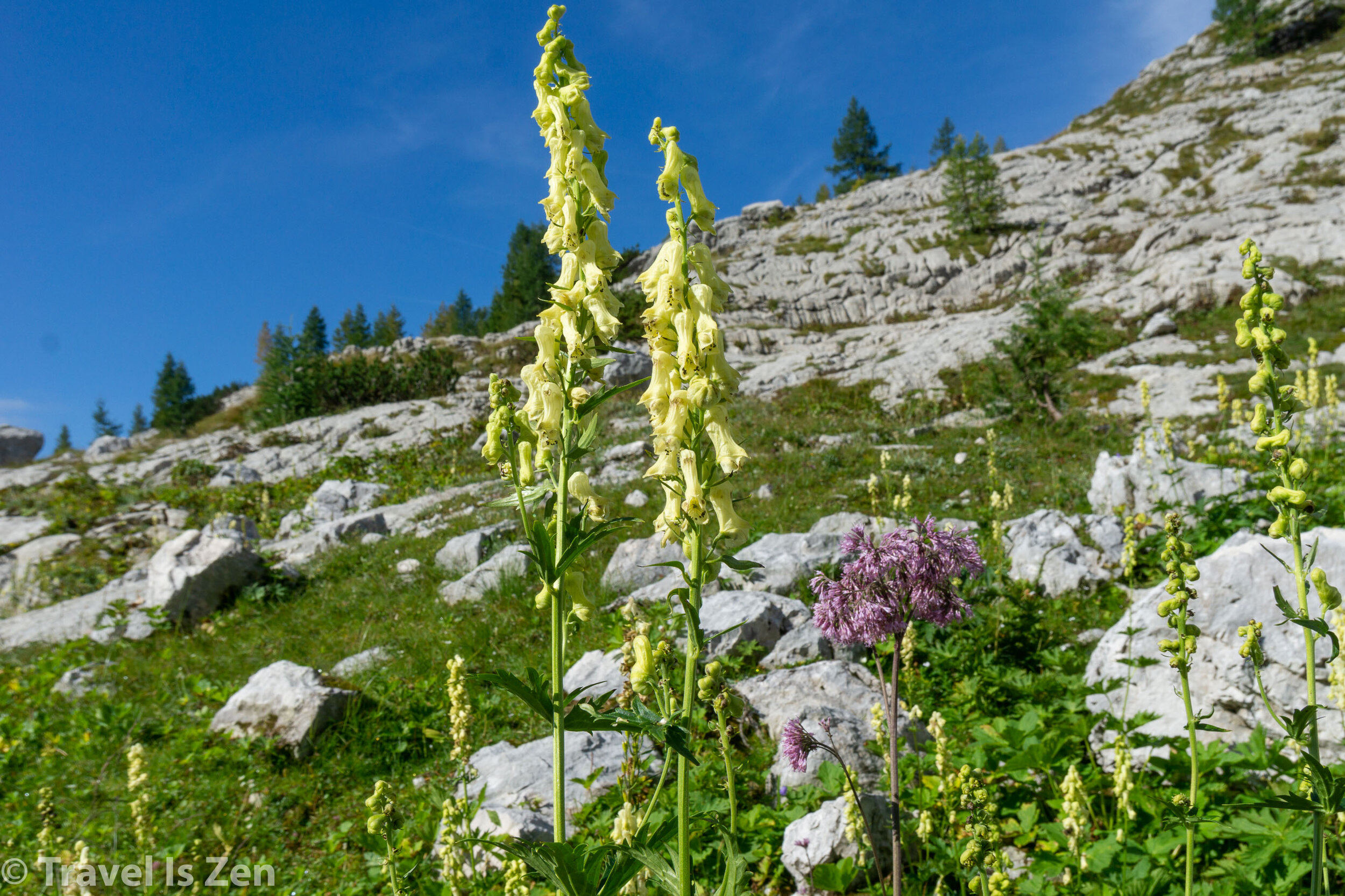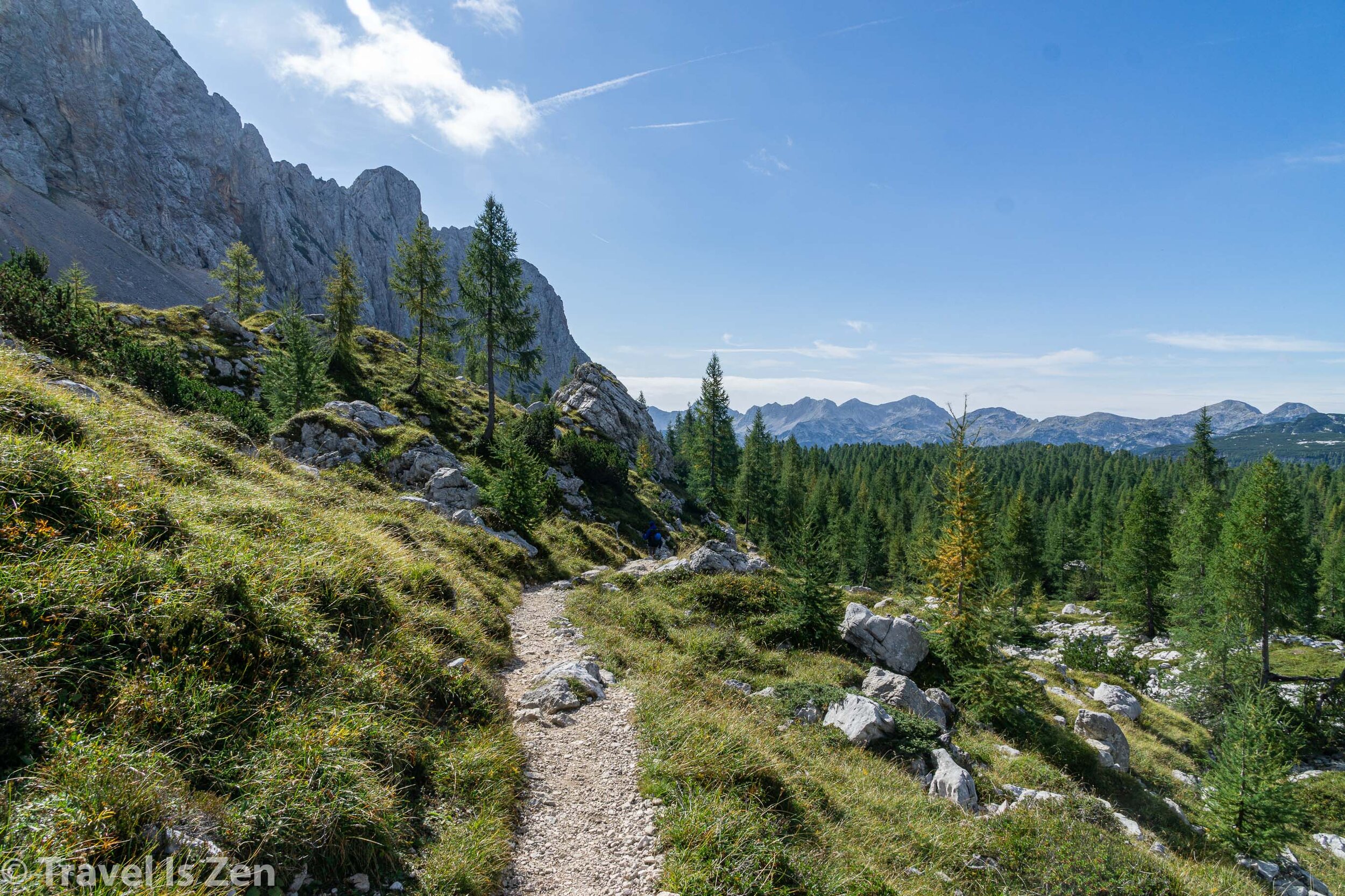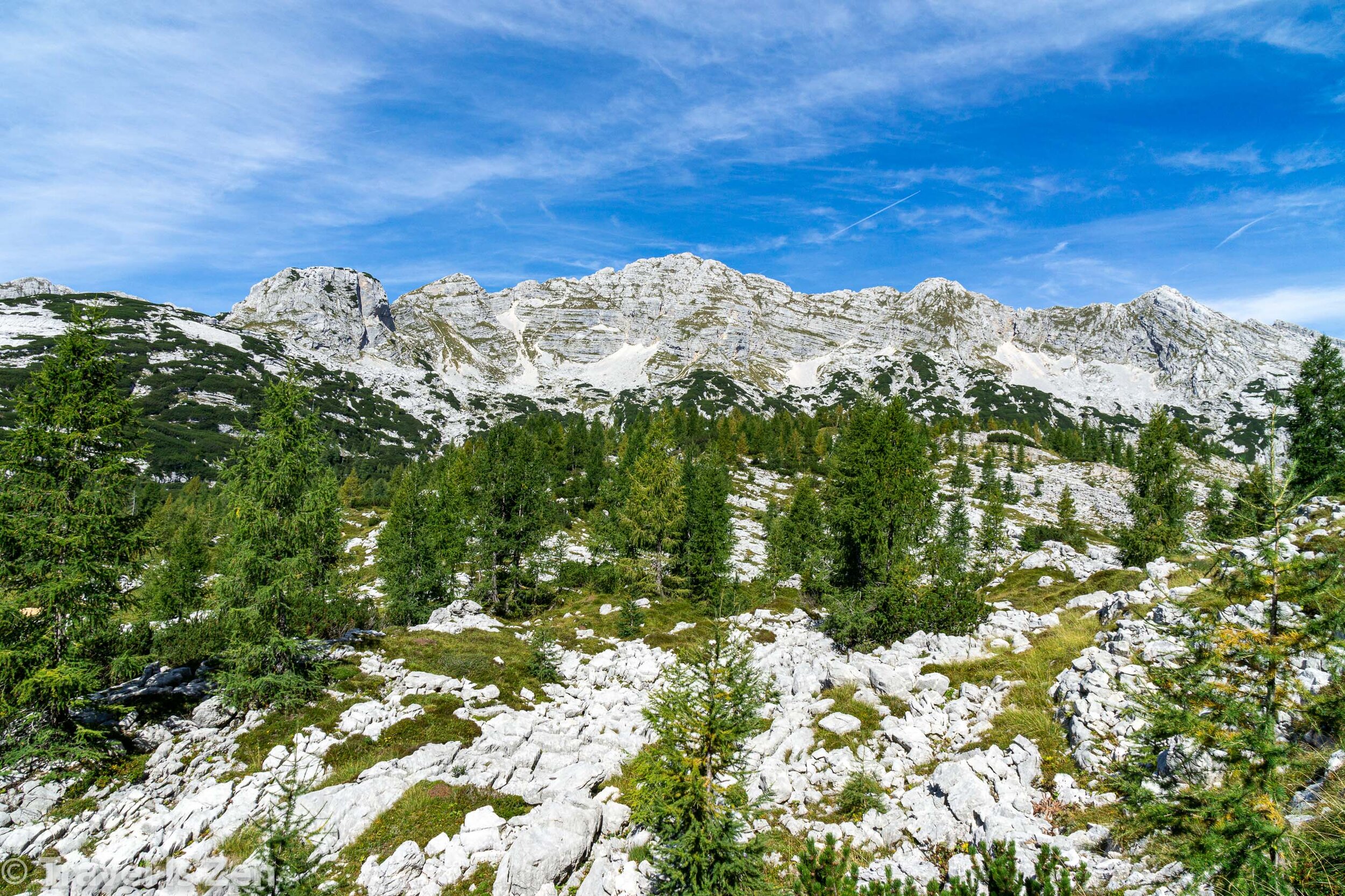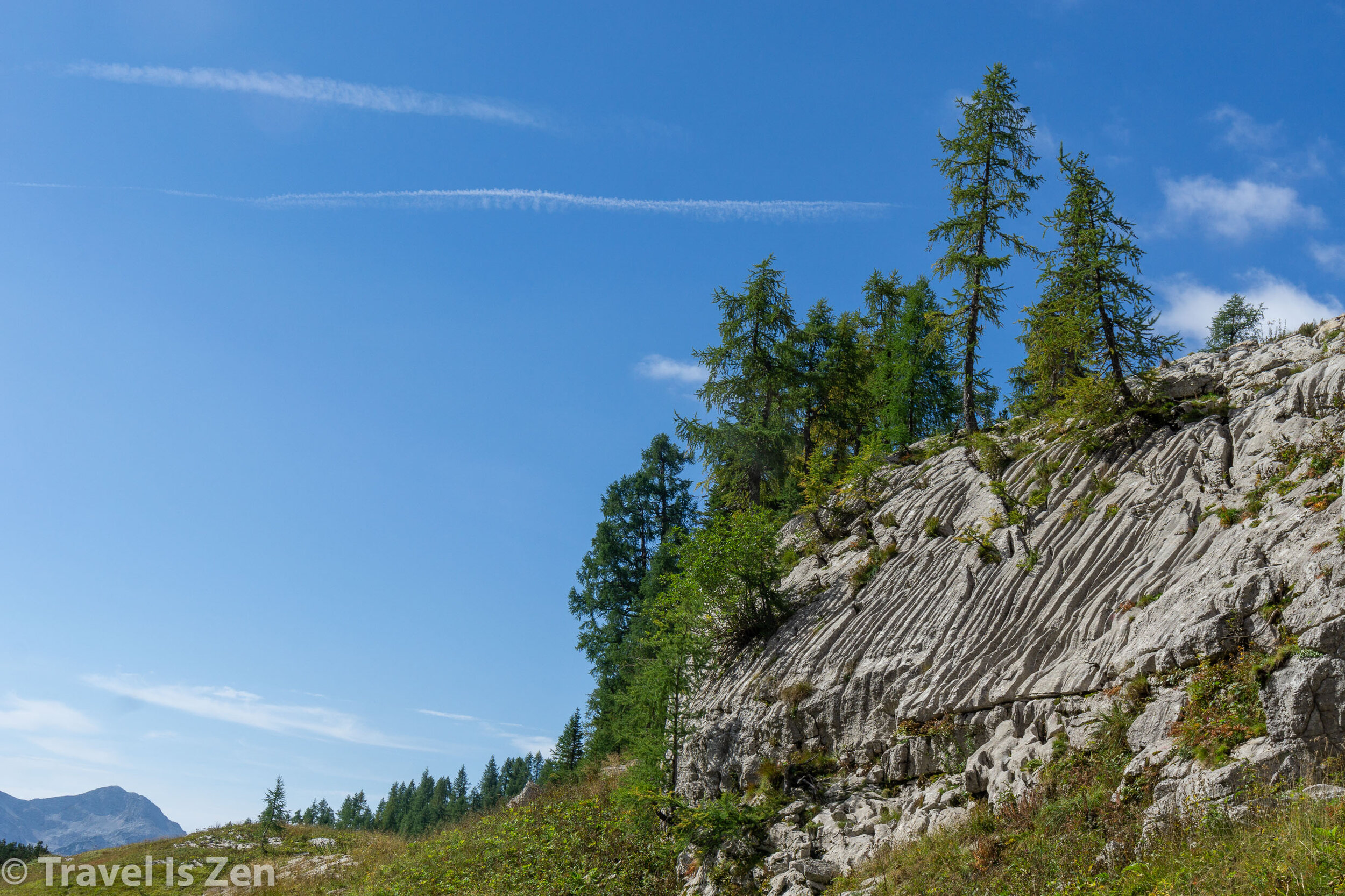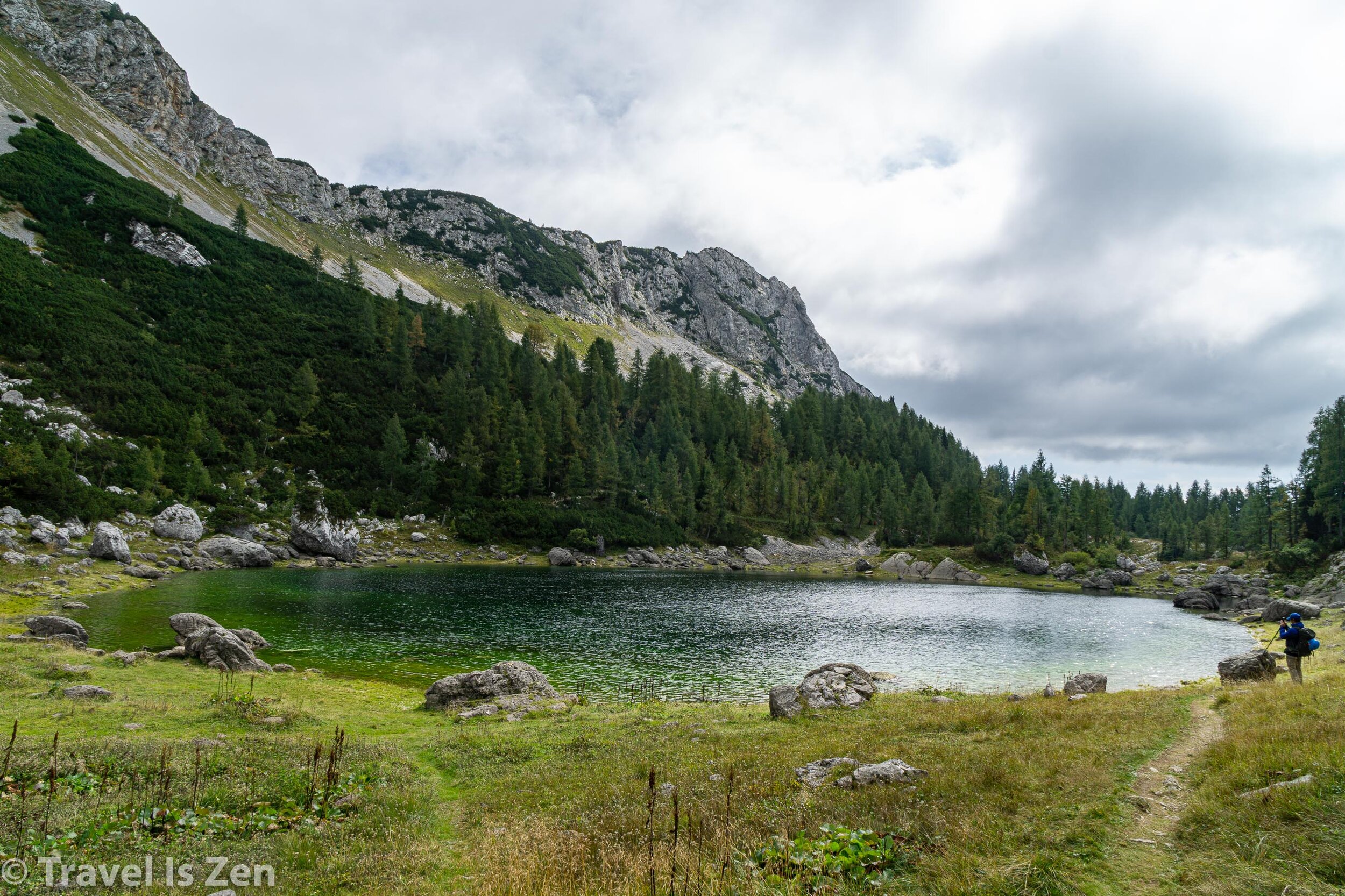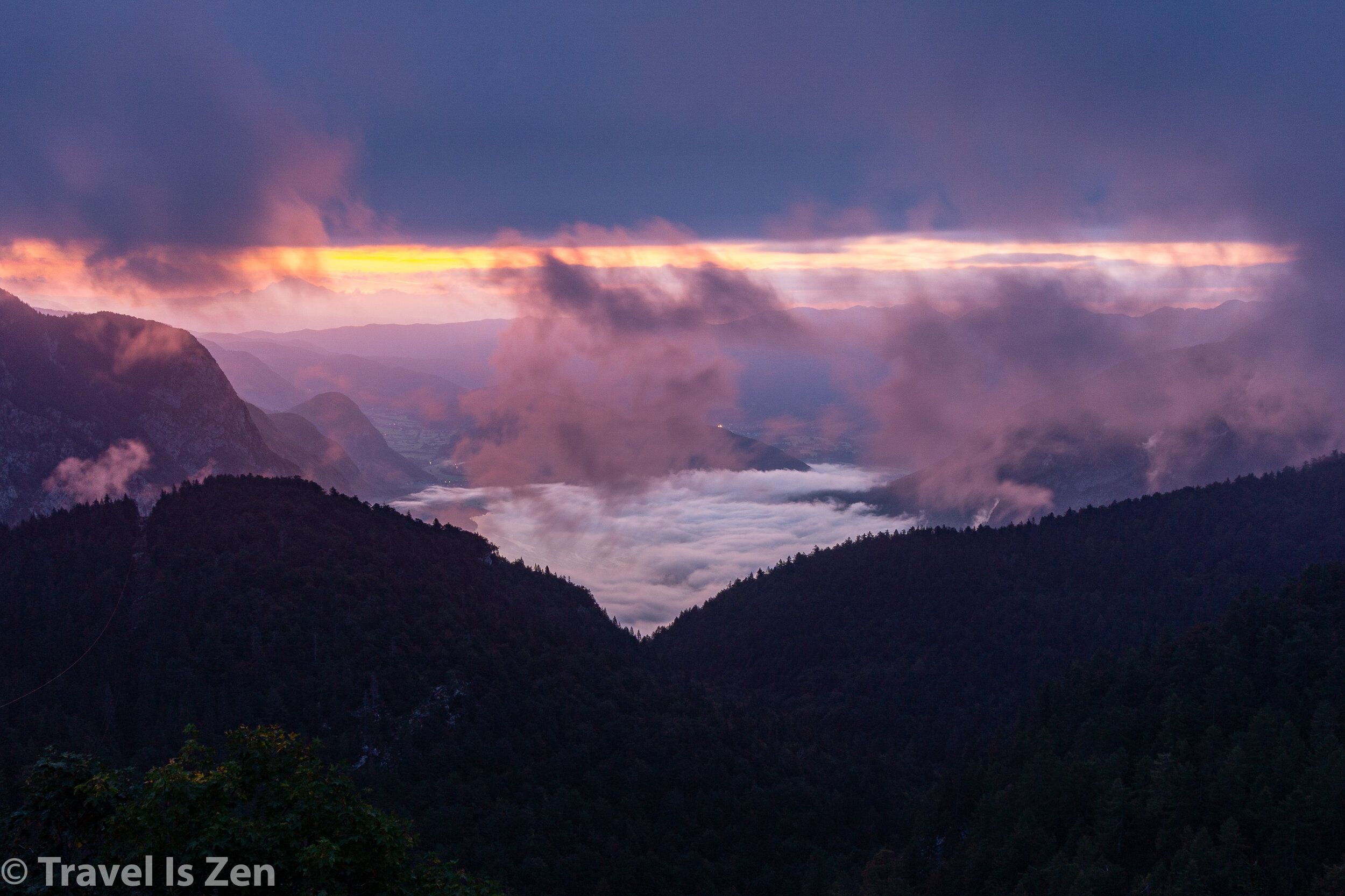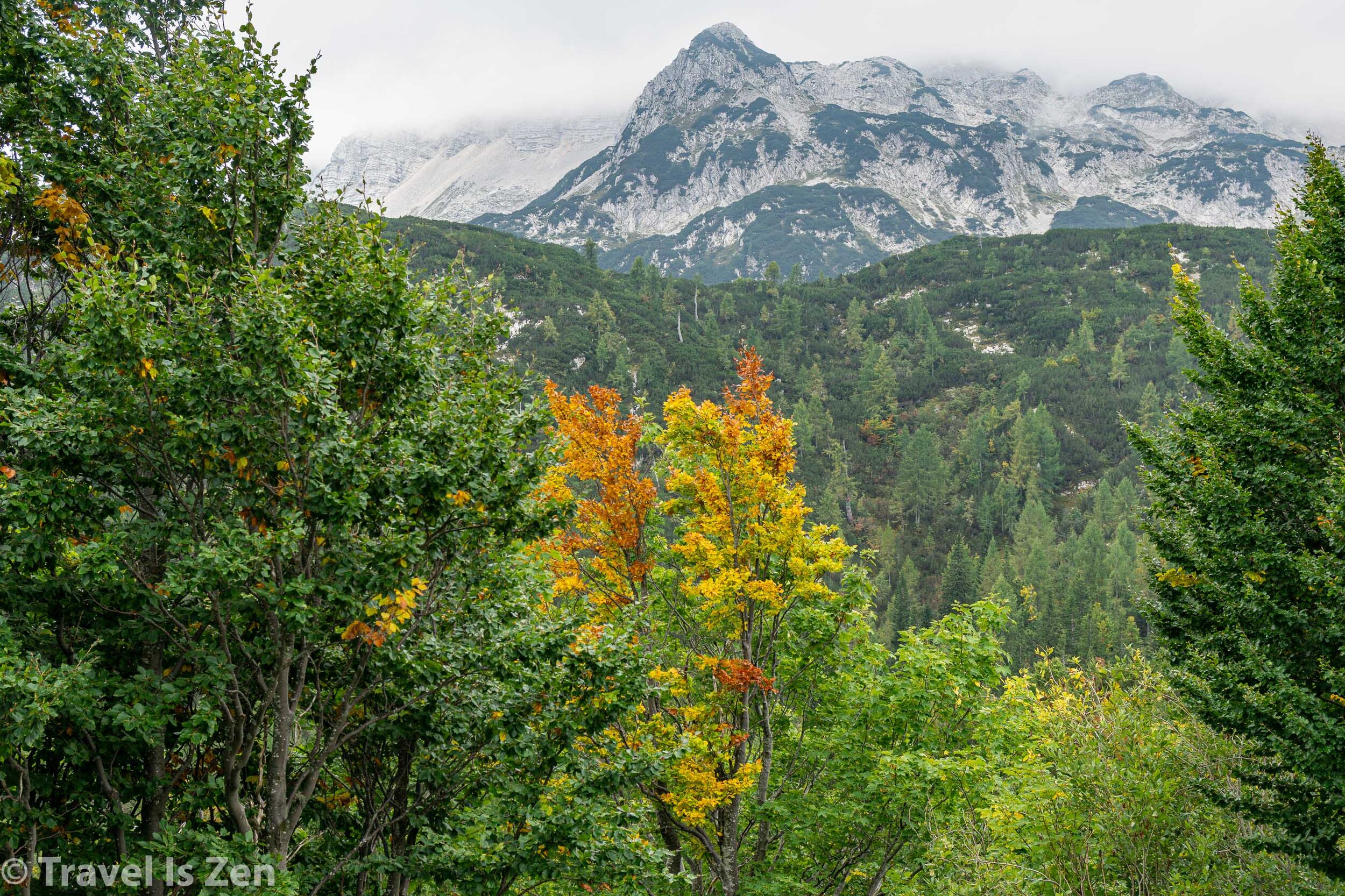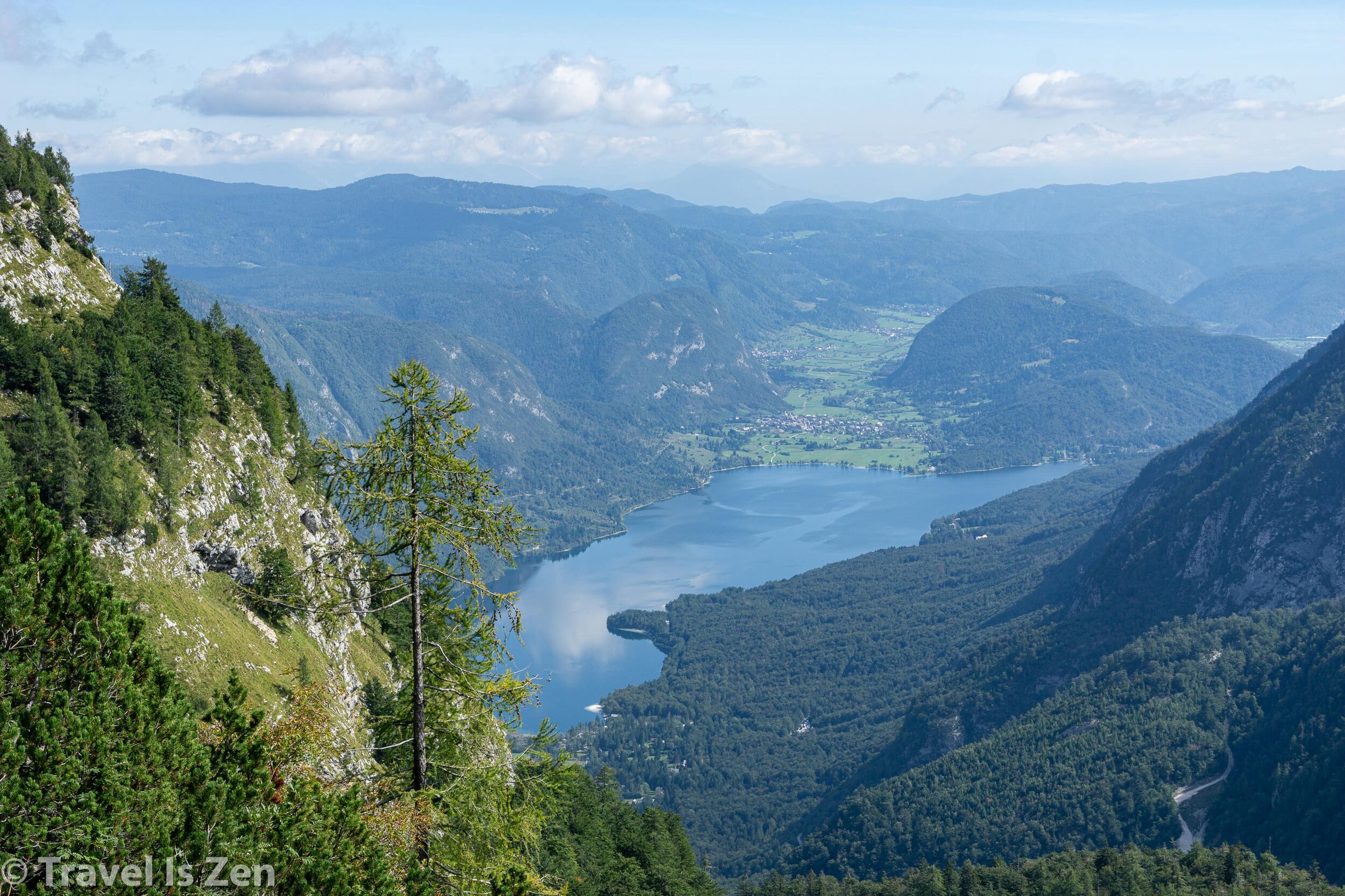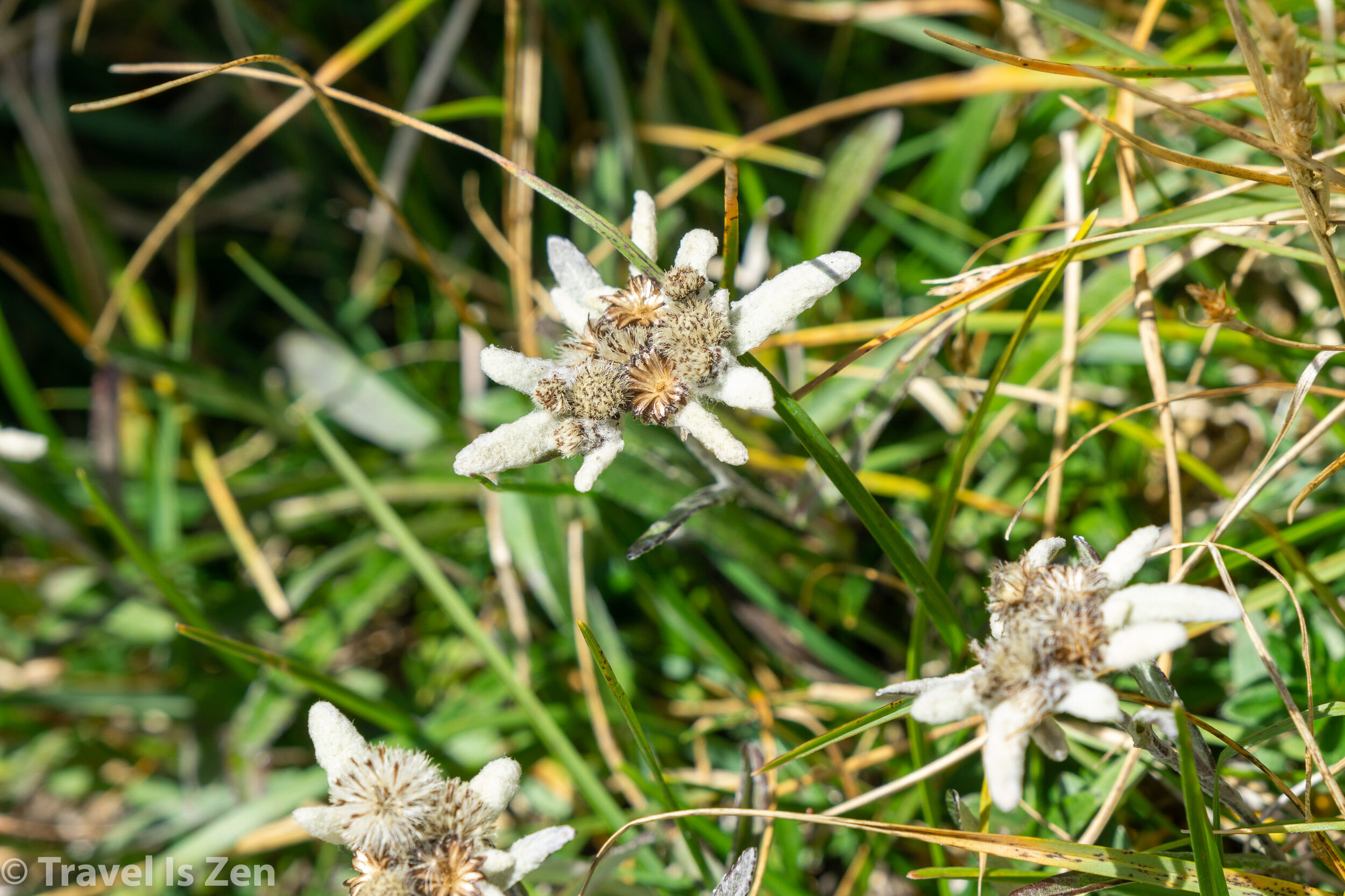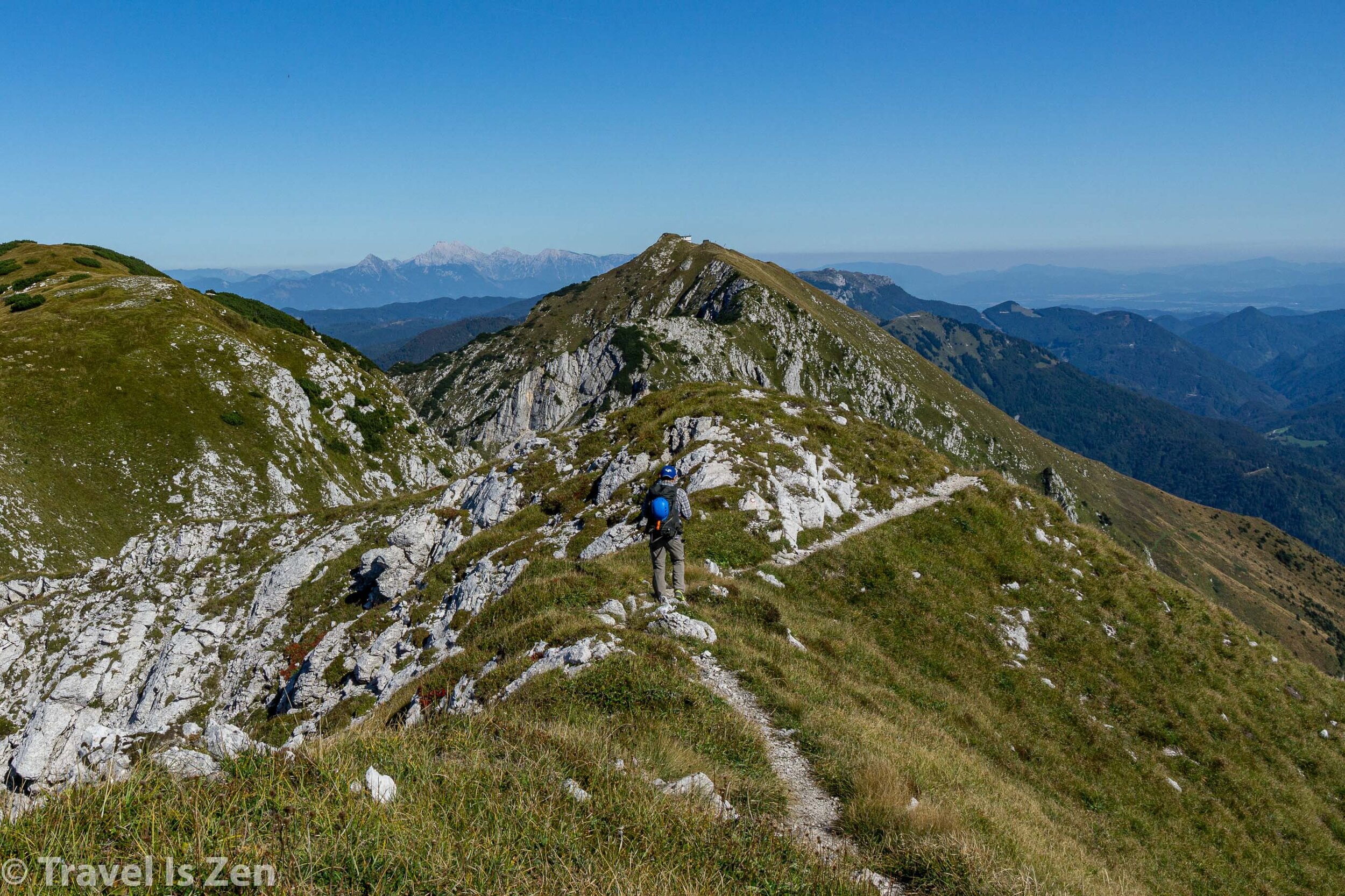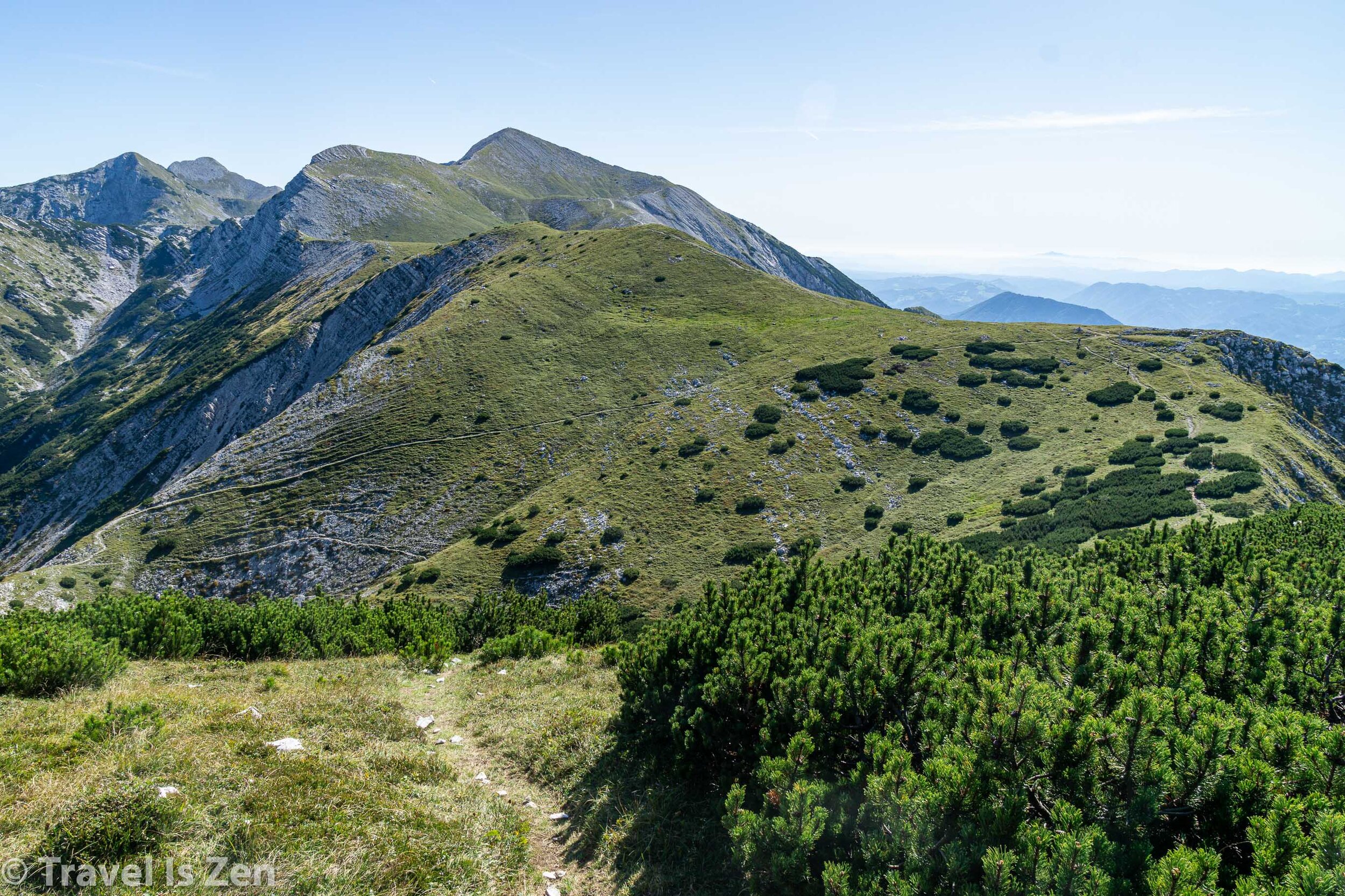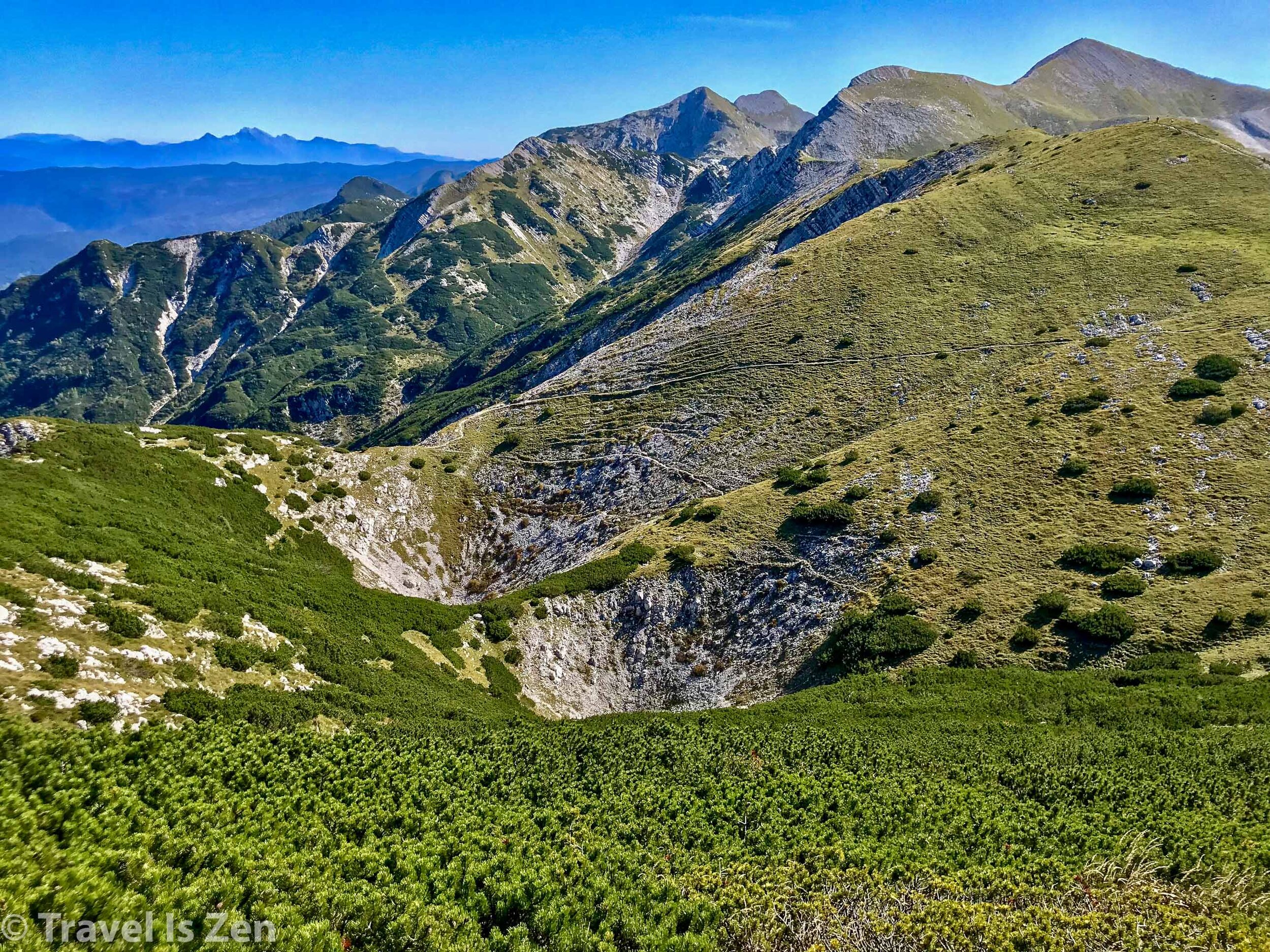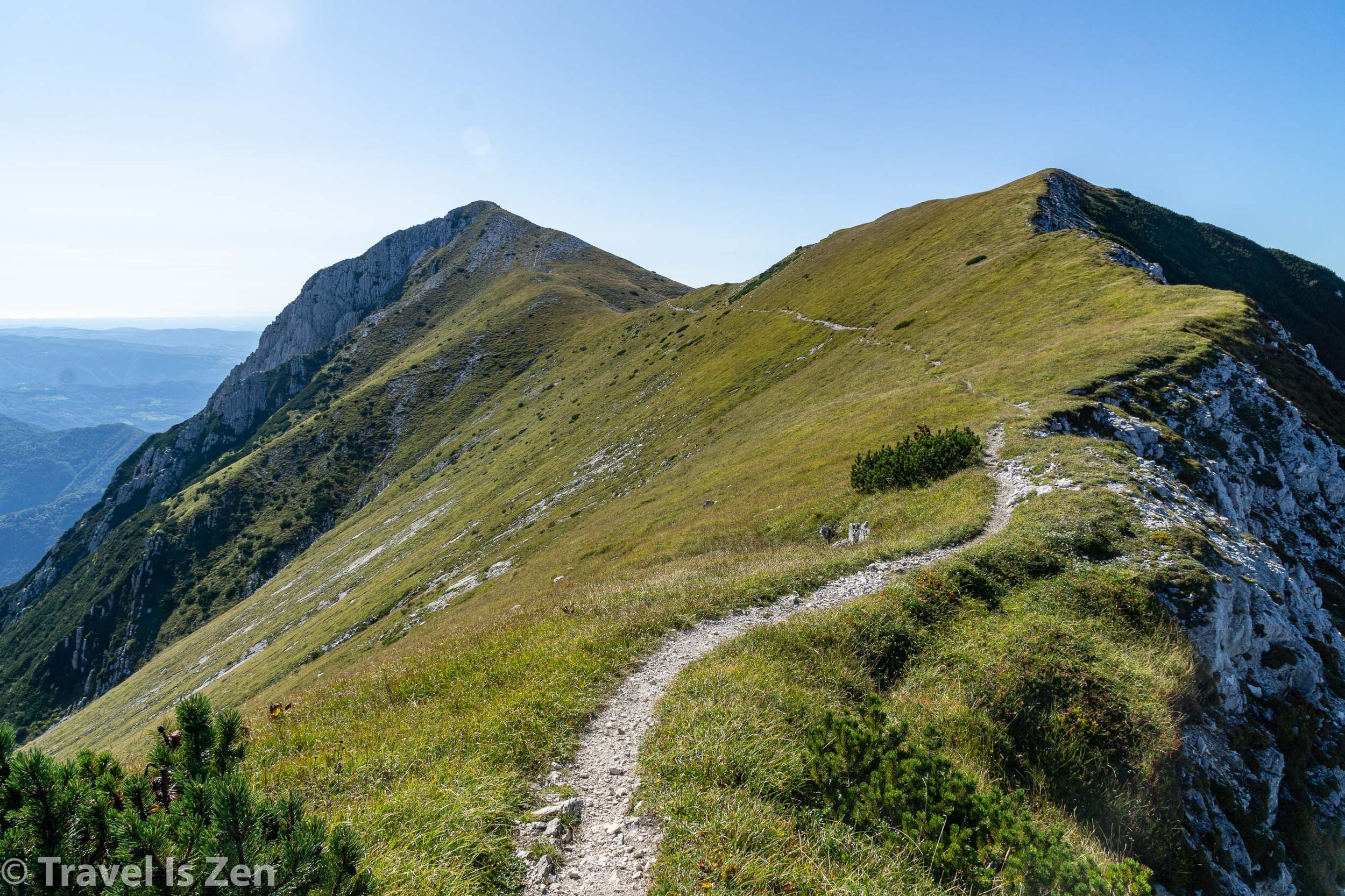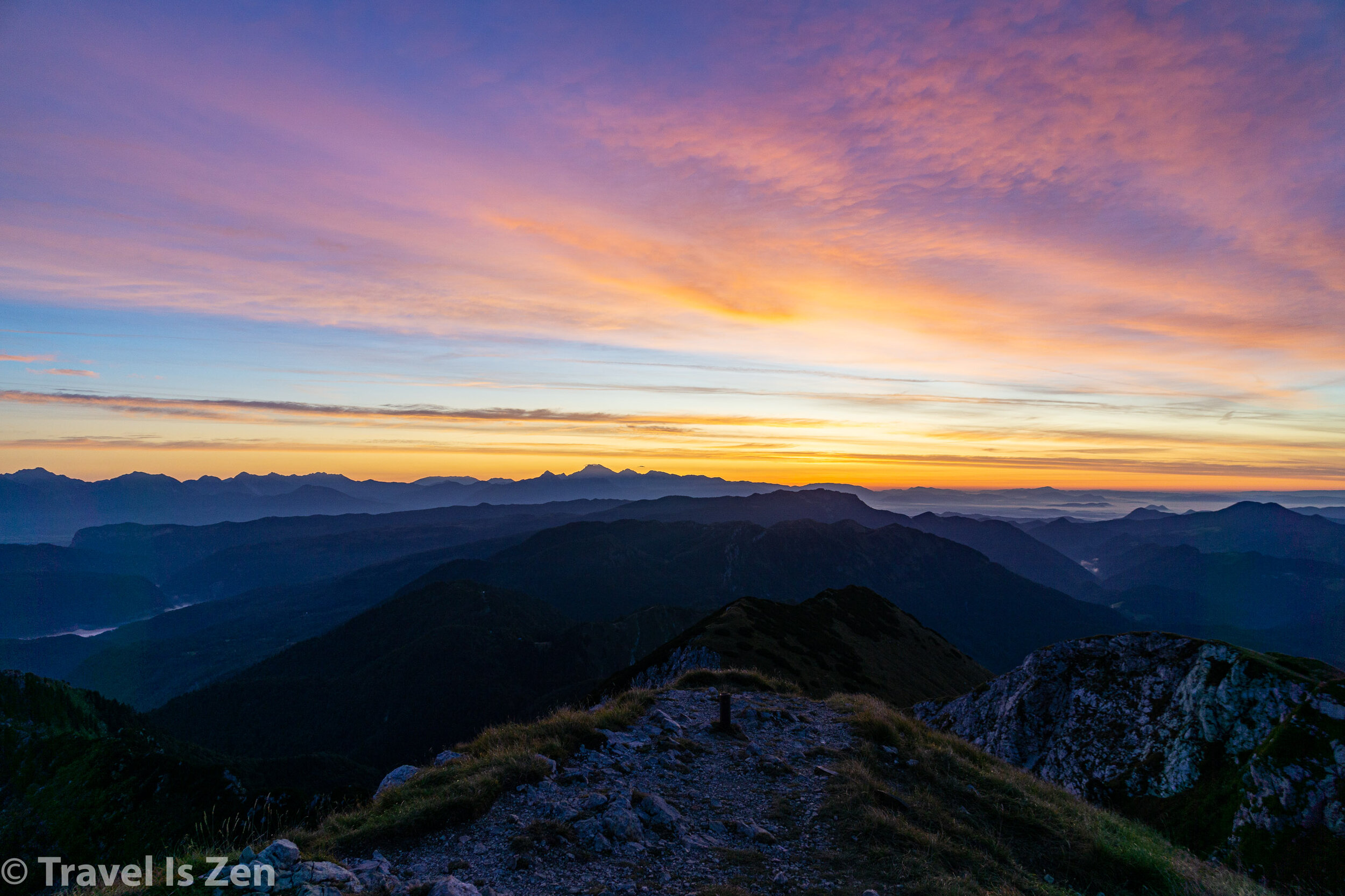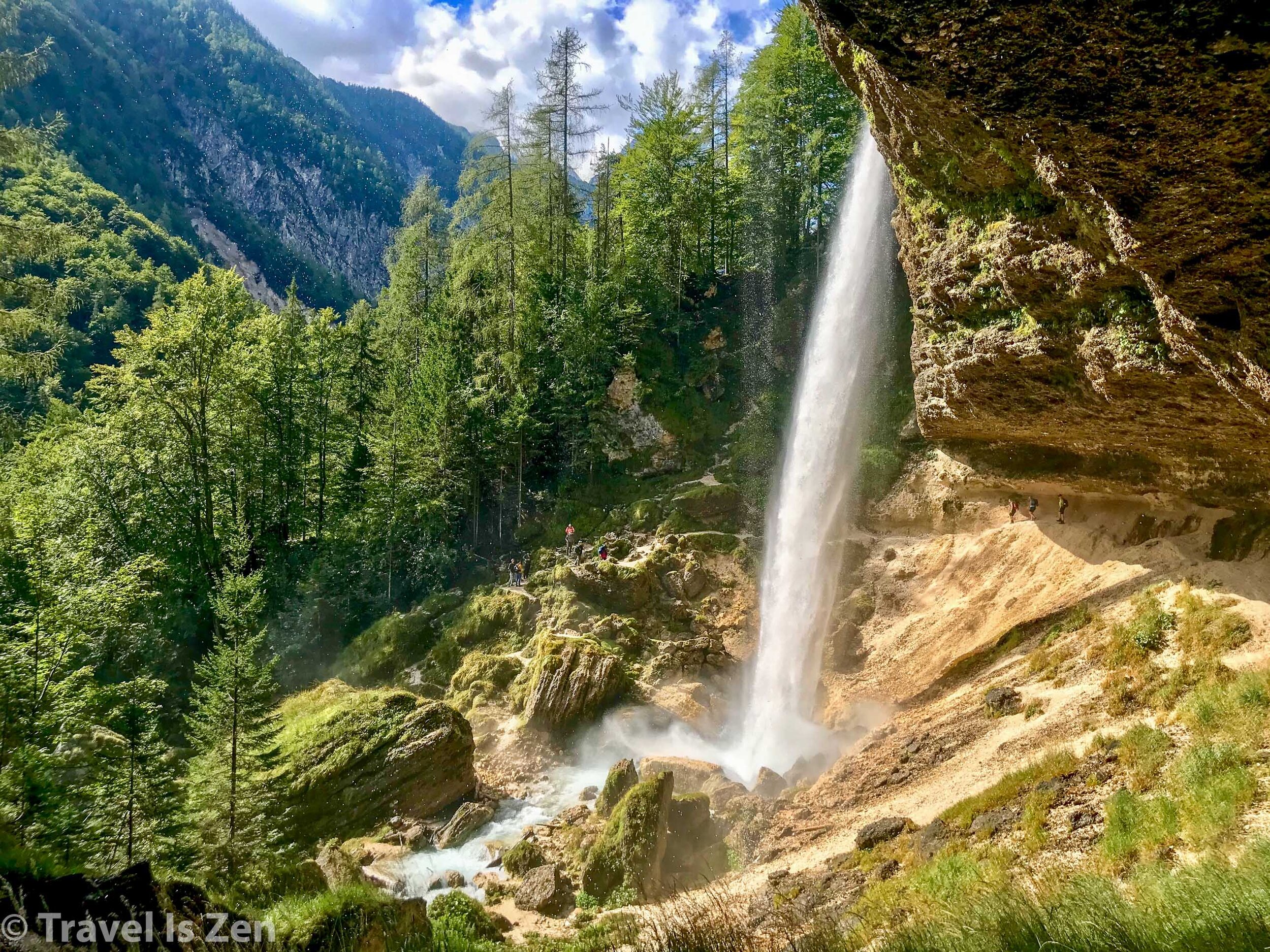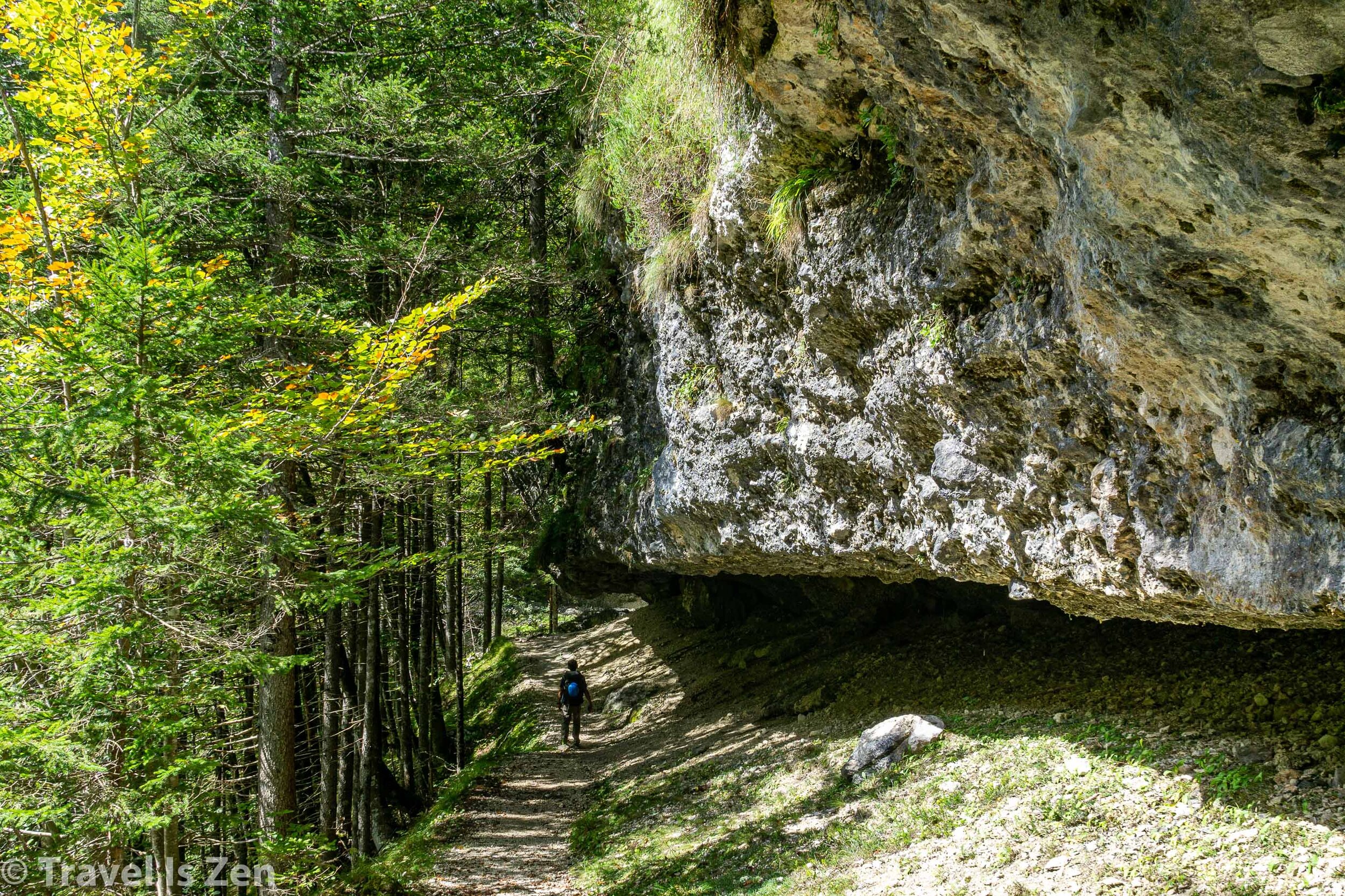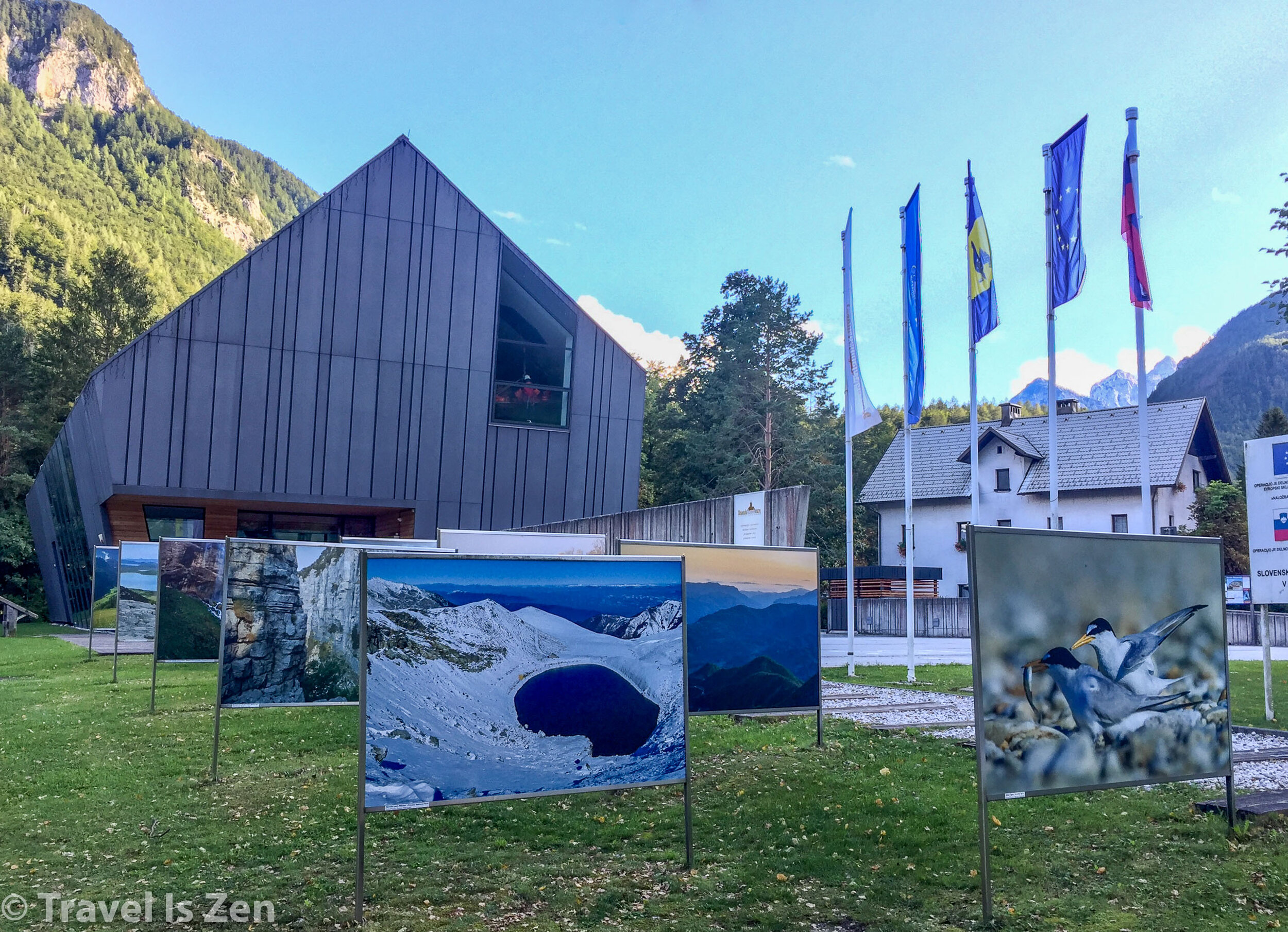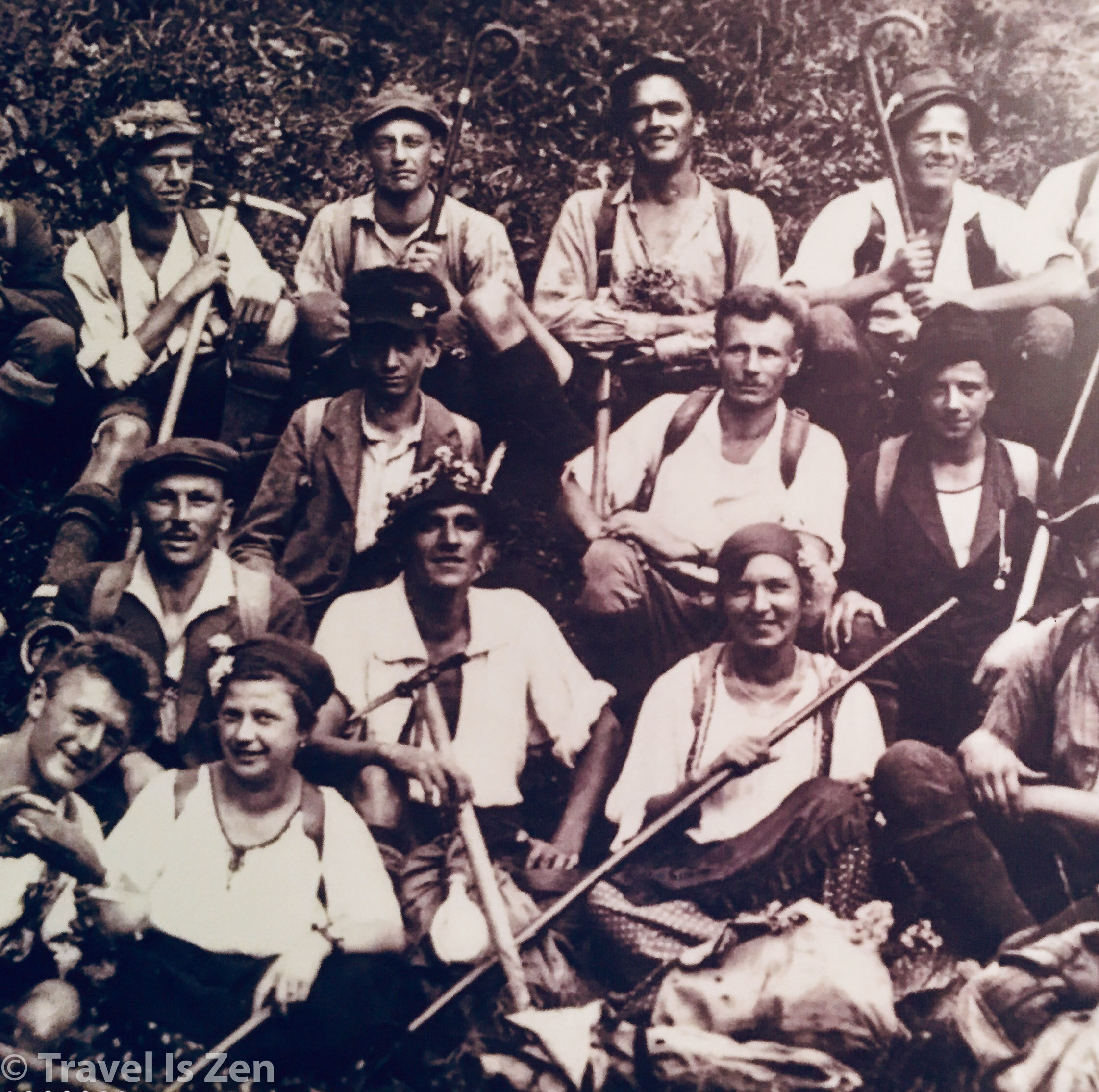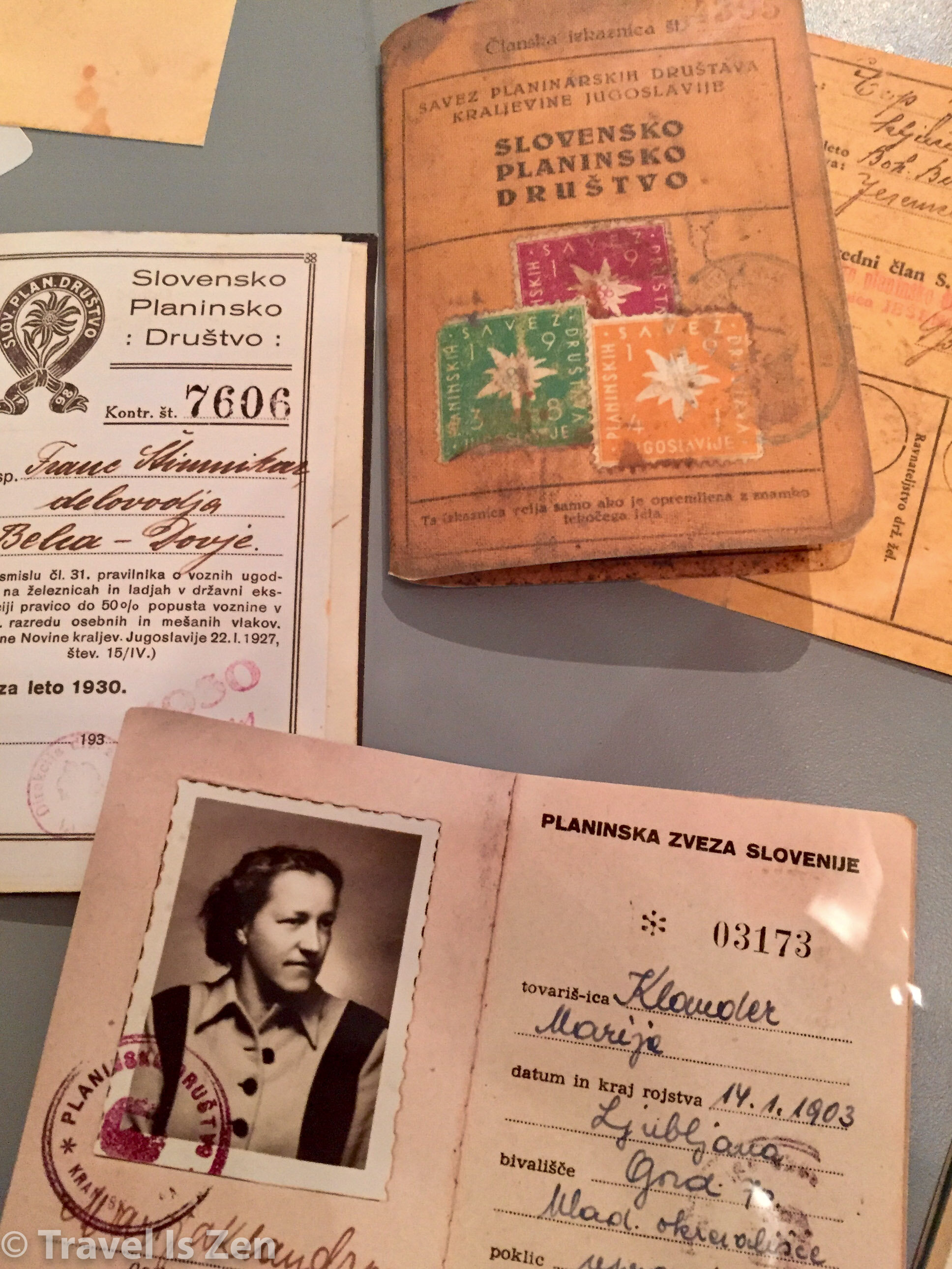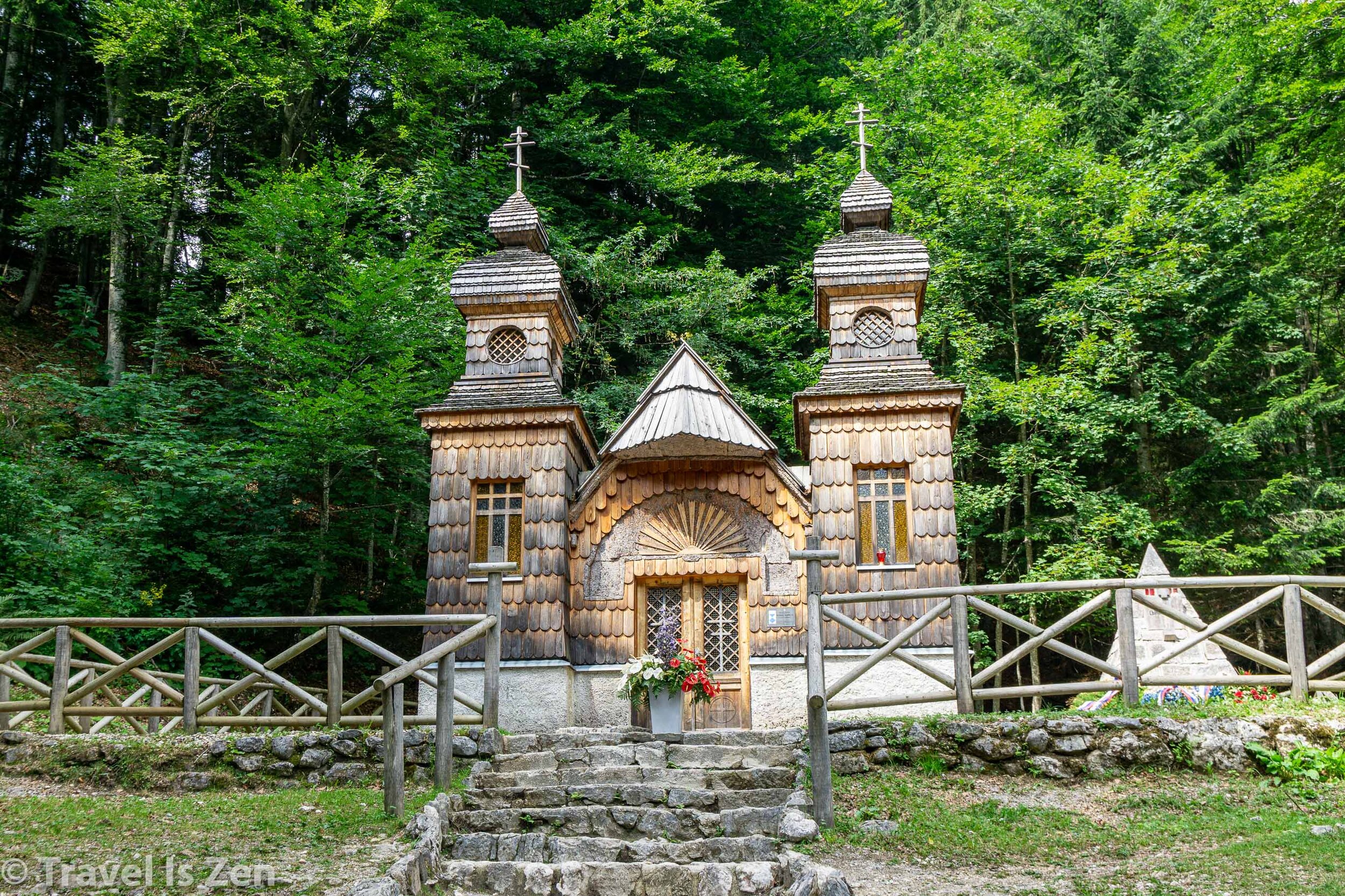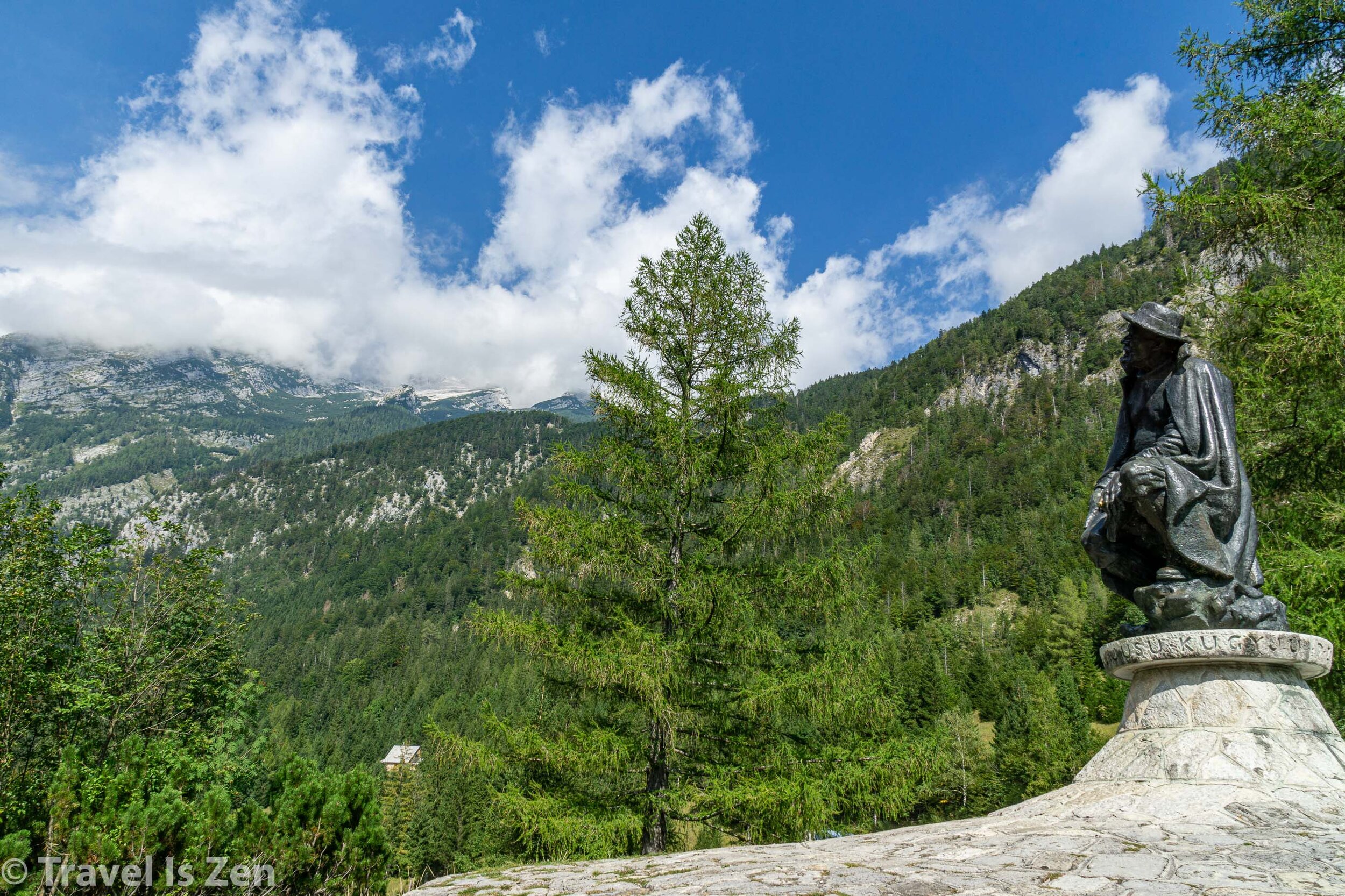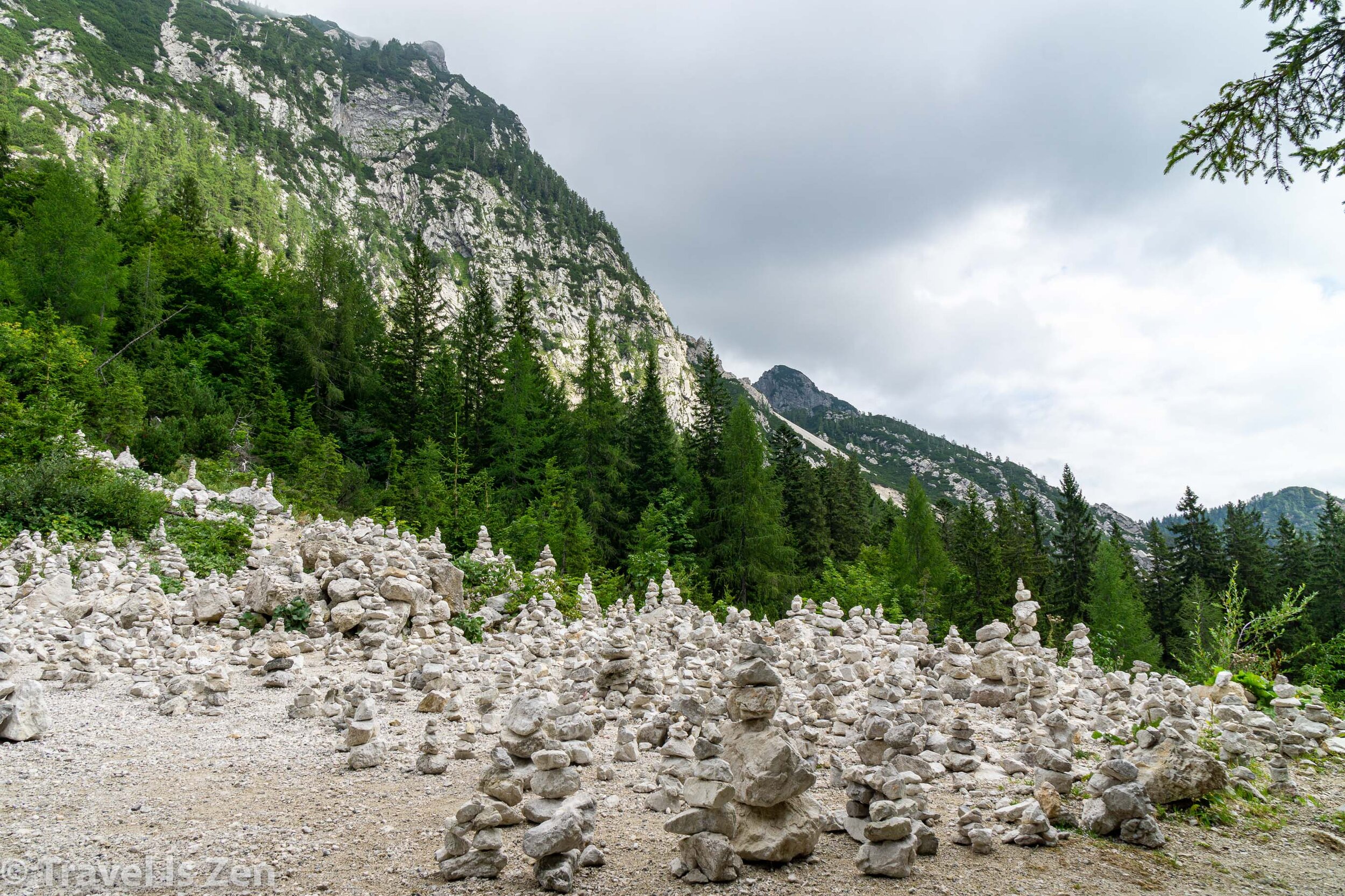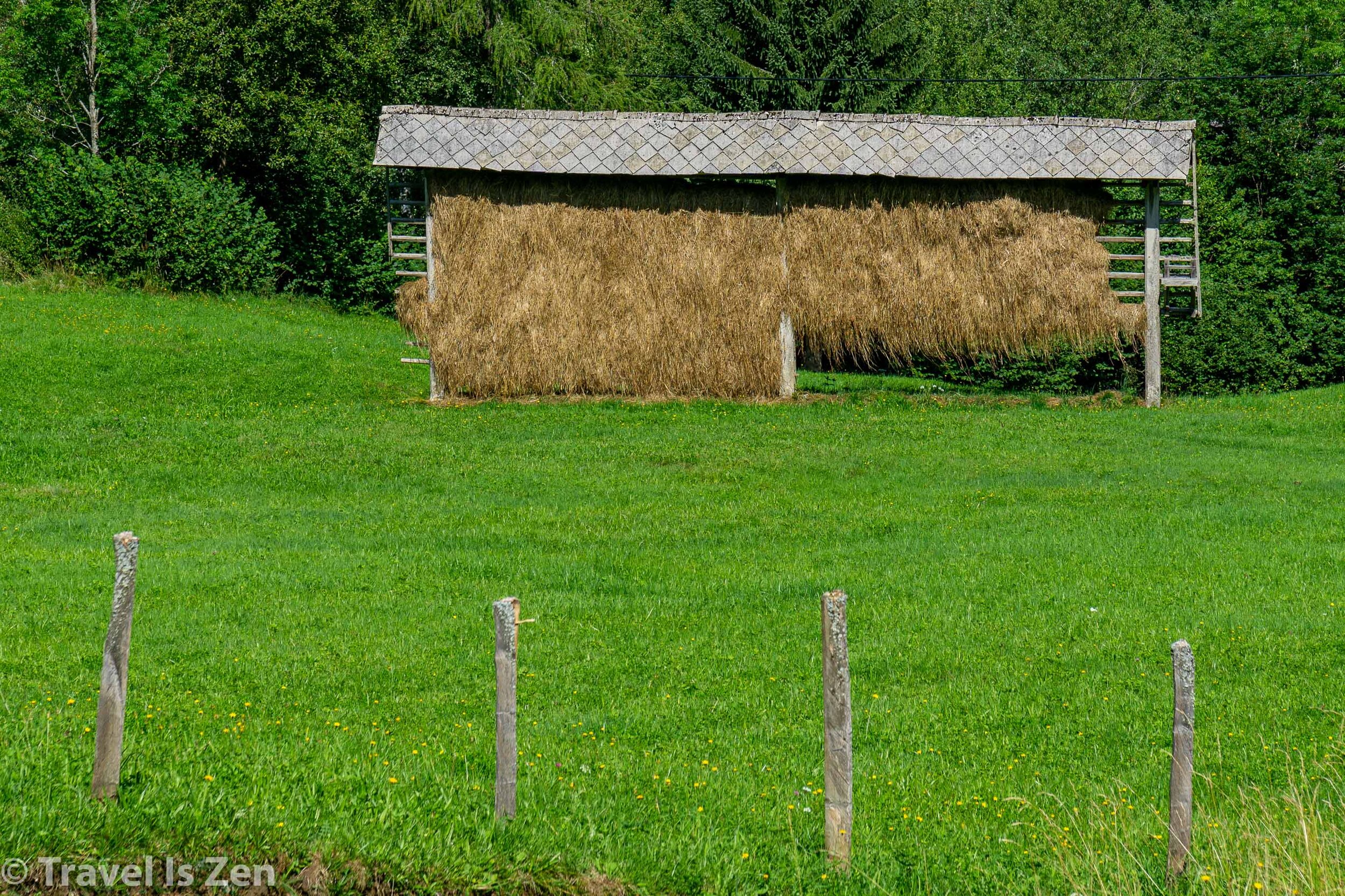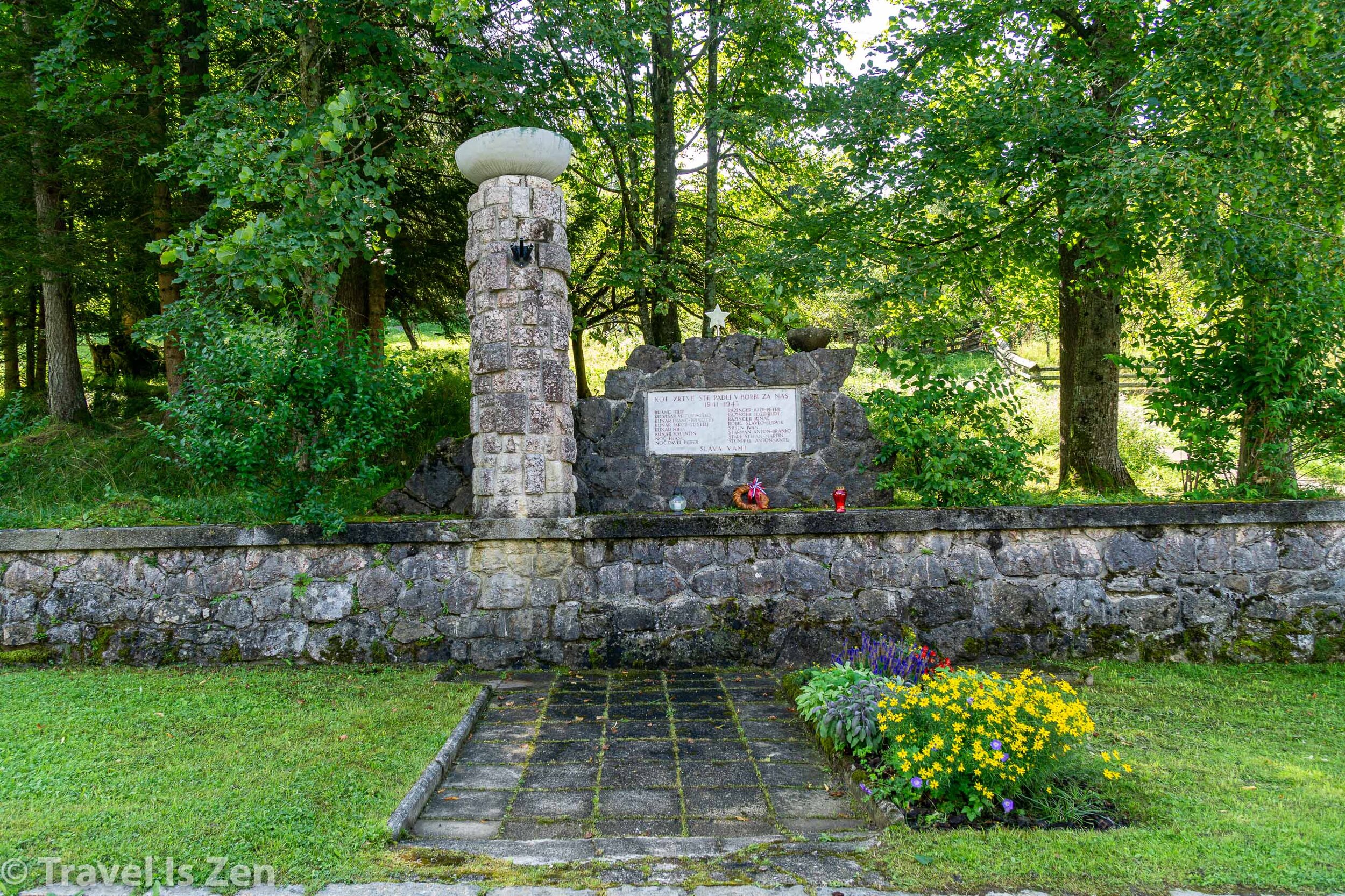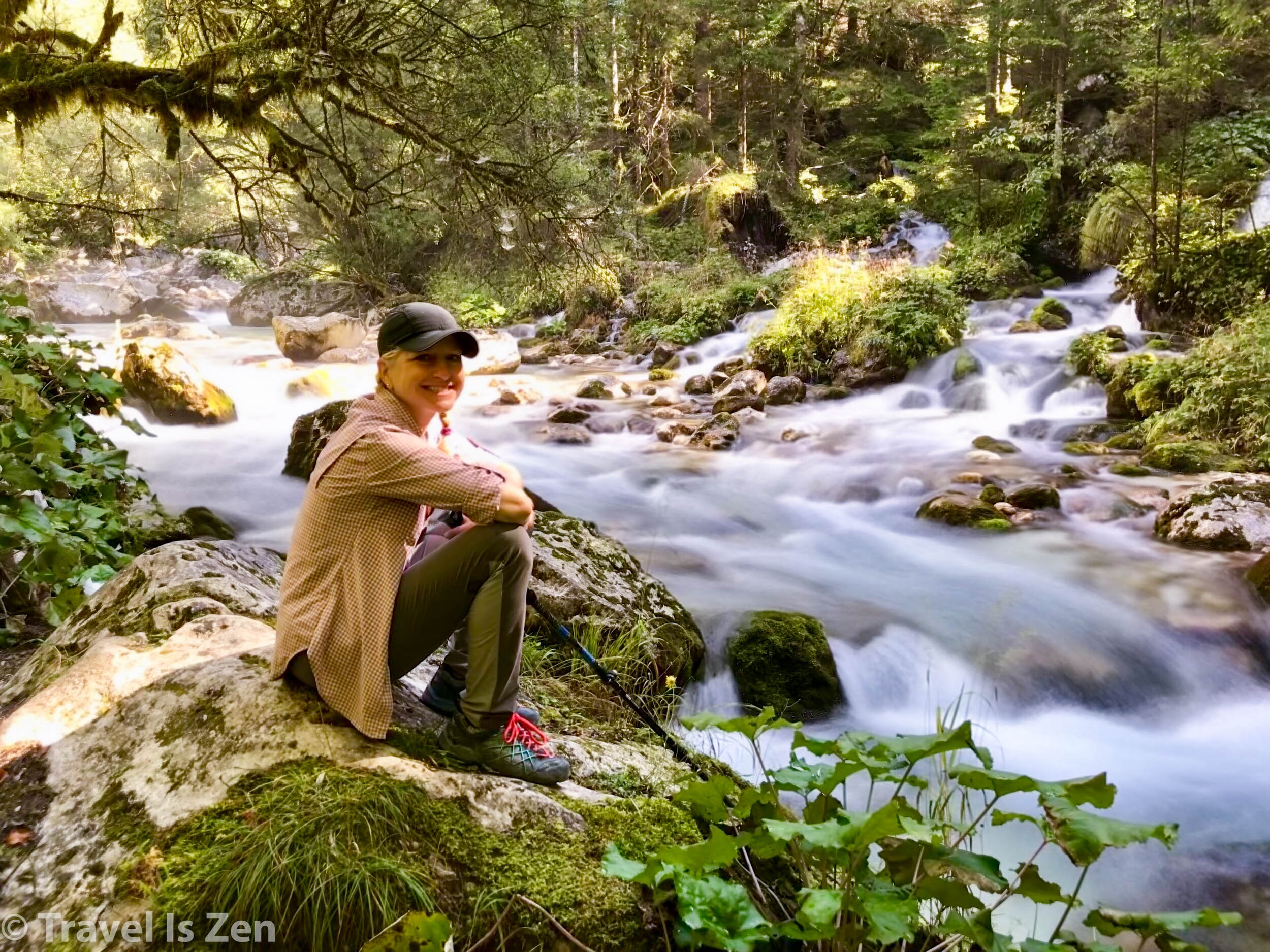Stages 6-8 of the Slovenian Mountain Trail: Julian Alps
OVERVIEW OF STAGES 6-8
The Julian Alps are the crown jewel of Slovenia, with 8500+ foot peaks, alpine meadows, crystal clear turquoise rivers, and waterfalls galore. The capstone of the Slovenia Planinska Pot is summiting Triglav, the highest peak in Slovenia. Triglav mountain (9396 feet) is the very soul of Slovenia; it’s even featured on the nation’s flag. Every able-bodied Slovenian is expected to climb to the peak at least once in his or her lifetime.
Triglav mountain (9396 feet)
Triglav is the iconic symbol of the country, but there is far more to Slovenia’s Julian Alps than just Triglav. During Stages 6 through 8 of the Slovenian Planinska Pot, we climbed to the peaks of Triglav, Cmir, Razor, Prisojnik, Mojstravka, Sleme and Jalovec, cooled off in the turquoise waters of the Soca River, pondered the subterranean interconnectivity of seven glacial lakes, learned a little regional World War history along Vrsic Pass, and finally saw some Edelweiss. Along the way, we found ourselves a new lifelong hobby: mountaineering. There is a ton to do in the Julian Alps. We spent over two weeks (16 days) in the Julian Alps, again deviating at will from the Cicerone guide to climb more peaks and see more cultural assets in the region. Our general route / timeline is explained further down.
If you have limited time in Slovenia, you do not want to miss Stages 6 - 8! If you are new to climbing or prefer trails without via ferrata, many of the peaks have gentler alternative routes. Pick up a good map that clearly shows the trail types; you can find them at any bookstore in Ljubljana. We liked the maps published by Alpine Association of Slovenia, which are laminated, 1:50 000 scale, and jam-packed with additional information, including hut amenities and scenic points of interest.
View across Julian Alps from Spičkom (Stage 7)
LODGING
This stage features a range of huts, from the most primitive to relatively luxurious (determined, of course, by the availability of wifi, electrical outlets, running water, and hot showers - never guaranteed at any hut!). The Julian Alps is the most popular area of the Slovenia Planinska Pot. Expect huts to be busy — especially in August — and call ahead to reserve a room or bed. We actually had to skip the Julian Alps in August, jumping ahead to hike stages 9-11 before returning to the Alps in September because EVERY HUT WAS FULLY BOOKED from August 11th through the 31st. This plan worked for us, as we were able to reserve primarily private rooms once September rolled around (unless noted in parentheses): Aljažev Dom, Triglavski Dom, Pogačnik Dom (we shared a full 12-bunk room because the dom was completely booked), Erjavčeva Koča, Zavetišče pod Špičkom (skupna only; we snuggled with ~20 other people), Zasavska Koča (skupna only; shared a full bunk room with 20+ Brits), Dom na Komni, Koča na Planini Razor, and Dom Zorka Jelinčiča.
PHOTO INSPIRATION
Stage 6: Triglav
Stage 6: Cmir
Almost nobody goes to Cmir, including Slovenians. Most people rush to the top of Triglav and then head back down to the valley, totally missing this gorgeous trail. The hike to Cmir is an incredible trail that runs along the top of the Vrata Valley, with stunning views and plenty of Ibex. The trailhead starts from Dom Valentina at the plateau below Triglav’s northeast face.
Stage 6: Razor, Sleme, Mojstravka, Prisojnik
The day hike to Sleme and Mala Mojstravka was not in the Cicerone guide. We had a blast climbing Mala Mojstravka and hope you have time to squeeze it into your itinerary! We chose a different route to Prisojnik, as well, starting from Erjavčeva Koča, rather than trying to kill ourselves by hiking Razor and Prisojnik in one day. We loved the Kopiščarjeva route because we got to climb through the Okno “window”. Very cool! Bring your harness and climbing gear, though. You will definitely need it for this route.
Stage 7: Jalovec
Stage 8: Seven Lakes Region, Lower Bohinj Hills
Holy smokes is this section surrounding Lake Bohinj gorgeous! It was mid-September and the leaves were just starting to change. If you are not up for the rigorous peaks of the northern Julian Alps, then I highly recommend a few day hikes in the Lower Bohinj and Seven Lakes region. It’s relatively tame and you get a front-row view of the northern Alps and Lake Bohinj spread out before you to simply enjoy.
TOTAL WALKING MILES/KM: ~110 Miles
Stage 6: 55 miles / 88.5 kilometers
Stage 7: 17.5 miles / 28 kilometers
Stage 8: 37 miles / 59.6 kilometers
COST PER DAY PER PERSON: $44
Average cost per day during stages 6-8 was USD $44.00 a person, which included mostly private rooms in mountain huts, meals and drinks (including wine and beer). We paid primarily in cash, as the huts did not accept credit cards.
EQUIPMENT
Via ferrata kit, climbing shoes, gloves, and helmet needed for stages 6 and 7. Bring a day pack for summit days. Walking sticks are also useful for scree slopes in stages 6-8. I recommend folding sticks that you can put into your day pack. We did not have these, but it would have been nice. When we attached our collapsed walking sticks to the outside of our bags when not needed, they extended beyond the bag and either poked us in the head, scraped the ground, or were just otherwise always in the way. If I were to do it again, I’d get some folding sticks that could go inside the bag when not being used.
It is also useful to have a water filter in these stages because many of the huts have only rainwater. Posted signs warn visitors that the water from the tap is not fit for drinking. The alternative is to buy expensive bottled water purchased at the huts. We have an American Red Cross rechargeable UV filter, which is small and light. We used it frequently in stages 6-8.
FOOD
All the familiar staples are on the menu in stages 6-8, including sauerkraut and bean soup (jota), barley porridge (ričet), and sausage (klobasa). But here you’ll also find beef goulash (sometimes with the option of polenta) and pasta with meat sauce. By these later stages, we also learned to ask for horseradish and ayvar sauce (sweet pimento pepper sauce) for our klobasa, which made sausage more interesting. Unless you ask for it, they do not give you any kind of sauce for klobasa. We actually started carrying our own tube of horseradish and a small jar of ayvar, which you can purchase at a Hofer or Mercato in any town.
Area Attractions (Side Trips)
There are several towns and attractions worth exploring while you are in the Julian Alps. If you just stick to the Cicerone guide, you could miss them. We took rest days to ride the bus or walk to some of the area’s cultural attractions, such as the Alpine Museum in Mojstrana, the Russian Chapel on Vršič pass, the source of the Soča River and to explore the towns of Trenta, Jesenice, and Mojstrana-Dovje.
Our Route for Stages 6-8
We deviated quite a bit from the Cicerone guide in the Julian Alps, especially taking more time for stage 6 so that we could add a few other mountain peaks and cultural excursions. As I also stated in the Stage 3 Kamnik-Savinja section, mountains and via ferrata trails in the Alps are challenging enough without a huge backpack. We arranged our route so that we could leave our backpacks at a “base” hut and climb with just a daypack instead. Furthermore, the route described for Stage 6 Day 5 in the Cicerone Guide seems absurd and ridiculous. It involves climbing multiple MAJOR, technically-challenging peaks in a single day (Razor and Prisojnik), supposedly with your full pack (since the stage is designed as a hut-to-hut hike). This just wasn’t feasible for us mere mortals. The route we did worked perfectly for us.
Our general route / timeline looked something like this:
Mojstrana to Aljažev Dom. We left our large packs at Aljažev Dom and hiked up to Triglavski Dom via the Prag route with just a daypack, summiting Triglav that same afternoon. We stayed the night at Triglavski Dom and then hiked to Cmir the following day before descending back down via the Tominček route to the valley to retrieve our larger packs at Aljažev Dom.
With large packs, we took the easier route to Pogačnik Dom through Sovatna valley and then up to Kriški Podi plateau. It was scenic and do-able with a larger pack; no significant via ferrata.
Leaving our big packs at Pogačnik Dom, we proceeded to the top of Razor that same day. We spent the night at Pogačnik Dom and then hiked down to Trenta on an easy path the next day with all of our stuff (we did laundry at the tourist information center). After one night in Trenta, we took the bus up Vršič Pass to Erjavčeva Koča.
Erjavčeva Koča is terrifically situated. We stayed here several nights, leaving our big packs in our private room and taking just a light daypack on excursions to: the top of Prisojnik (via the Okno window route), the Russian Chapel, Sleme and Mala Mojstrovka.
(Stage 7) From Erjavčeva Koča, we hiked over to Zavetišče pod Spičkom, a small hut near Jalovic, with large packs. We arrived by noon, so we hiked to the summit of Jalovic that same day (stashing our big packs and taking just a small daypack). The following morning, we hiked down to Trenta on an easy trail, stopping by the Soča source and the Krugy monument.
(Stage 8) After another night in Trenta, we then headed to Zasavska koča na Prehodavcih. From this point, it was hut-to-hut, carrying our large packs without issue. There were no significant via ferrata trails in stage 8. From Zasavska koča, we hiked past the seven glacier lakes to Dom na Komni.
From Dom na Komni, we went straight to Koča na planini Razor (we did not go to Gomiščkovo zavetišče na Krnu). We did not follow Cicerone’s suggestion to go down to Bohinj Valley. Instead, we followed a trail we found on our map through Spodnja Komni crossing Skrbina. It turned out to be a quite beautiful and scenic route. At the top of the pass at Skrbina, we saw lots of Edelweiss. Note of caution on the backside of Skrbina - it was an extremely steep and bare slope without much scree depth. The scree was loose and we slipped and slid a lot for the first several hundred meters. Poles were a huge help here. An easier route that avoids going up, over and down Skrbina Sedlo is to go left at a prominent fork in the trail. This is the path most other hikers we met at the hut took.
From Koča na planini Razor, we went to Dom Zorka Jelinčiča (an absolutely wonderful hike across the lower Bohinj hilltops!) and then hiked down into Bohinj Valley and town the following day (skipping the route to Petrovo brdo because we had already done stage 9 in August).
